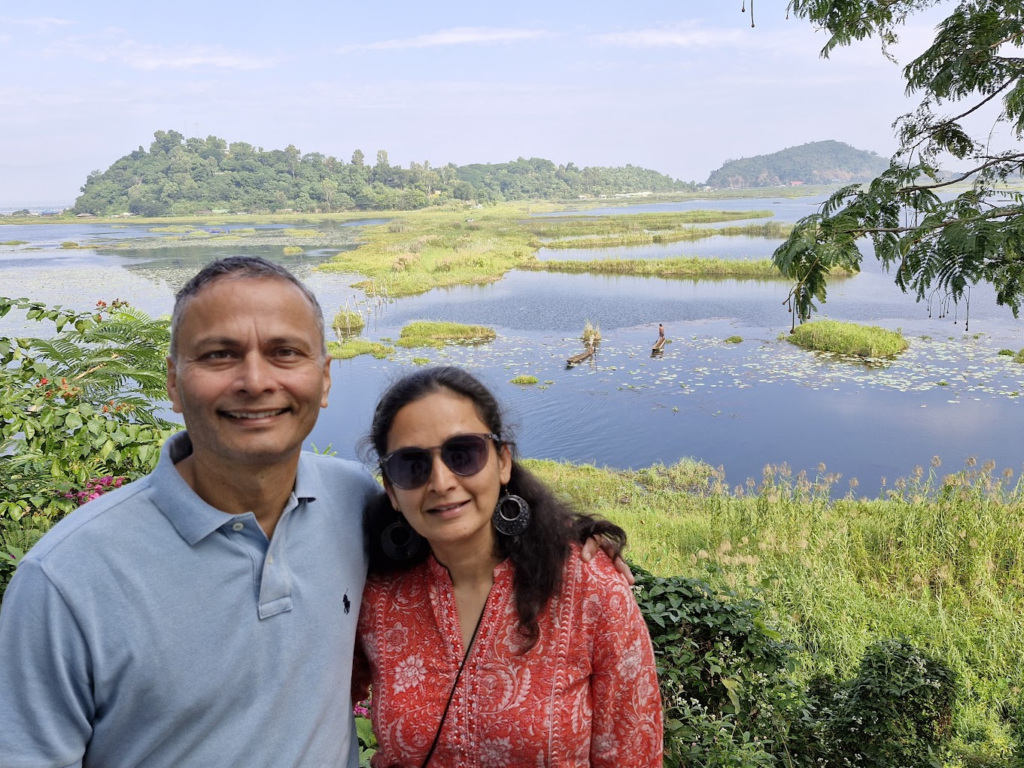
A trip to the Northeast was always on our radar. When Anuradha’s Diwali vacation came up, we thought it was a good time to do this trip. It was a very different experience compared to our other trips. During this trip, we visited Nagaland, Manipur, Mizoram and Tripura. We had already been to Assam and Meghalaya. We decided to do Arunachal Pradesh some other time in the future.
Here is summary of our itinerary:
Nov 2-4: Nagaland (Dimapur, Kohima and vicinity)
Nov 4-6: Manipur (Imphal and vicinity)
Nov 6-8: Mizoram (Aizawl and vicinity)
Nov 9-10: Tripura (Agartala and vicinity)
Sat, Nov 2: Flying from Pune to Dimapur, Kohima (Nagaland)
We took the 3.15 am Indigo flight from Pune to Guwahati on Nov 2 and landed around 6 am. My friend Ajay Tewari had sent a car to pick us up from the airport. The airport protocol staff first took us to the VIP lounge where we waited while they picked up our luggage. The car took us to Ajay Tewari’s home. We got some rest and a nice breakfast before heading back to Guwahati airport at around 9.45 am.
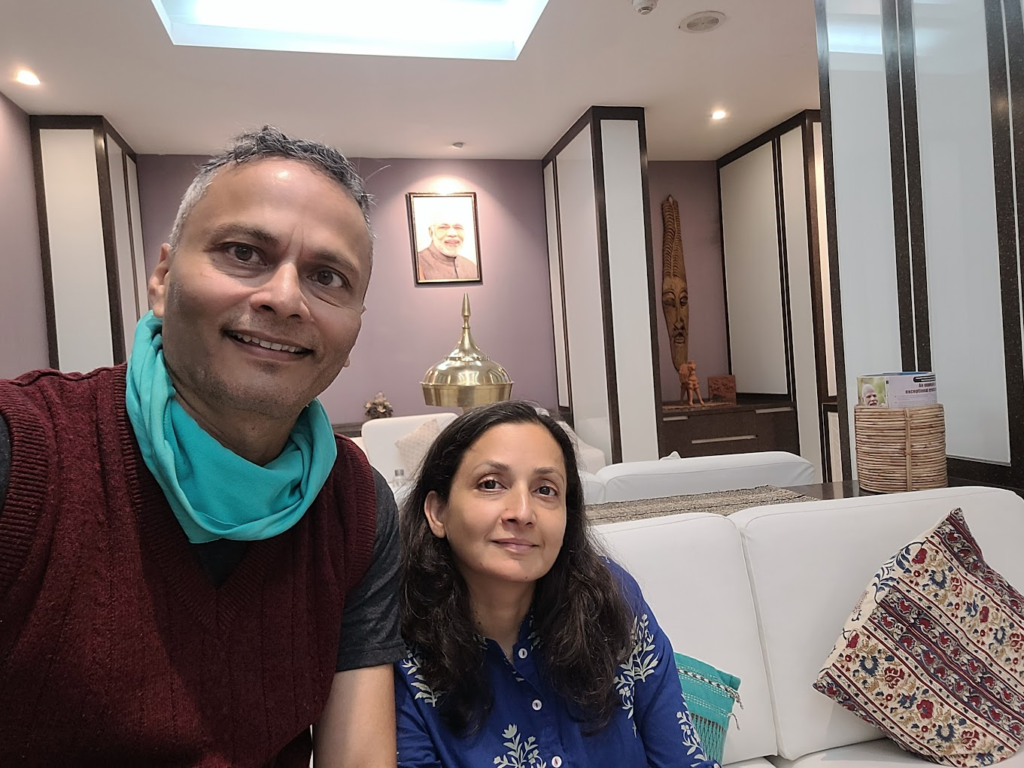

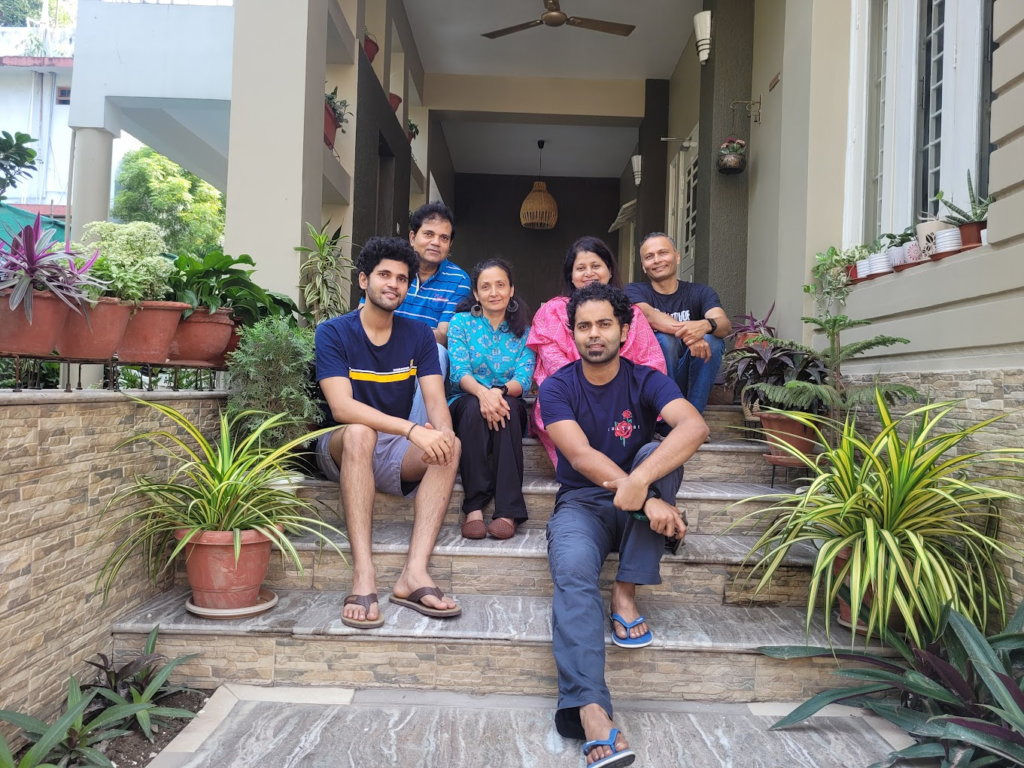
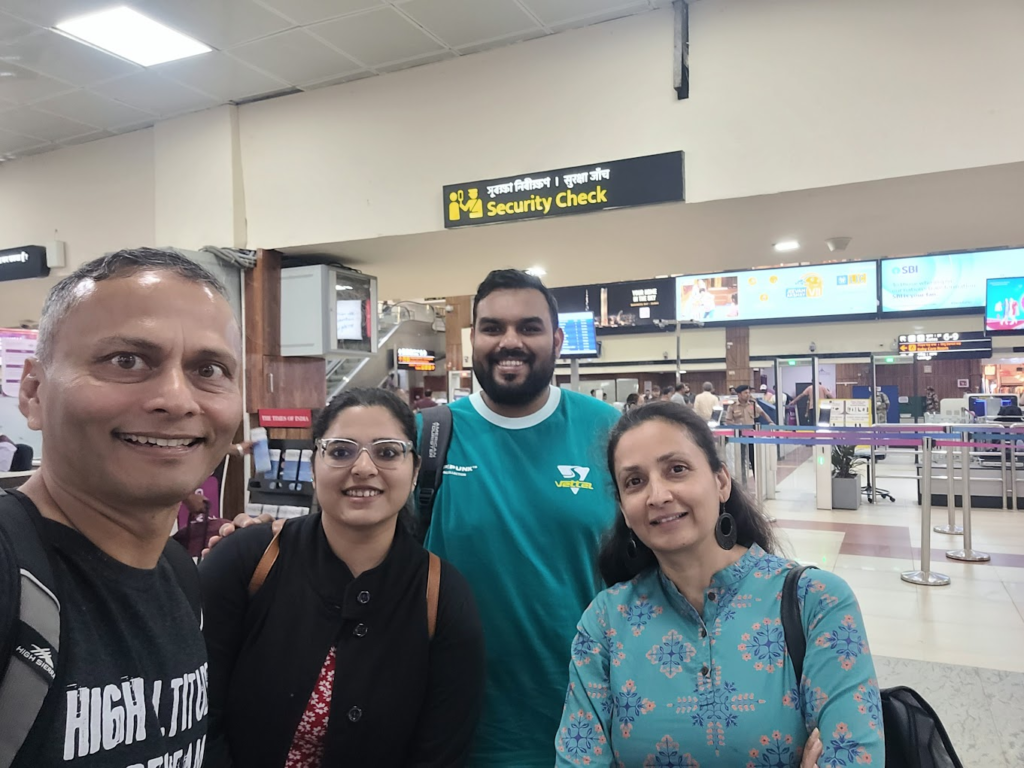
We took the 12.10 pm flight from Guwahati to Dimapur, landing at about 1.15 pm. We had arranged for a driver to pick us up at Dimapur airport and be with us while we visited Kohima and back to Dimapur airport on Nov 4. Dimapur is a flat city compared to Kohima which is a hilly city.
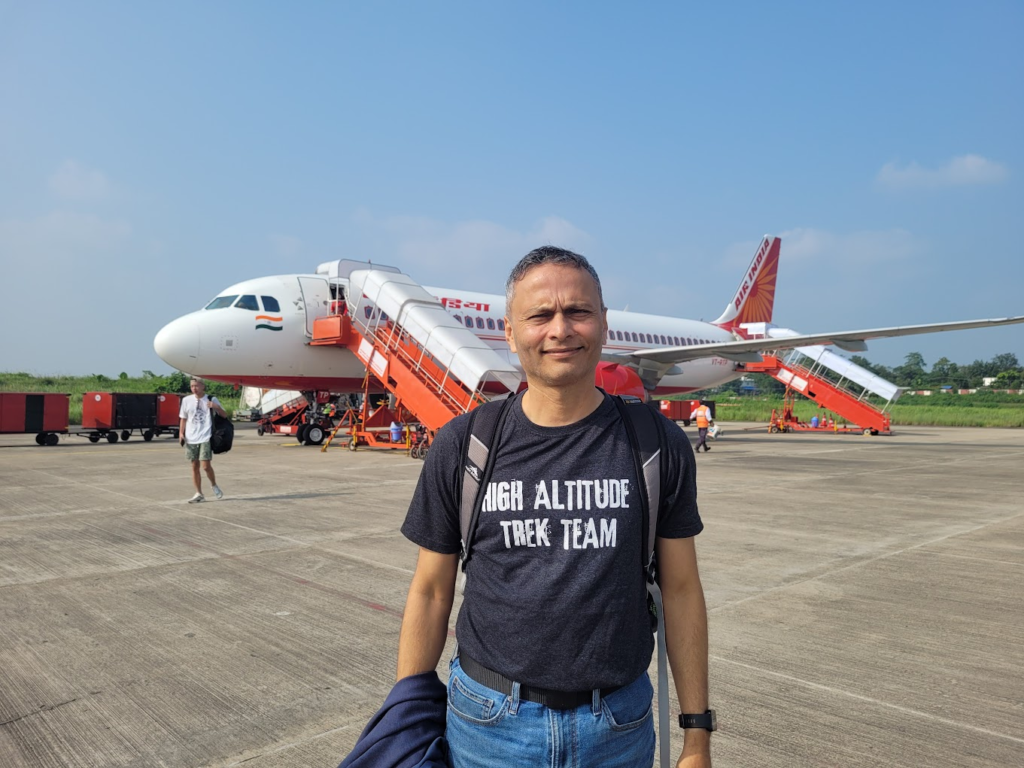
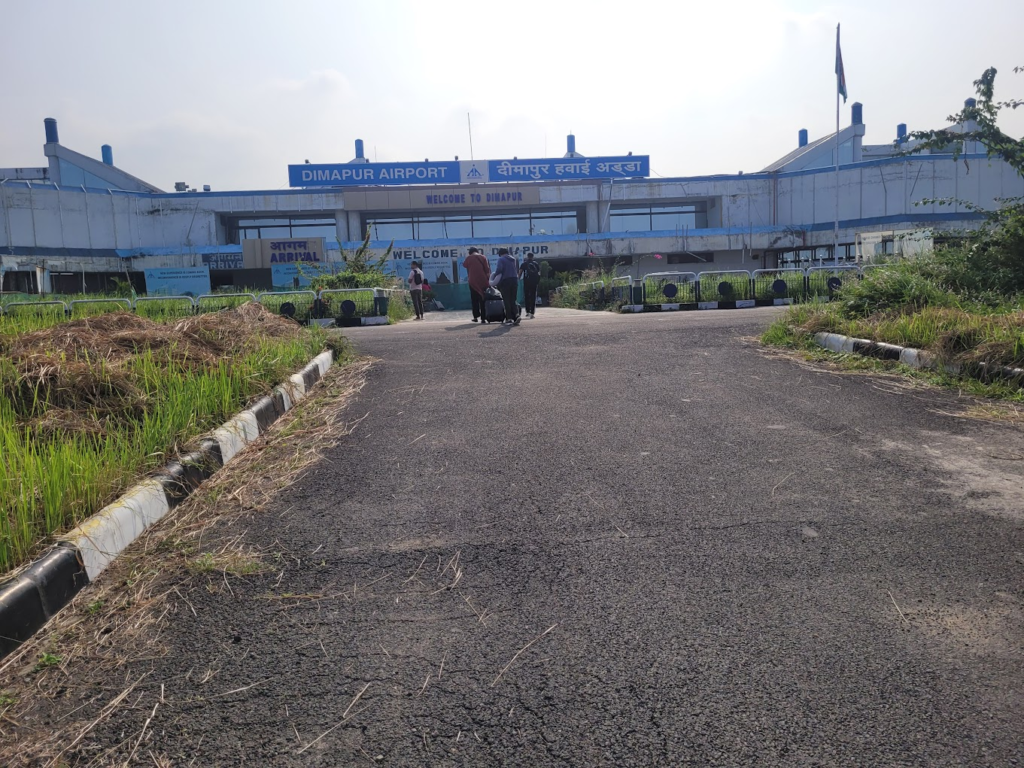
We first visited the Kachari ruins in Dimapur. Ruins of Kachari Rajbari are a set of medieval monuments whose history dates back to the 10th century when they appeared during the Kachari civilization. The Kachari Rajbari Ruins are a series of mushroom domed pillars. They were created by the Kachari Kingdom, which ruled Dimapur before the Ahom invasion into the territory during the 13th century. Their origin and purpose are largely mysterious. The pillars are not well maintained. Some pillars still stand in all their glory but others have crumbled down. It is believed that a game similar to chess was played there with the mushroom domes.
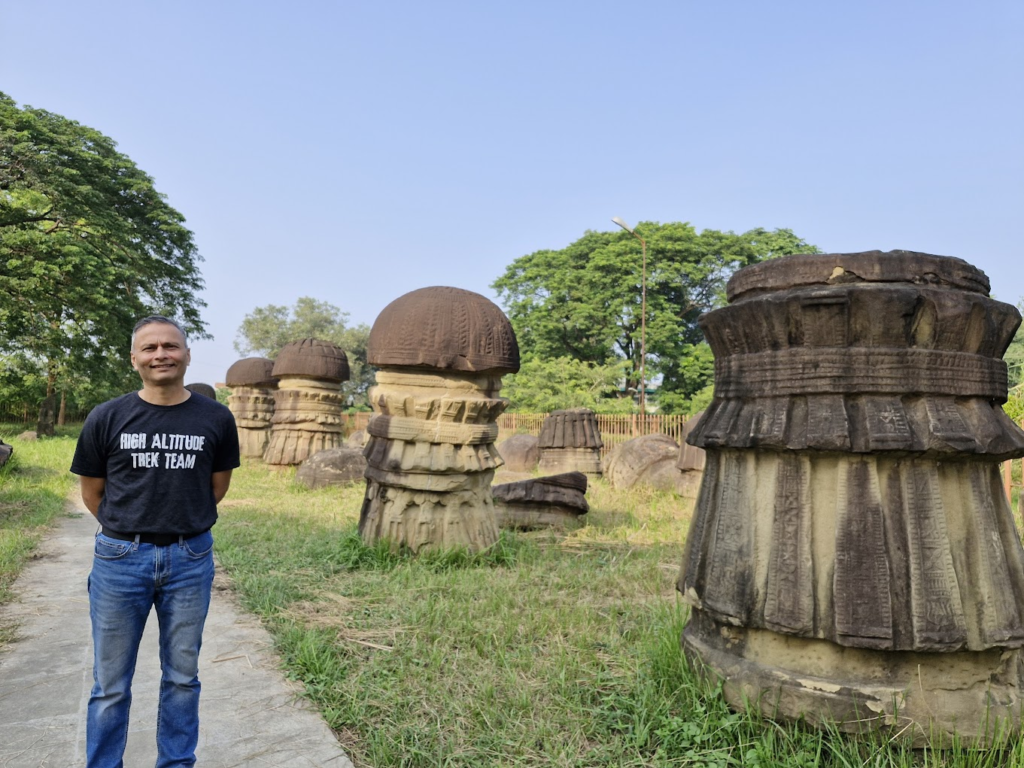
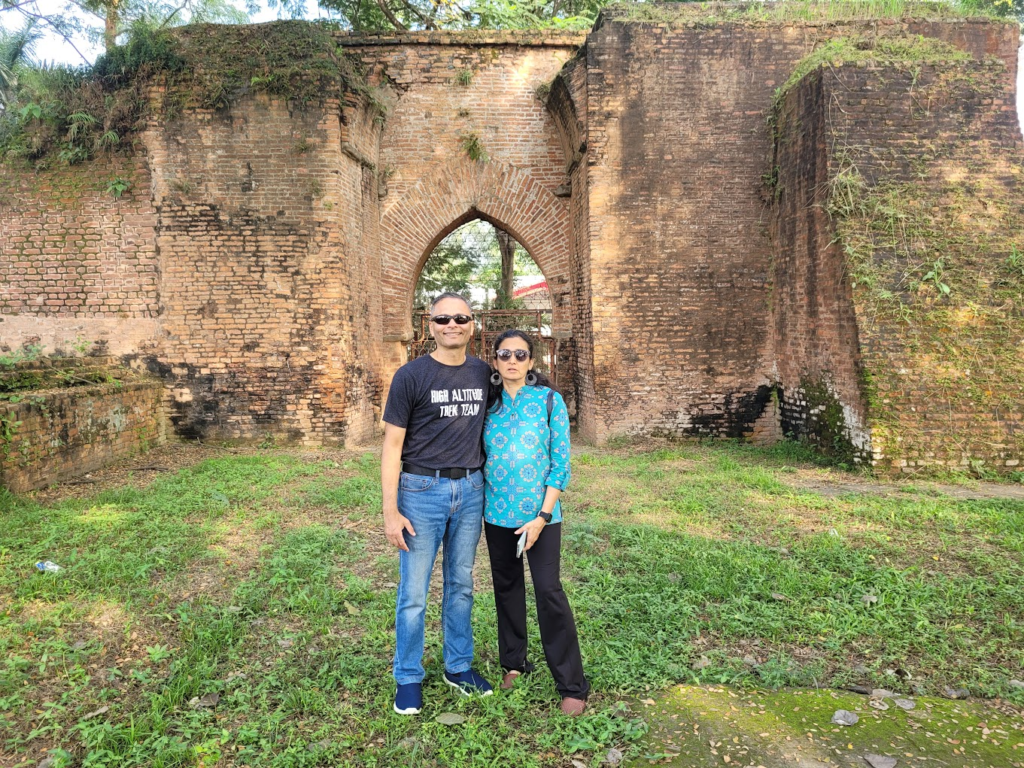
From there, we tried to go to Triple Falls, but we were not successful in finding the place. Additionally, we were running out of time. So we decided to skip Triple Falls and proceed to Kohima. The distance from Dimapur to Kohima is only about 70 km. But it took us nearly 2.45 hours to get there. The road quality was very poor, lot of half constructed roads, rock slides. As we approached Kohima, we could see the lights of the city nestled in the hills. Kohima is a completely hilly city with houses on the hills, very pretty.
We reached Akim Homestay at Kohima on Billy Graham Road at around 5.30 pm. It was already pitch dark. Compared to Pune, it gets dark 1.30 hours earlier.
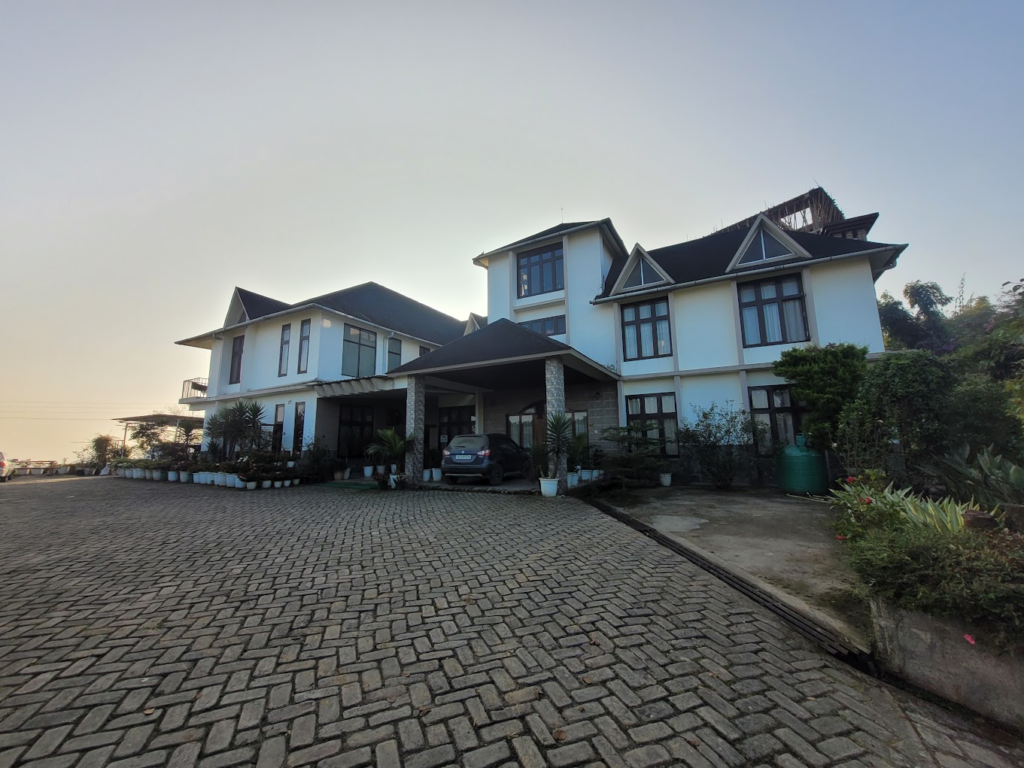
Akim Homestay was a little far from the main city. The room was barebones, not bad, but not great. We looked for a restaurant in the vicinity. We found a restaurant called the Deccan Kitchen. We went there at 7 pm. The restaurant was fairly empty, but the food was decent and the ambience was great. Finding regular Indian food was not a problem.


We went to sleep early on Sat, Nov 2.
Sun, Nov 3: Kohima, Nagaland
We started our day with breakfast at 7.30 am at the homestay and headed out at 8 am. Kohima is a really pretty city set in the hills.
Our first stop was Japfu Peak, a 10,000 ft tall peak about 15 km south of Kohima. We really wanted to climb that peak, but it would have taken us 6-8 hours and there was hardly anyone on the trail. Therefore, we could not have done it without a tour guide. So we drove to the base of the trail, took some photos and came back.
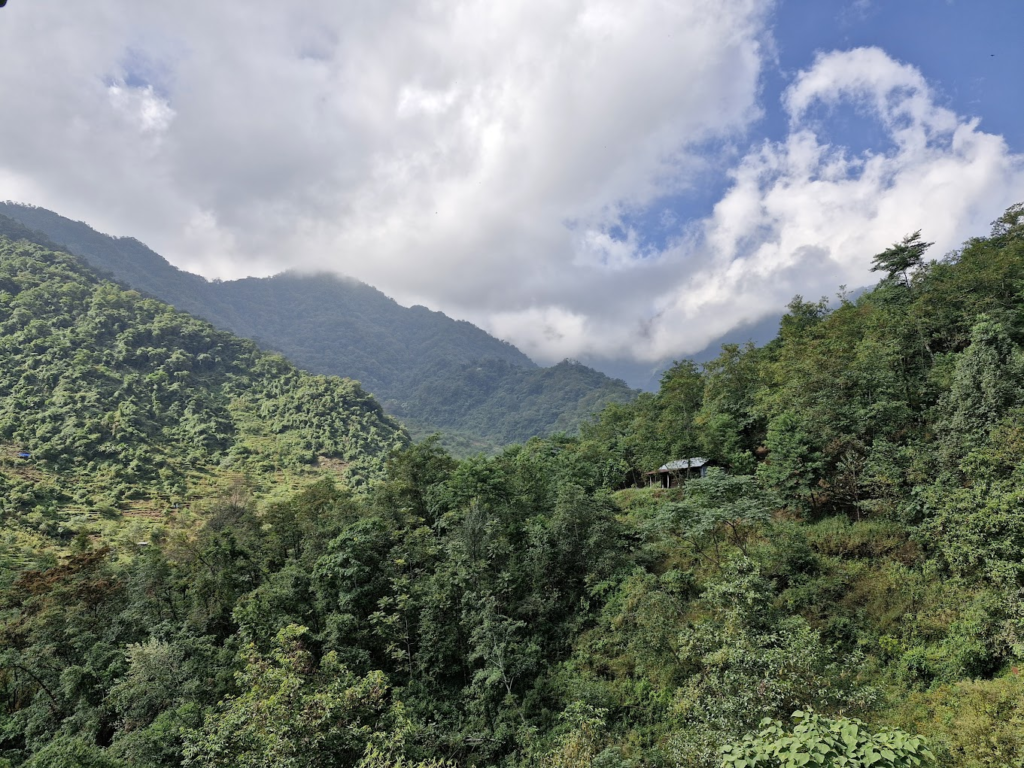
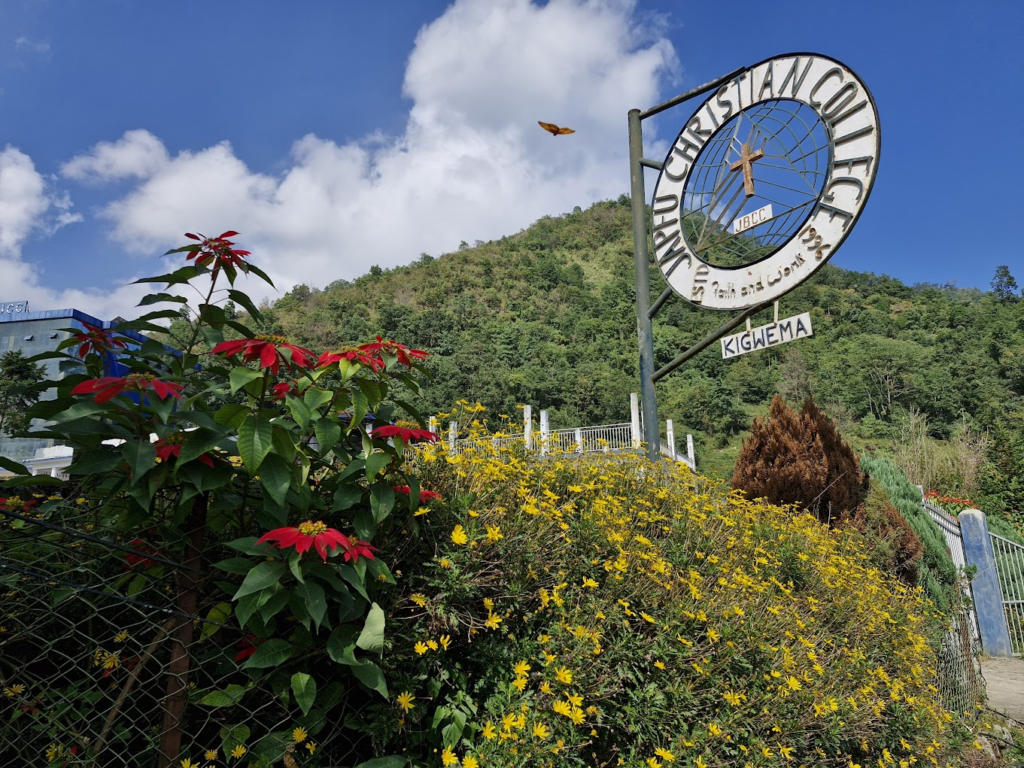
Next destination was Kisama, a Heritage Village located on the slopes of a hill between Kigwema and Phesama Villages in the Kohima District of the Indian state of Nagaland. The Heritage Village is the venue of the annual Hornbill Festival held at the beginning of December every year. The Heritage Village houses the morungs of all the 17 ethnic groups of Nagaland and is designed in the form of an ancient Naga village to give the feel of an authentic traditional Naga village.
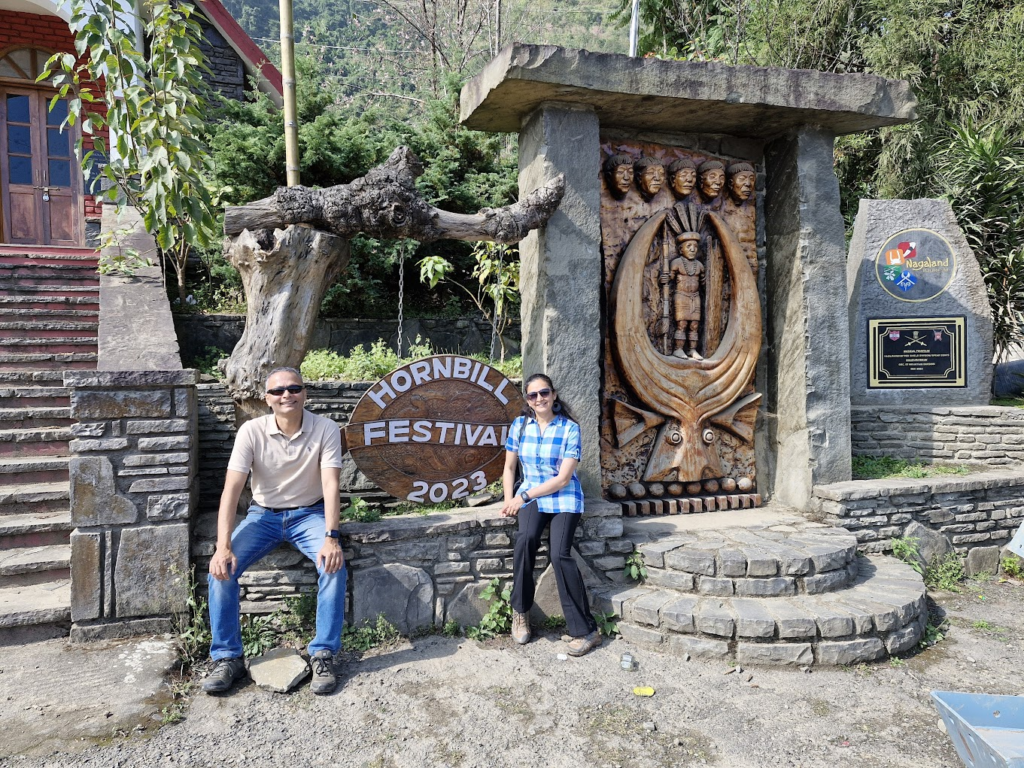
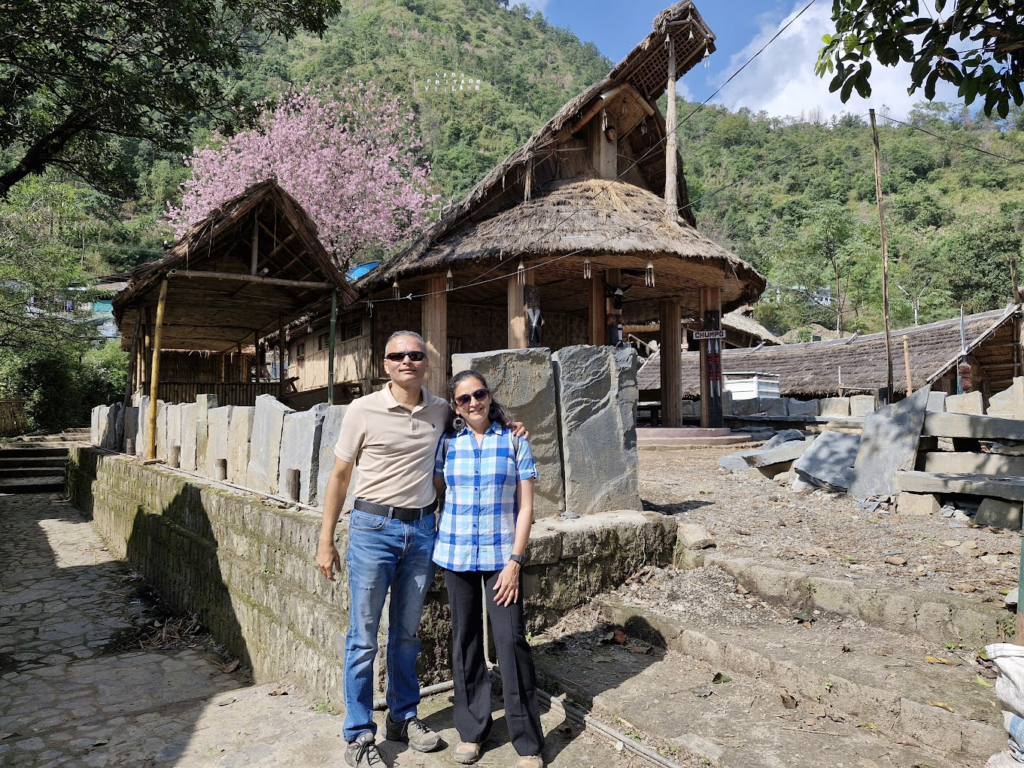
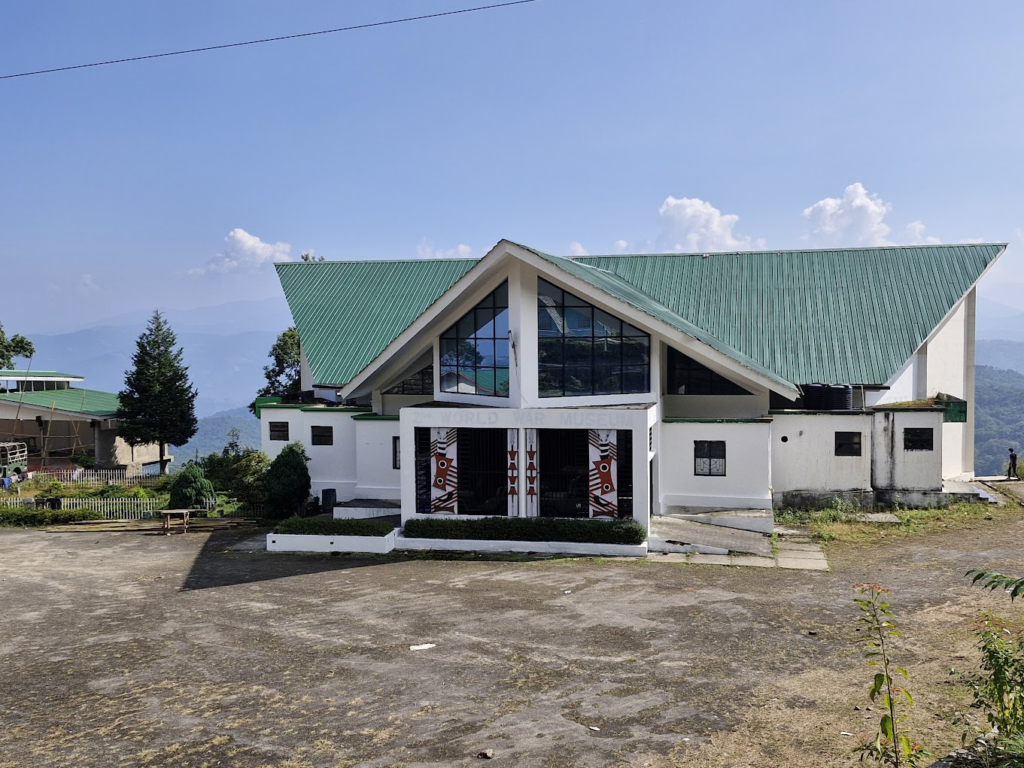
We proceeded to the Kohima Cathedral, the main church of Nagaland, India. The church is noted for its architecture which incorporates many elements of traditional Naga houses, including its facade which resembles that of a Naga house. The architecture of the cathedral blends into the hill on which it is situated. The 16 feet high carved wood crucifix is one of Asia’s largest crosses. The cathedral was conceptualised by the first bishop of Kohima, Abraham Alangimattathil. The cathedral complex also contains Bishop Alangimattathil’s tomb. The construction commenced in 1986 and the church was consecrated in January 1991. After the British conquered the Naga Hills in the late 1800s, the missionaries converted the tribals in the Naga Hills to Christianity. Therefore, English is widely used.
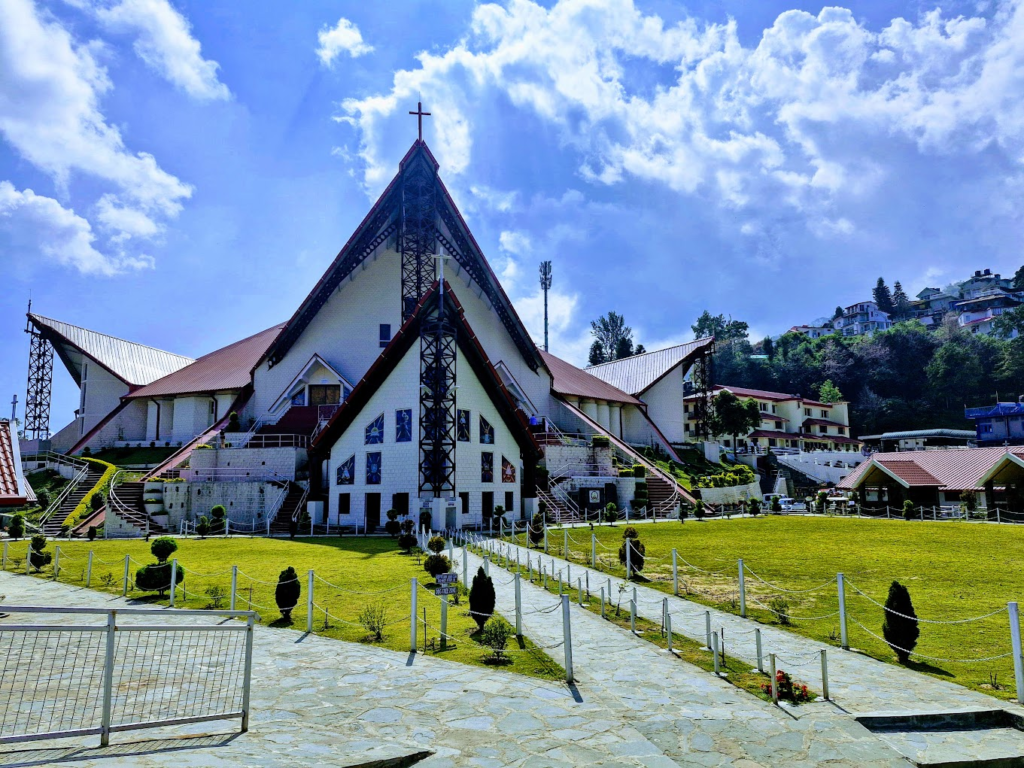
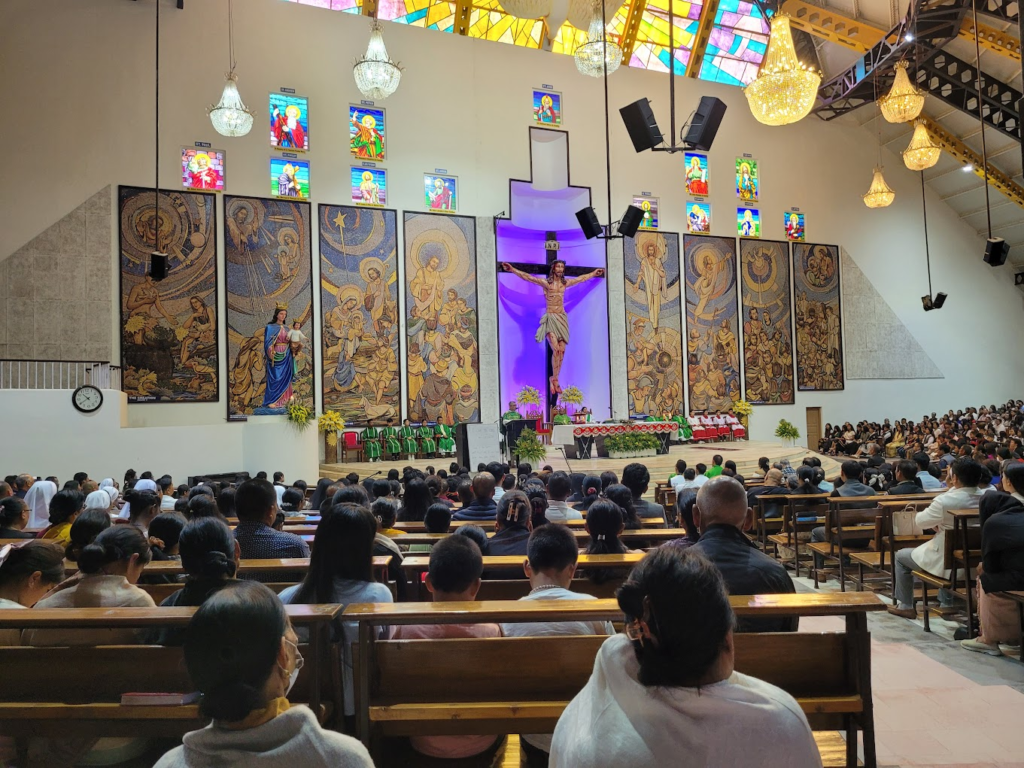
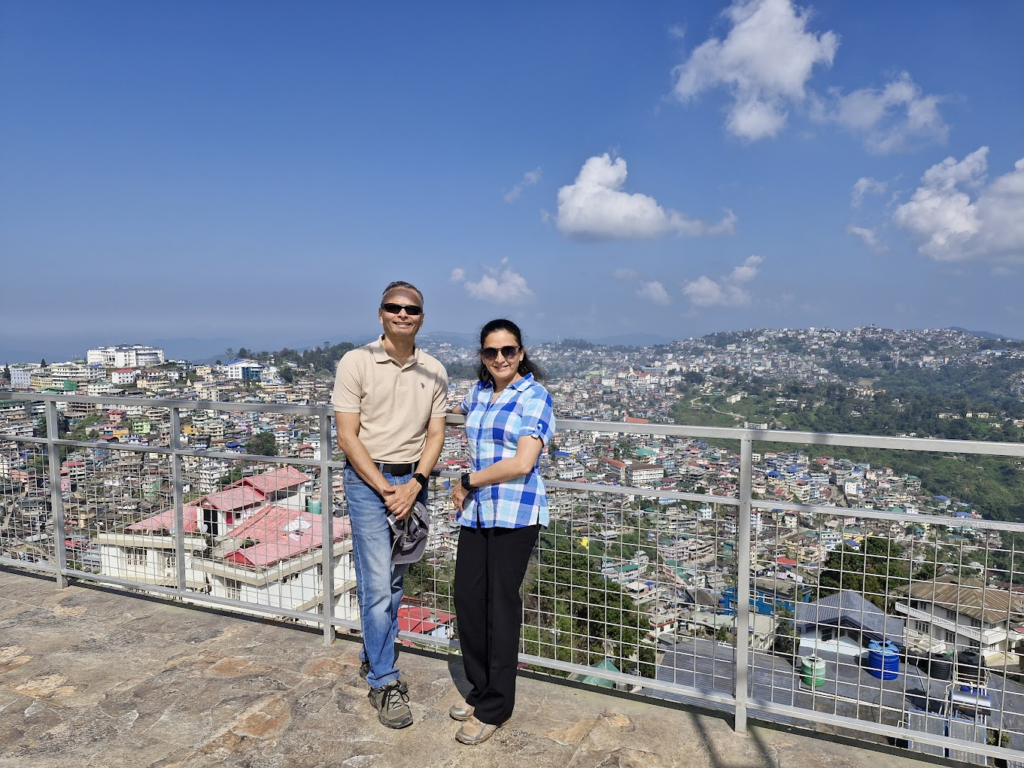
We really wanted to do some trekking in that region, so we went to Pulie Badze, a mountain peak at 7,500 ft height. We wanted to climb all the way, but due to the Sunday, everything was closed. There was not a single soul in sight, as we climbed. We trekked for about 2.5 km up, until we started feeling very uncomfortable with the lonesome nature of our trek. So we stopped at a midway viewpoint and turned back.
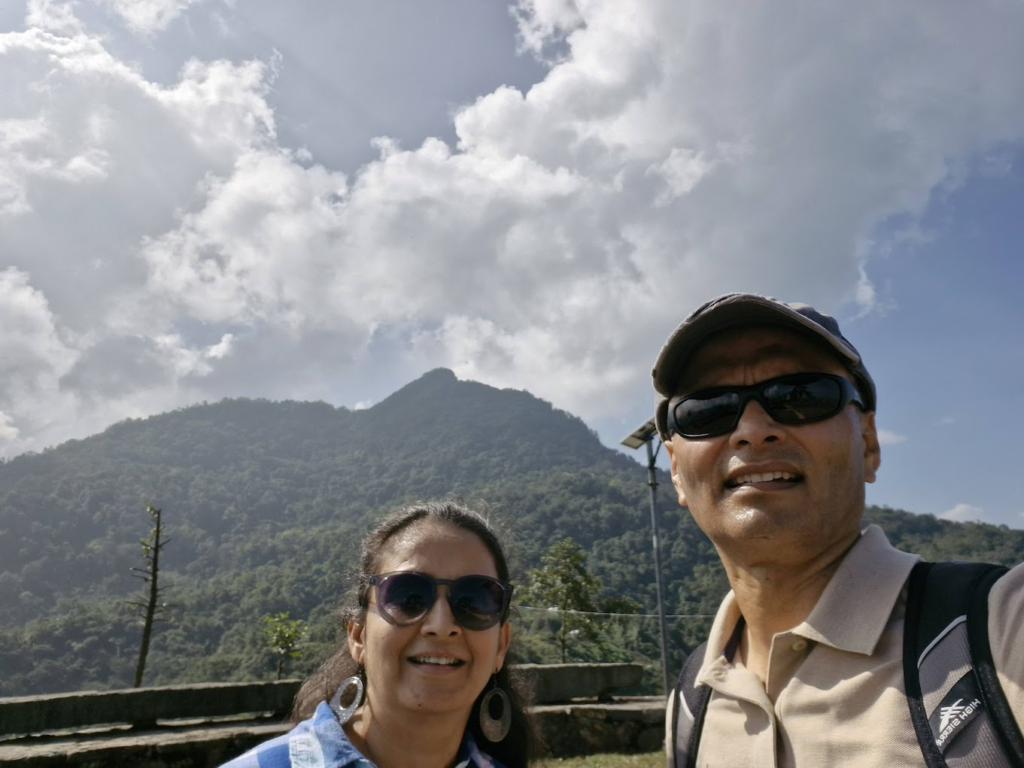
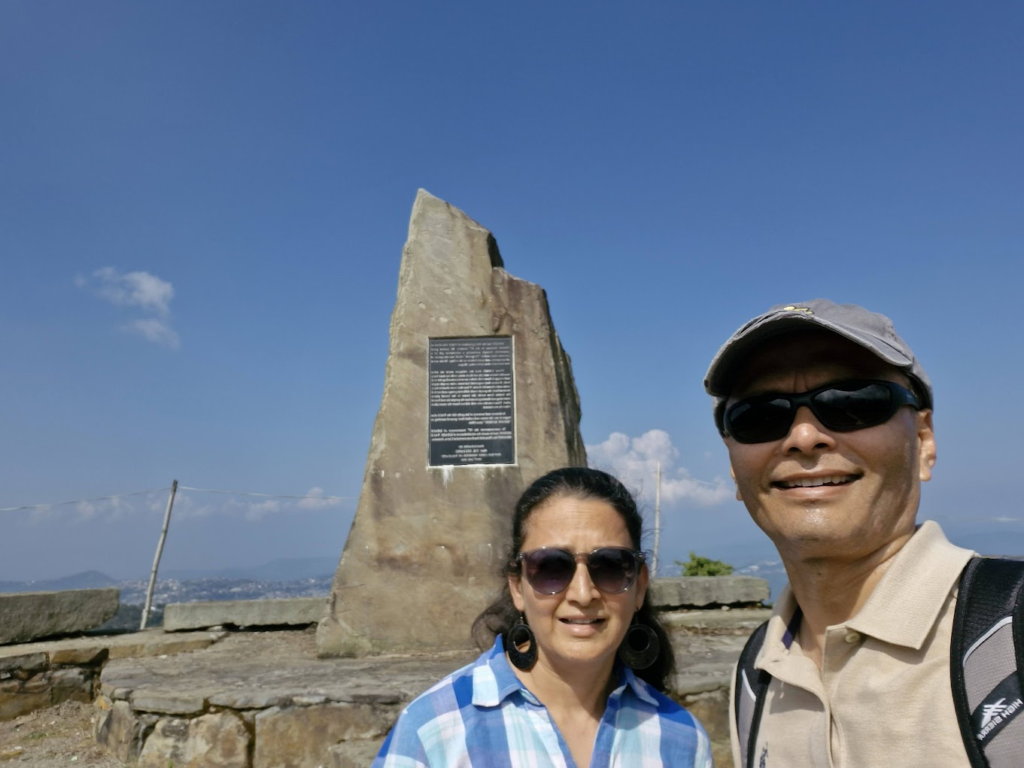
After getting back to the car, we drove to Khonoma village located about 20 km west from Kohima. The village is referred to as Khwüno-ra (named after the Angami term for a local plant, Glouthera fragrantissima). The total population of the village is about 1943, settled in 424 households. Not sure why, but it is called the first green village in India.
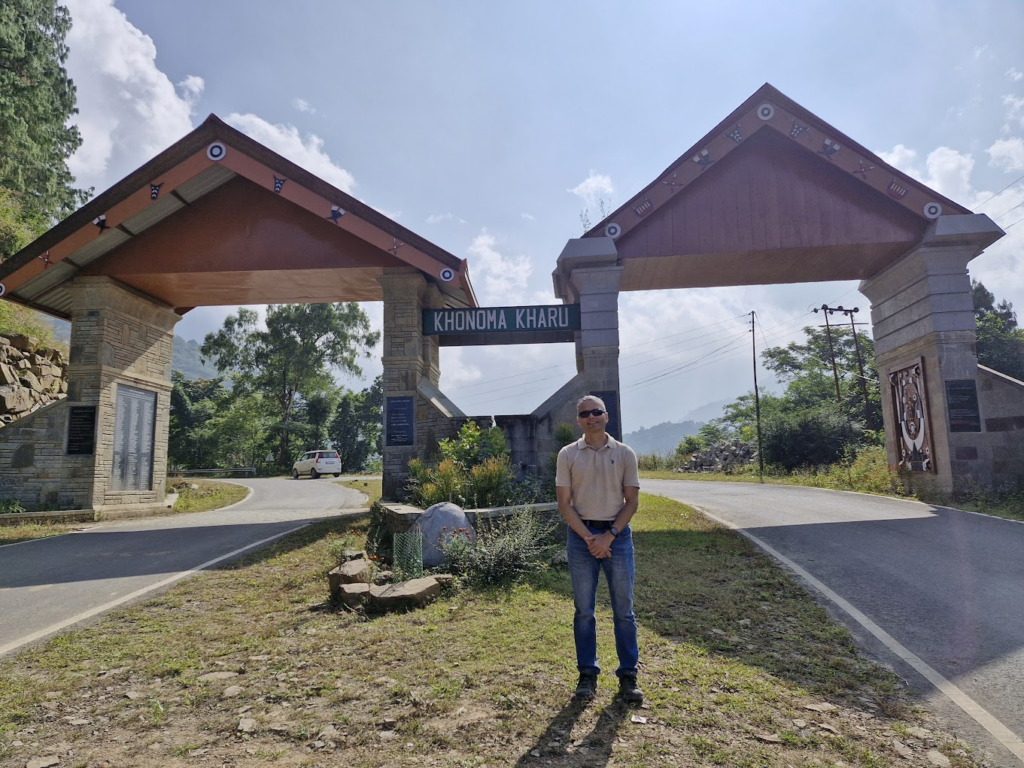
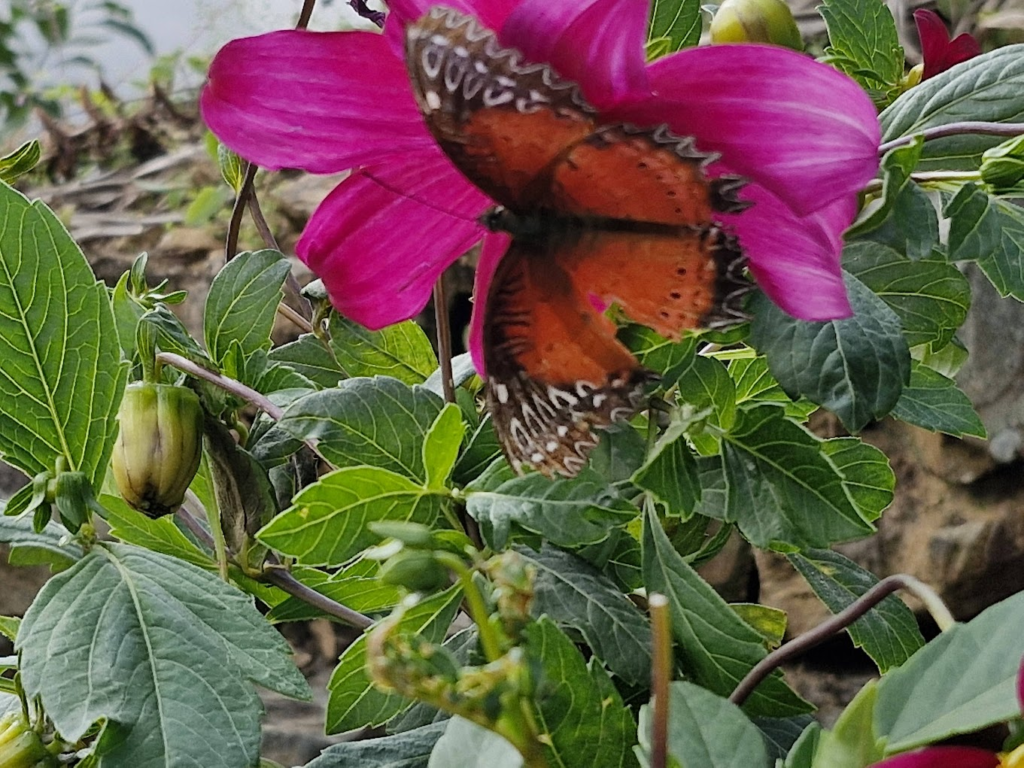
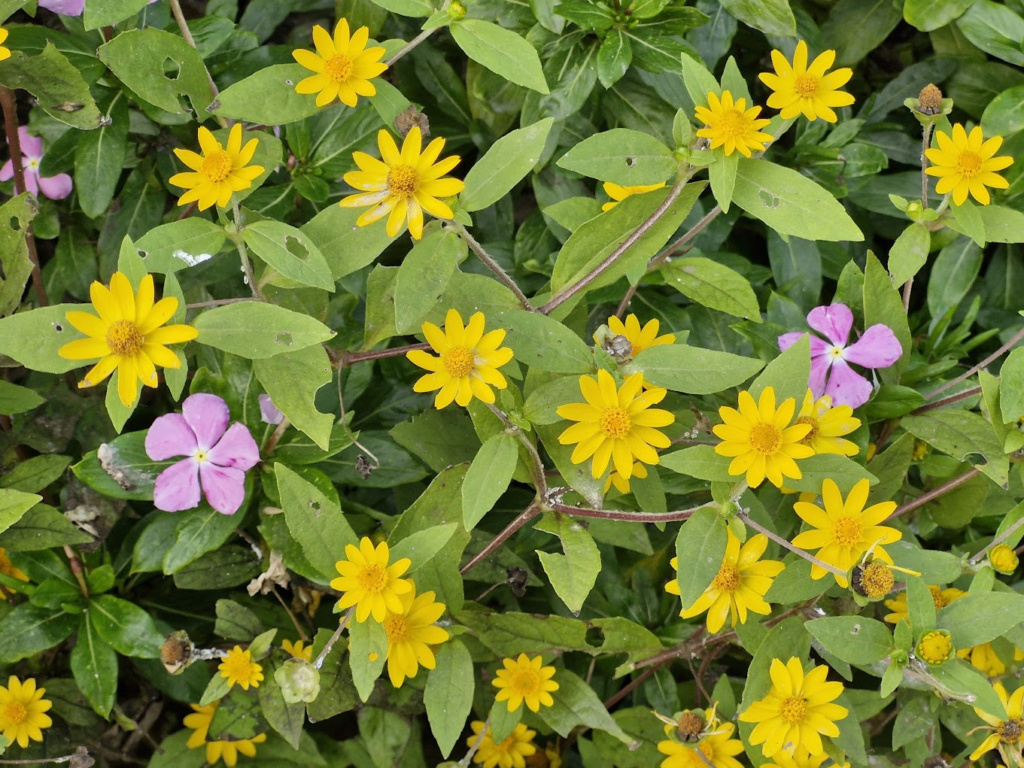
From 1830 to 1880, Angami Naga warriors from Khonoma fought a series of fierce battles against the British to stop them from force recruiting Nagas as bonded labourers. On 13 October 1879, Guybon Henry Damant, a political officer of the Naga Hills, led a troop of 87 British soldiers to Khonoma to enforce a tax and the British recruitment of bonded labour. The British troop was ambushed by the Angami warriors on 14 October and in the ensuing battle, 27 British including Damant were killed. The tomb of Damant is located at the top of the hill, great views from the location.
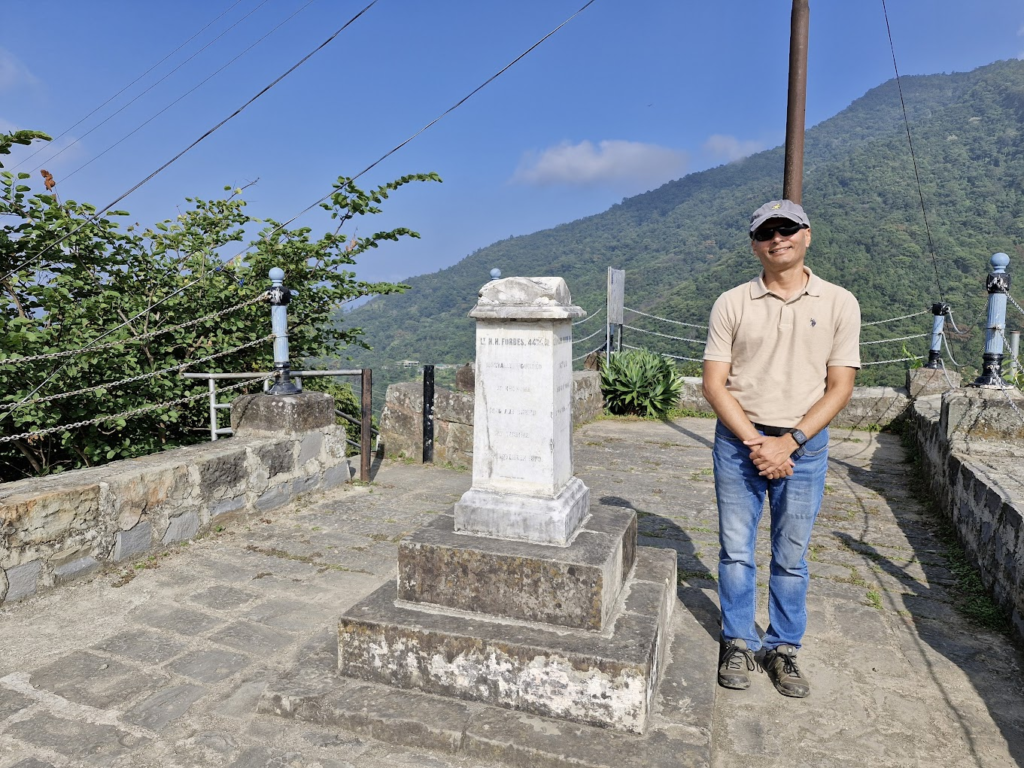
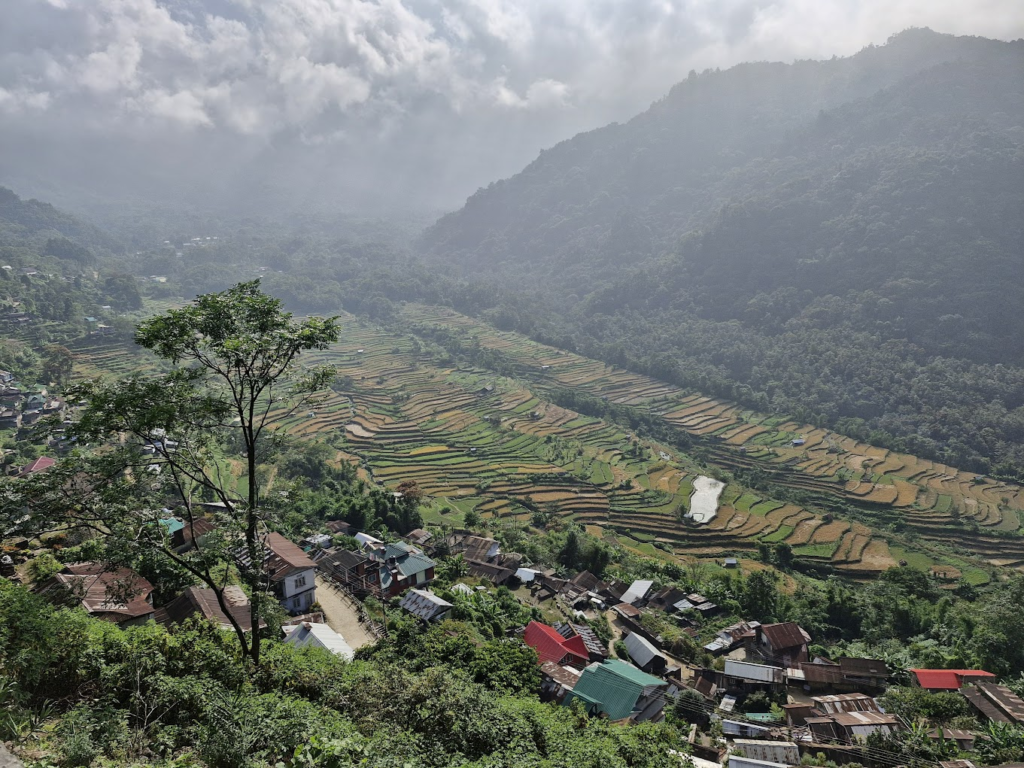
On the way back from Khonoma to Kohima, we stopped at the Khriesaneisa Memorial, a monument dedicated to the first president of the Nagaland Federal government between 1956-59. At that time, the Nagas believed that they were not Indians. There was a protracted insurgency before Nagaland was carved off from Assam and got full statehood in 1963.
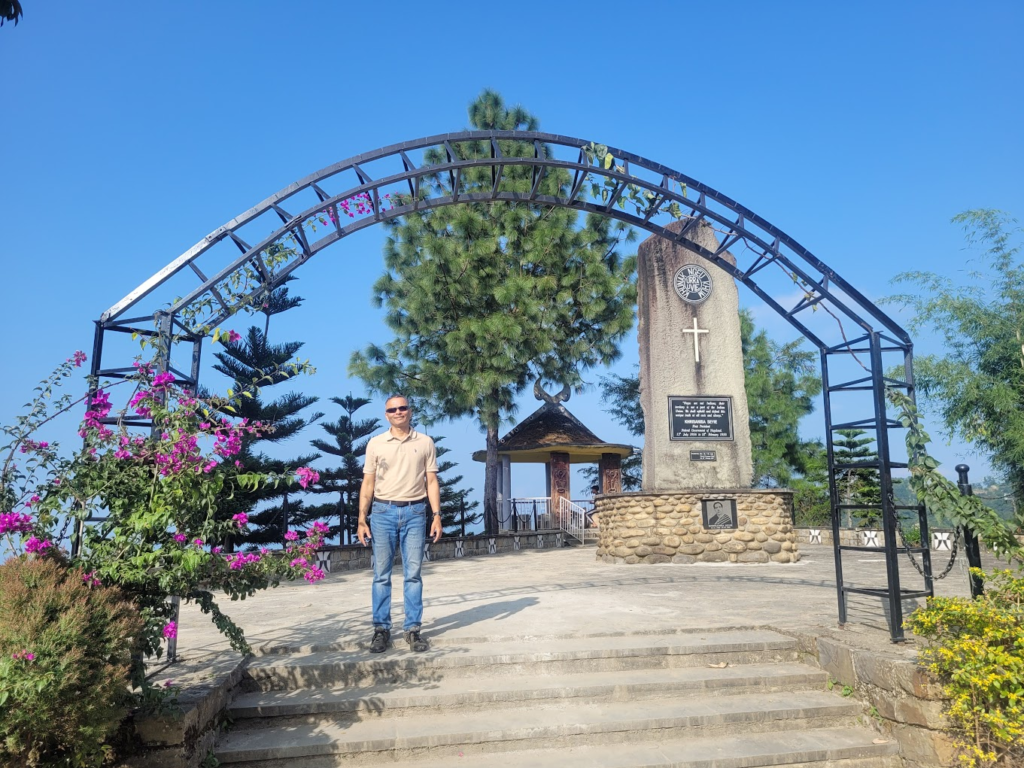
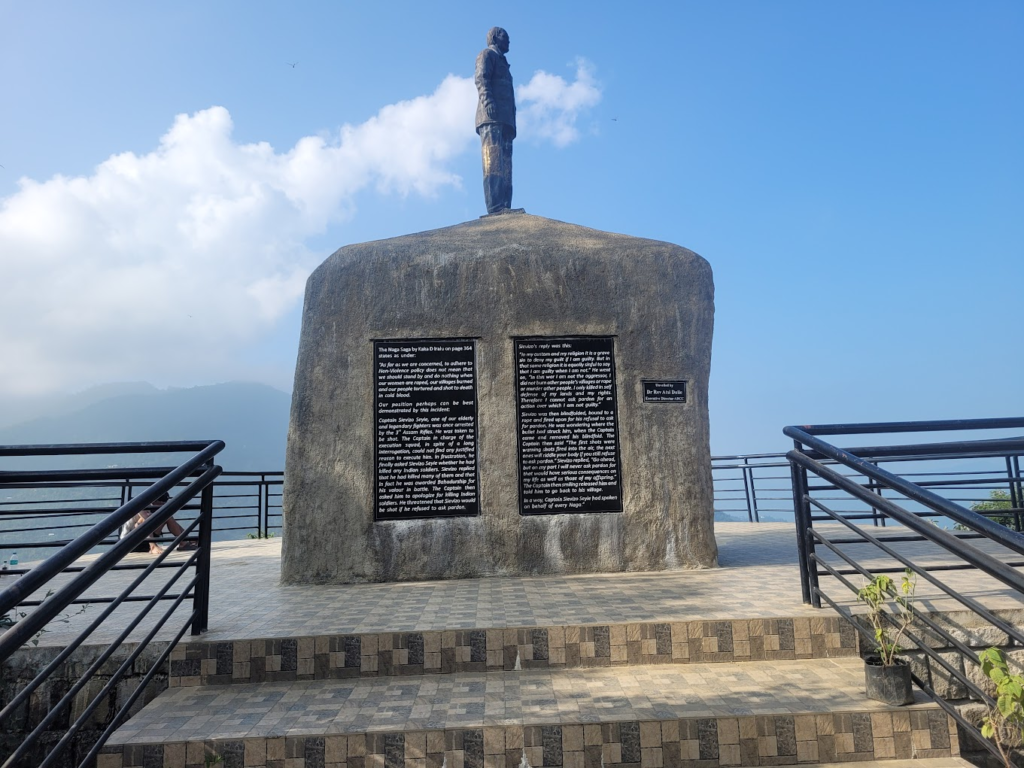
On the way back to Kohima, we stopped at the British War Cemetery, dedicated to fallen soldiers who fought against the Japanese and the Indian National Army of Subhas Chandra Bose. The victory for the British at Kohima was instrumental in pushing the Japanese back into a withdrawal. The cemetery has graves of British, Hindu and Muslim soldiers in different sections.
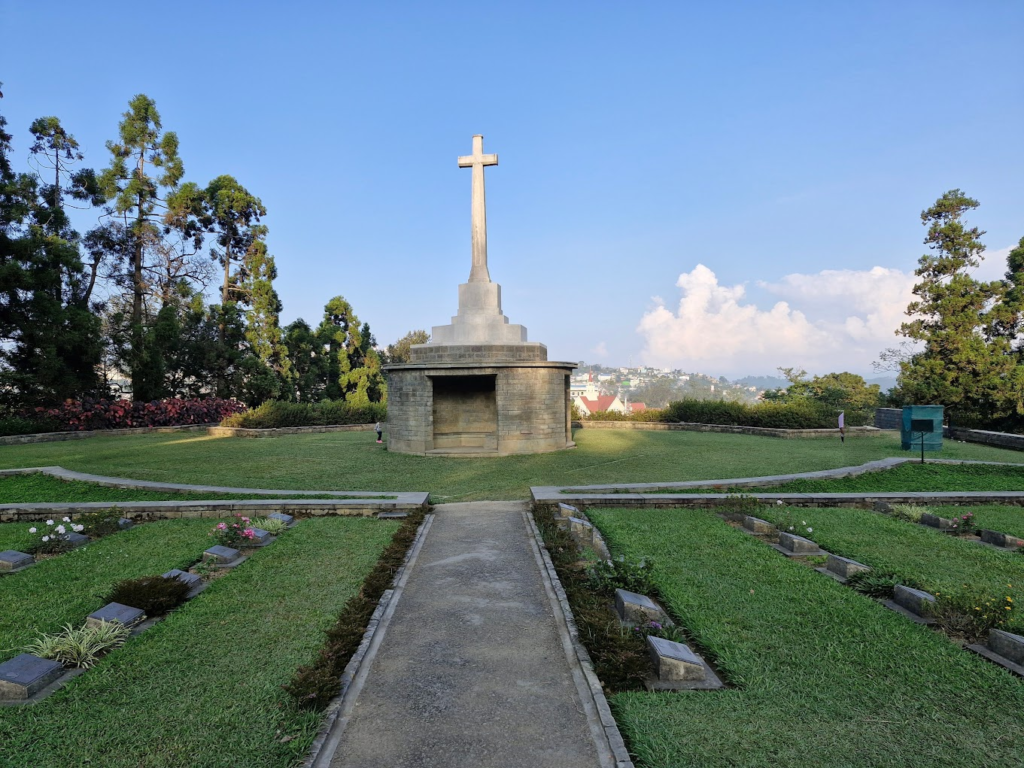
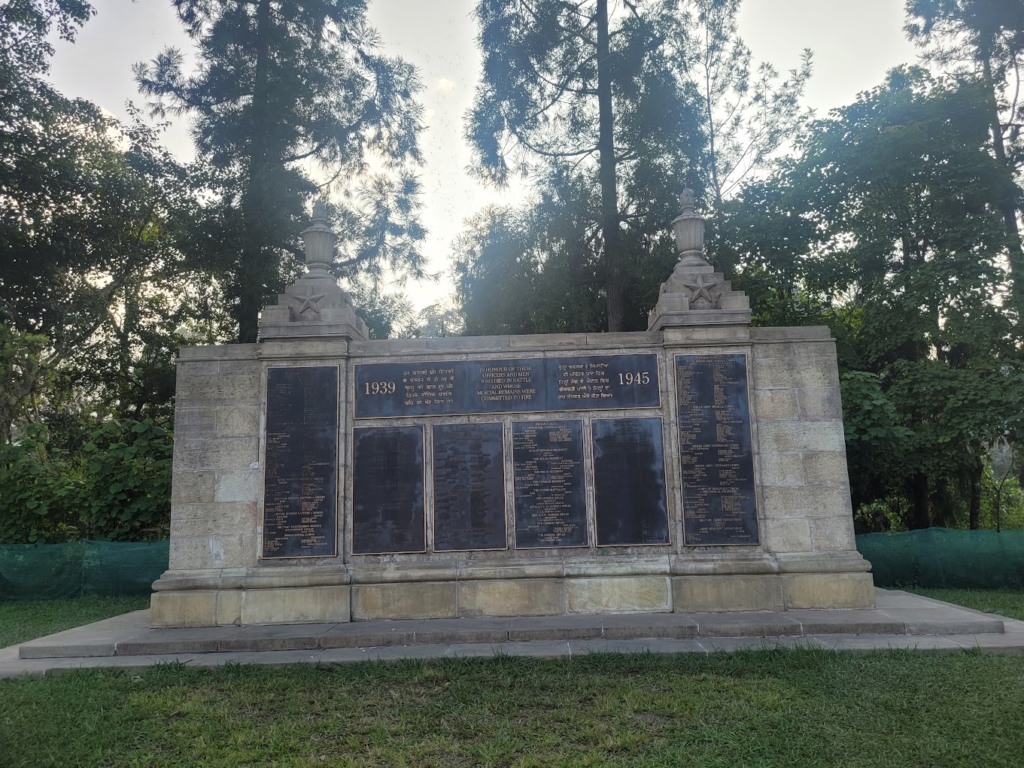
We visited the Naga State Museum, but again it was closed due to Sunday.

Final stop was the Governor’s house in Kohima. We finished our day with that visit.
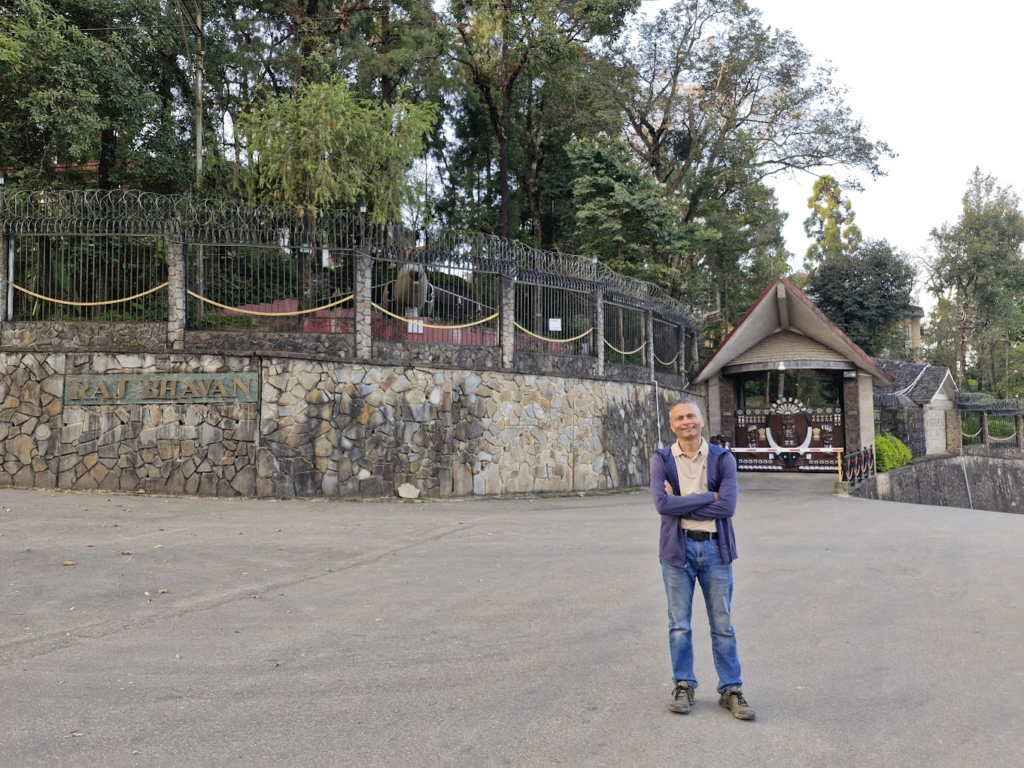
We ate icecream at Baskin Robbins and picked up some Domino’s pizza. We took it back to Akim Homestay and ate our dinner there.
Mon, Nov 4: Kohima -> Imphal, Manipur
Originally, we had planned to drive the 150 km distance from Kohima to Imphal spanning about 5 hours. However, the road quality is really bad. Additionally, there was trouble in Manipur between the Kukis (in the hills) and Meiteis (in the Imphal Valley), riots, roadblocks etc. So we decided to fly from Kohima to Imphal. Unfortunately, there is no direct flight between Kohima and Imphal. So we had to fly through Kolkata, which seemed very roundabout. But we had no choice but to fly.
We took the 10.35 am flight from Dimapur and landed in Imphal at 3.40 pm.
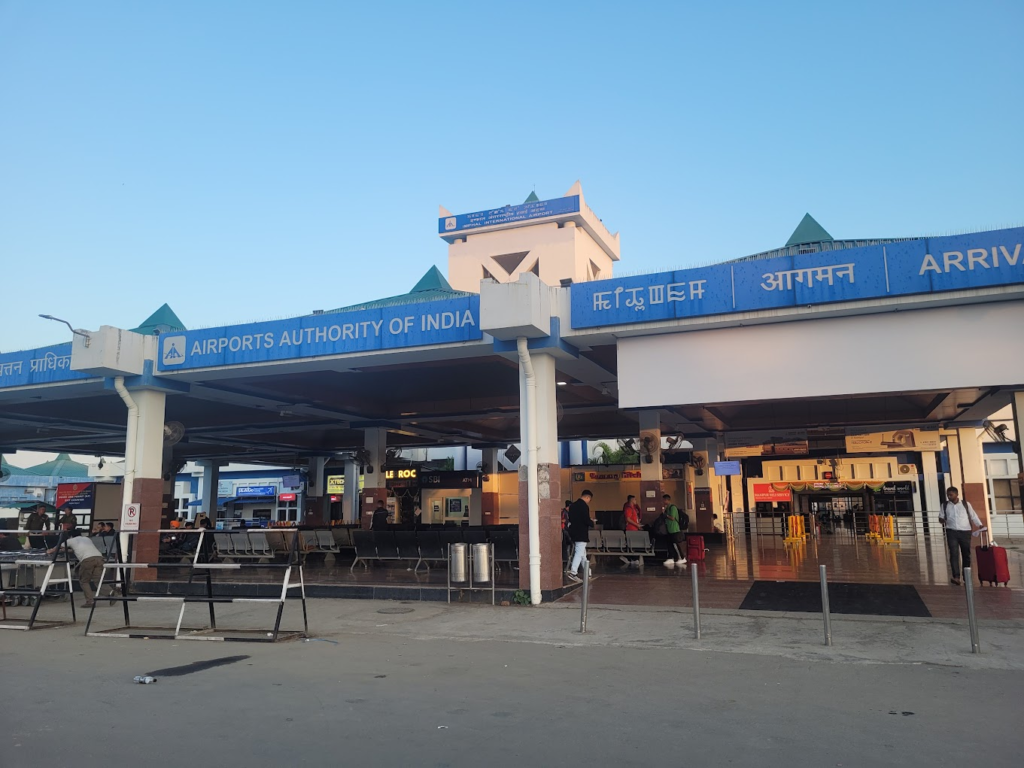
We were picked up by Milan from the Manipur Tourism Department. This was arranged by Vineet Joshi, who is the Chief Secretary of Manipur. Vineet was with me and IIT Kanpur and we used to play table tennis together.
We went straight to the Shri Govindajee Mandir in Imphal. Meiteis are Hindus and Krishna Bhakts. It was very interesting to see the Krishna Aarti at 5 pm.
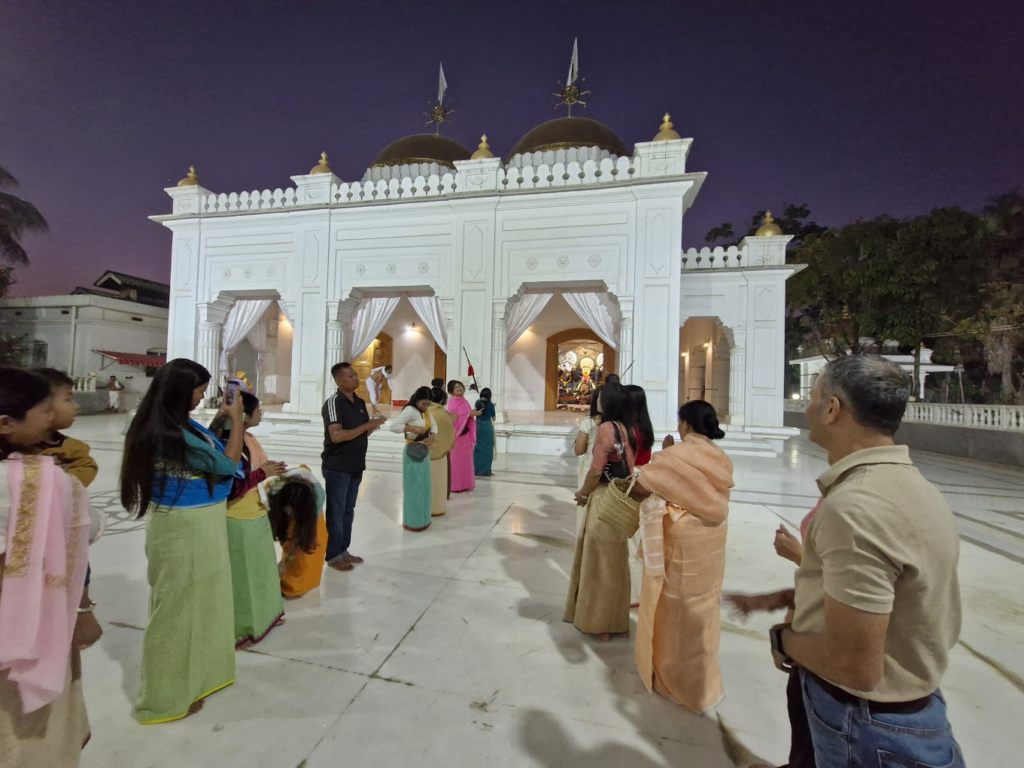
We checked in The Classic Grande Hotel. It turned to be quite good.
We ended the day with a nice dinner at Timber, a nice terrace cafe. We at Pad Thai. It was a nice location with great ambience.
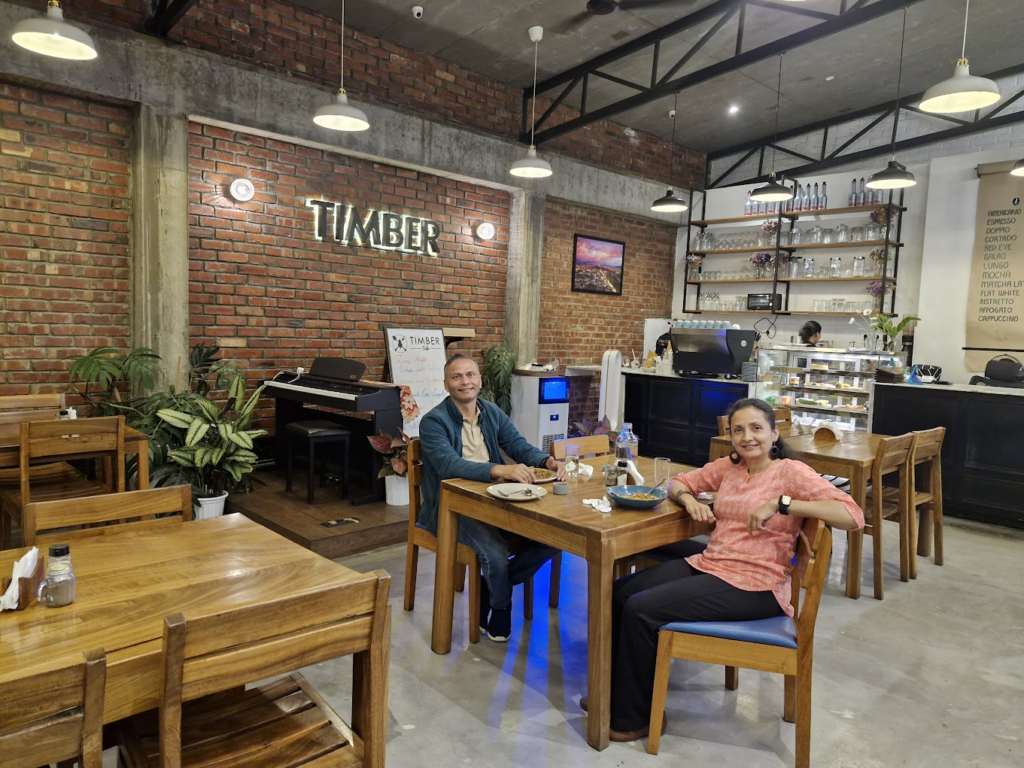

Tue, Nov 5: Imphal, Moirang, Loktak Lake
We had three people from Manipur Tourism dedicated to guide us during our Manipur trip, Milan, Johnny and the driver Romeo.
We started the day early, leaving at 7.30 am from our hotel. We went straight to Loktak lake, a freshwater lake in the Moirang district about 50 km south of Imphal. It is a pulsating lake, with a surface area varying from 250-500 sq. km. It is famous for the phumdi (heterogeneous mass of vegetation, soil and organic matter at various stages of decomposition) floating over it. This was a highly unique experience and highly recommended to anyone visiting the Northeast.
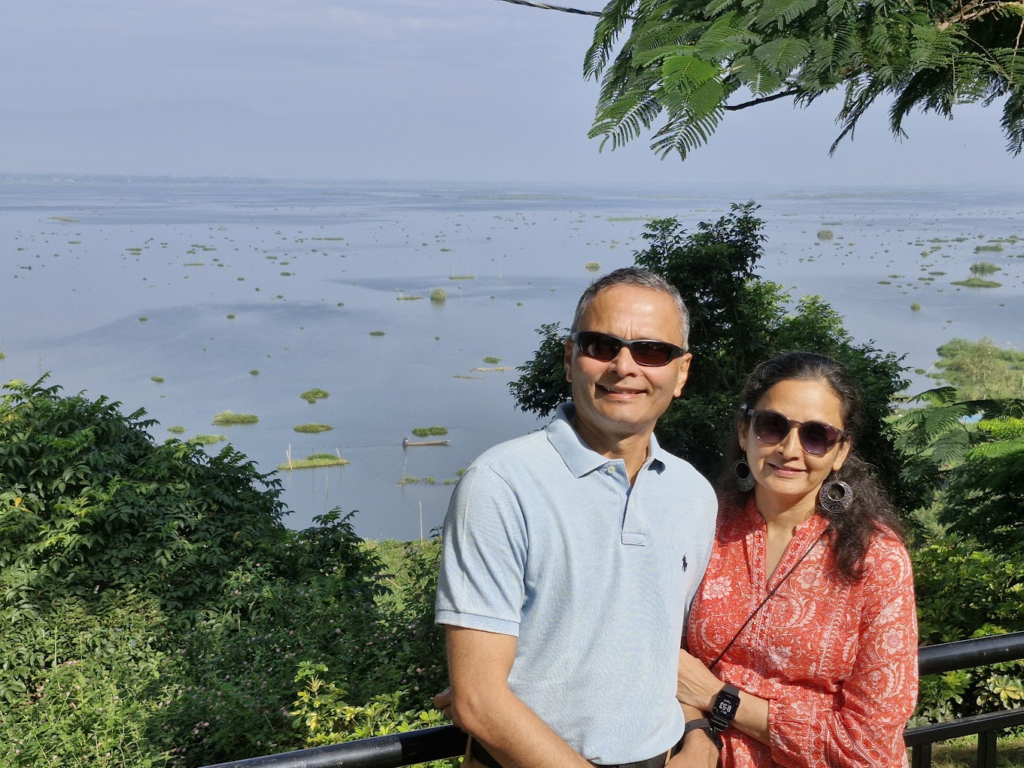
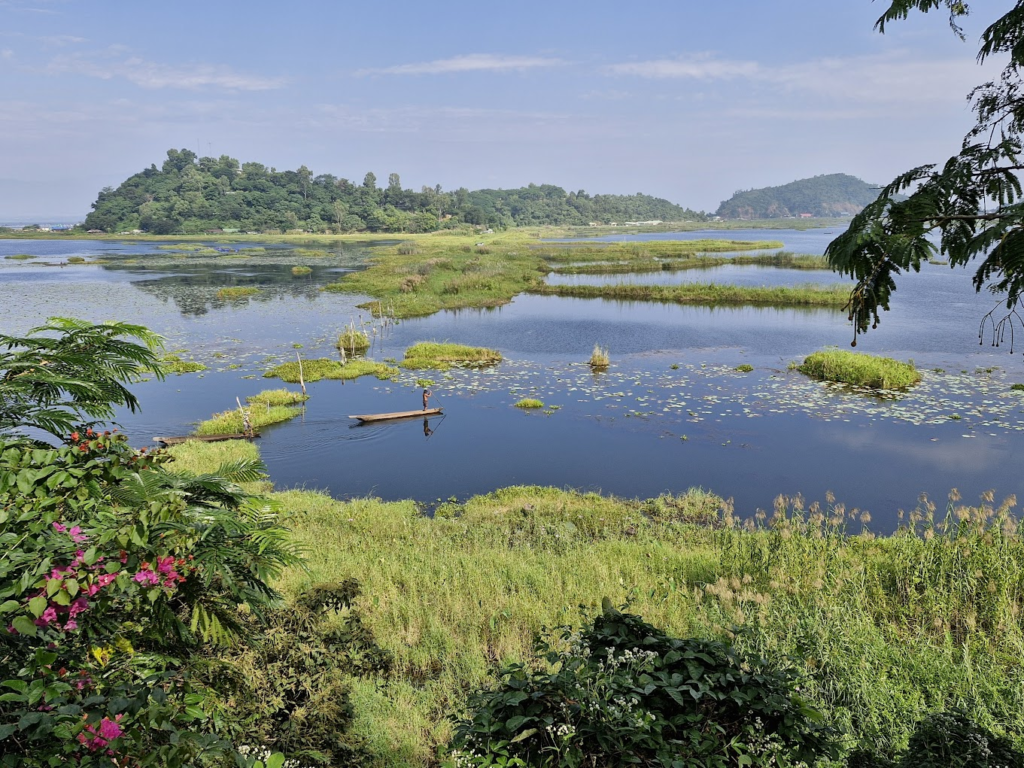
Located on this phumdi, Keibul Lamjao National Park is the only floating national park in the world. It is 40 sq. km. The park is the last natural refuge of the endangered Sangai (state animal, Manipur brow-antlered deer, also the dancing deer).
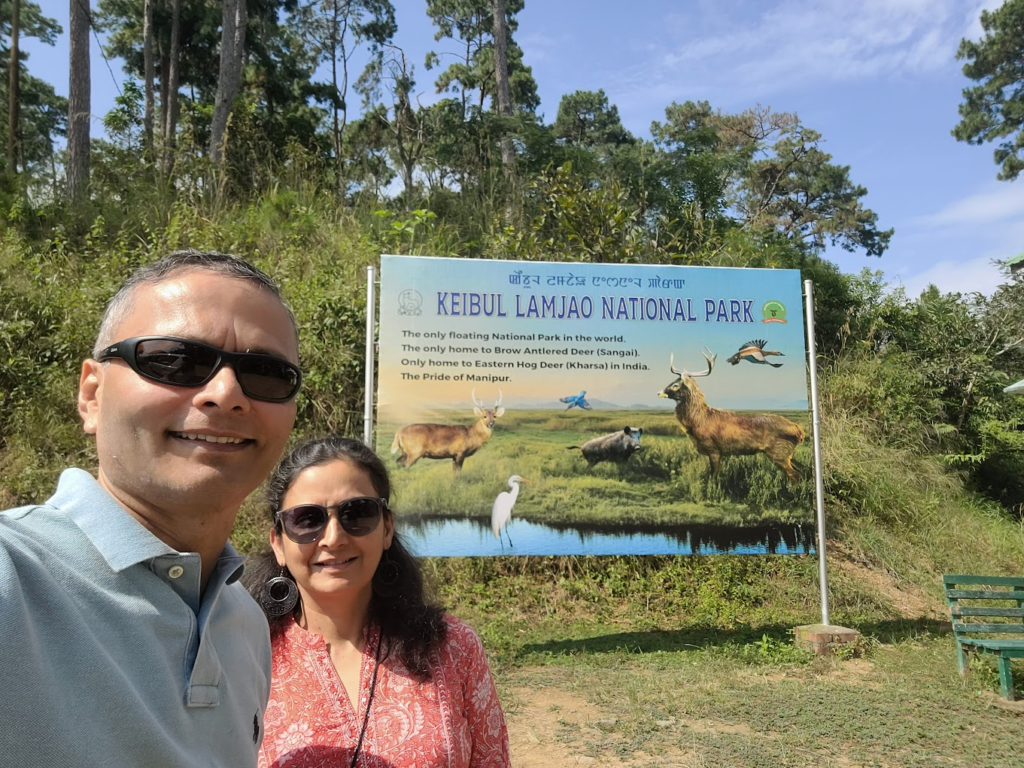
We took a boat ride through a narrow water section and experienced the floating ground pulsating below us as we walked on the phumdi. Our guide did a great job at explaining the park and its uniqueness.
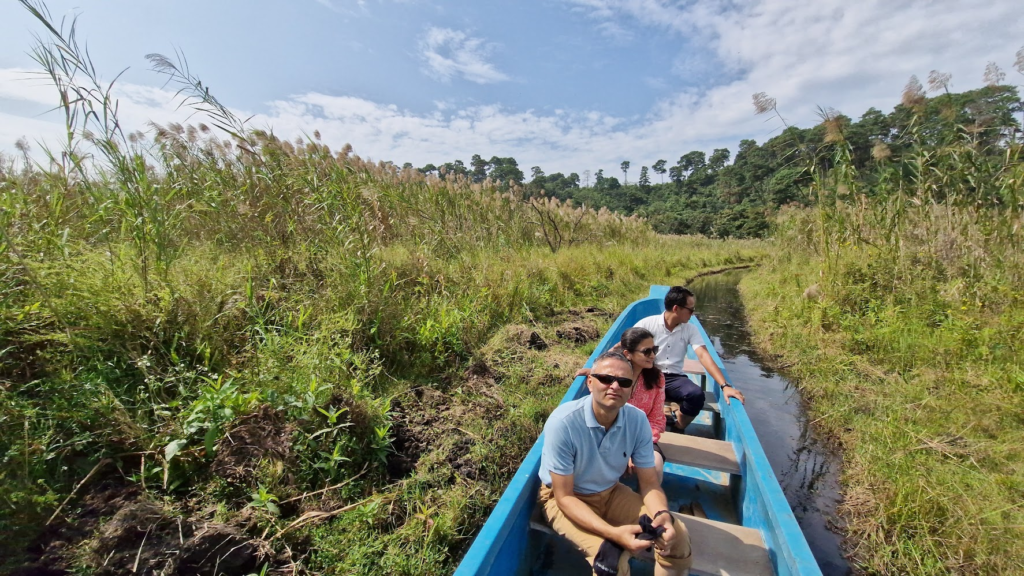
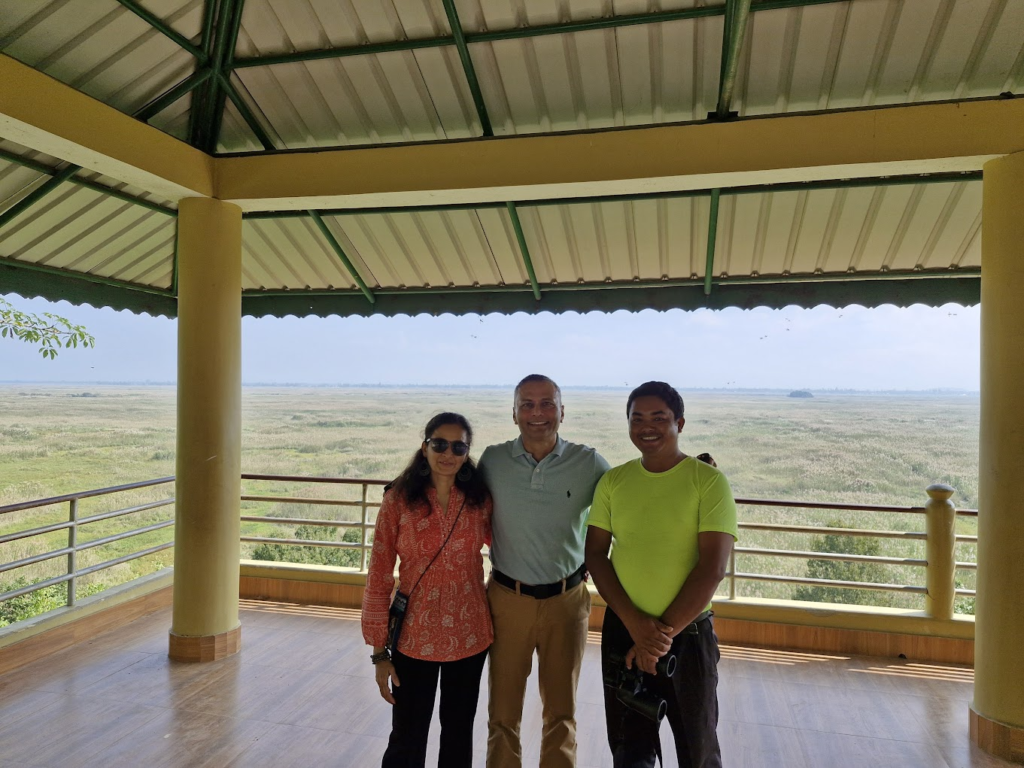
Next step was the Indian National Army (INA) or the Azad Hind Fauj museum in Moirang. It is a small but interesting museum with lots of exhibits on Subhas Chandra Bose and the INA. In the battle for Imphal and Kohima in April-June 1944, the INA and Japanese fought against the British Indian Army. They were pushed back by the British, but the INA proudly unfurled and raised the Indian Tricolor Flag on Indian soil for the first time in history as representatives of Free India.
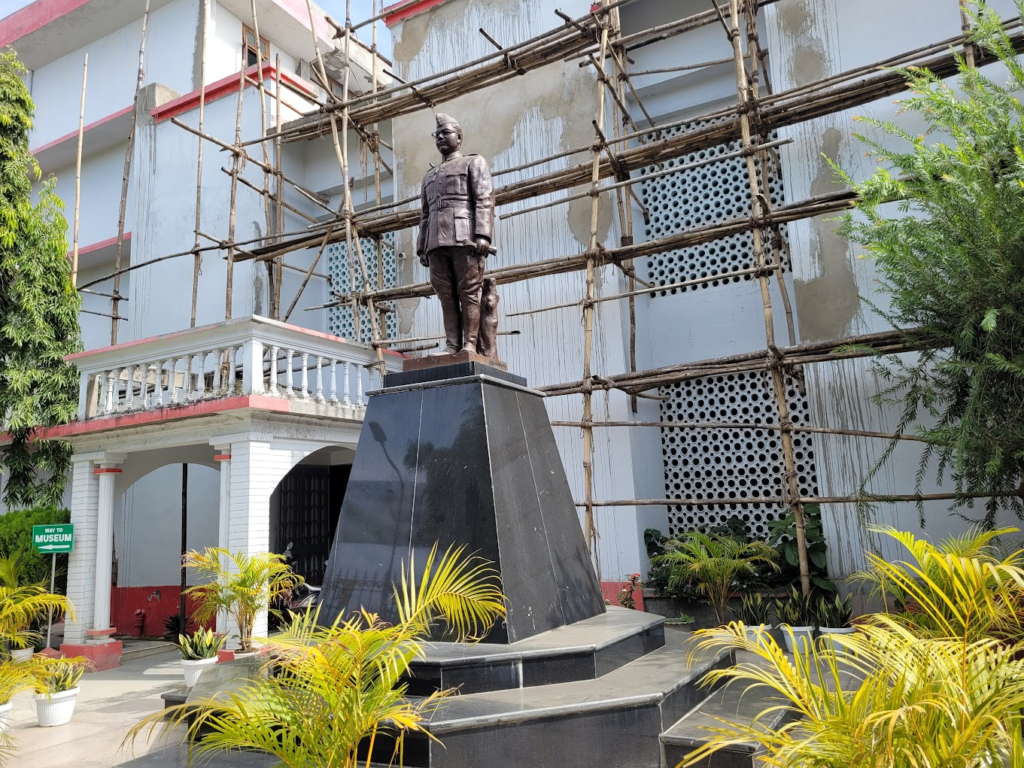
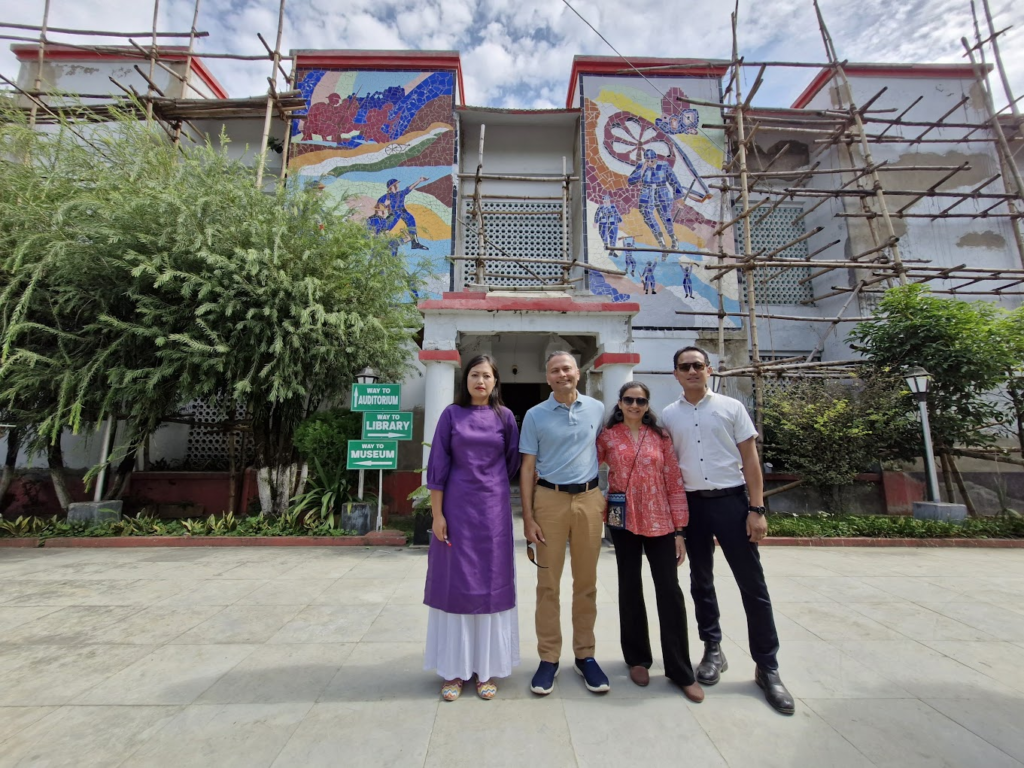

The court martial of three INA officers – Prem Sahgal, Gurubaksh Singh Dhillon and Shah Nawaz Khan, created a huge wave of nationalism. This wave led to the Naval Mutiny of 1946 in the British Indian Navy, which led the British to believe that they could not hold on in India. This is considered to be one of the primary reasons why India gained freedom, not the non-violence movement of Gandhi.
Moirang also housed the headquarters of the INA during the 1944 campaign. The inner building still has bullet holes from the air-strafing by Allied Aircraft. The 165 ft pole in front of the INA headquarters is the tallest flagpole in the Northeast. Very inspiring.
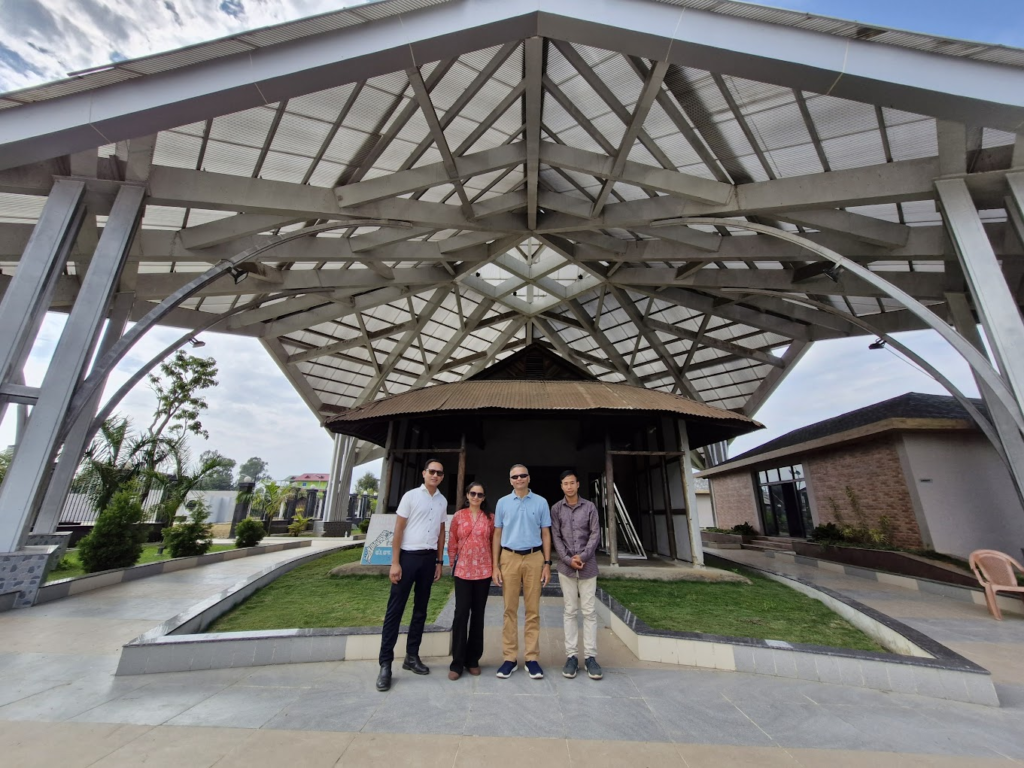

On the way back to Imphal, we stopped at the Japanese War Cemetery and the Japanese Peace Museum, sponsored by the Government of Japan for their soldiers who died during the Imphal-Kohima campaign in 1944.
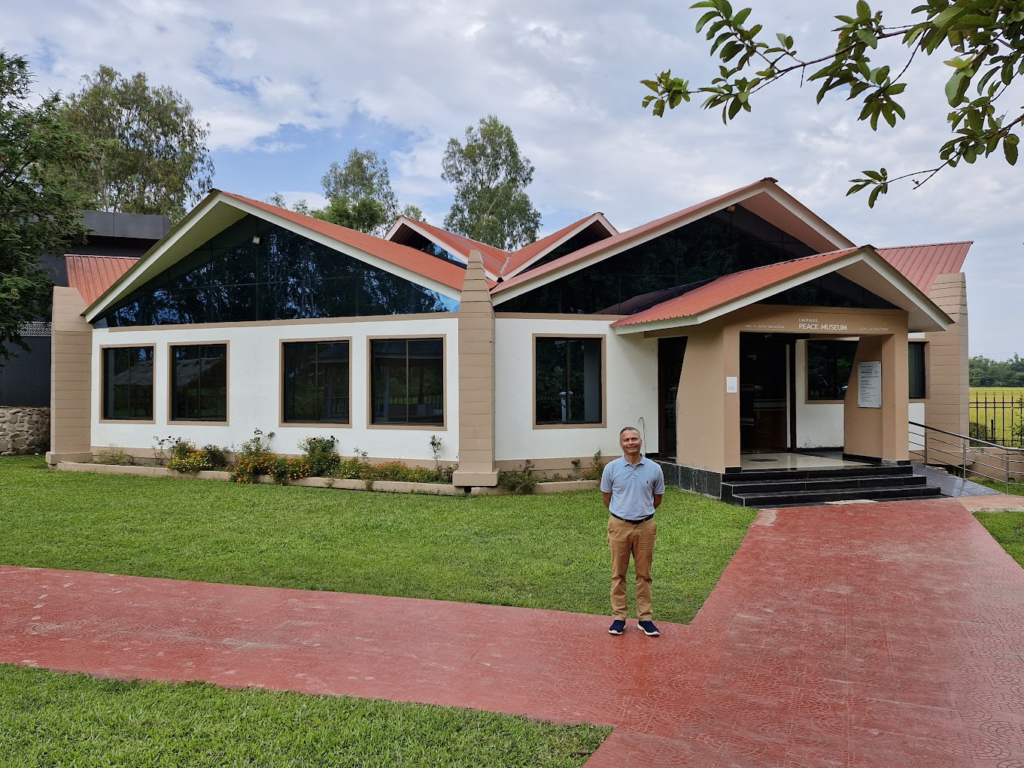
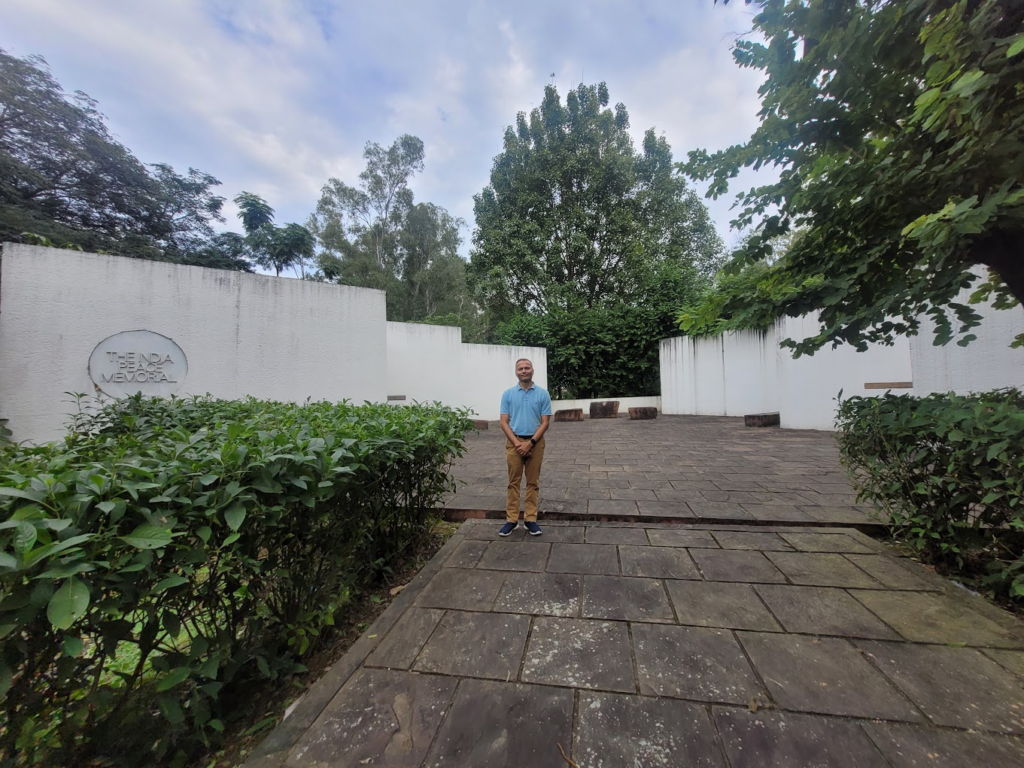
For lunch we ate at Luxmi kitchen, which served authentic Manipuri food. We managed to get vegetarian food. Very interesting dishes, nothing very oily.
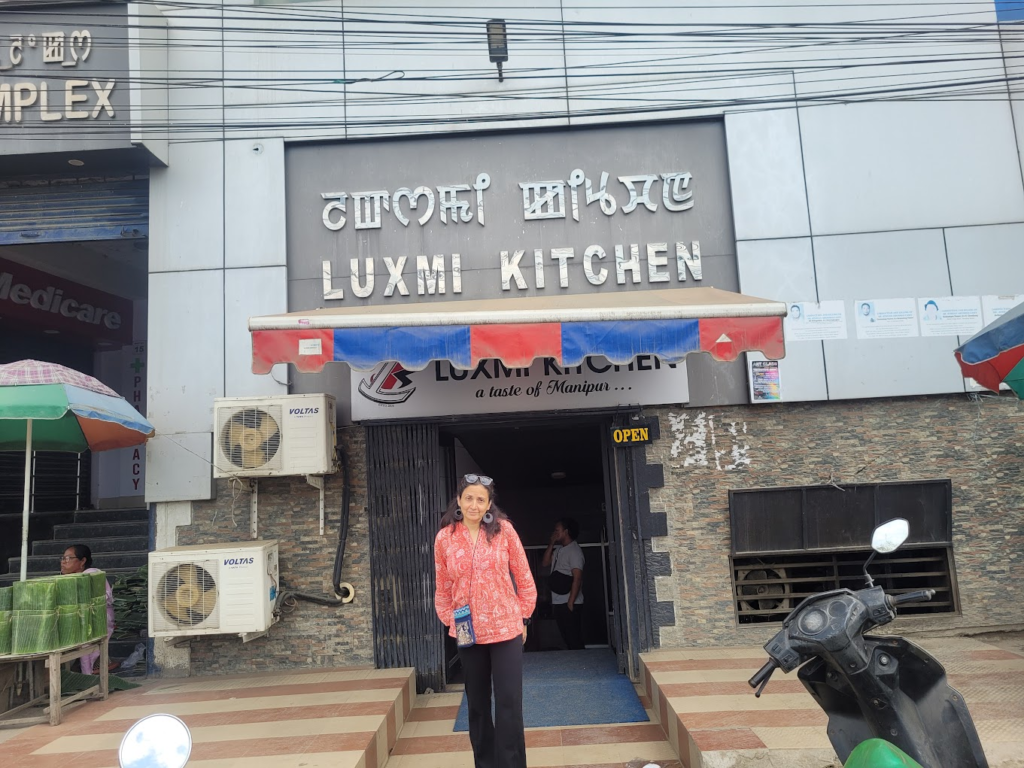
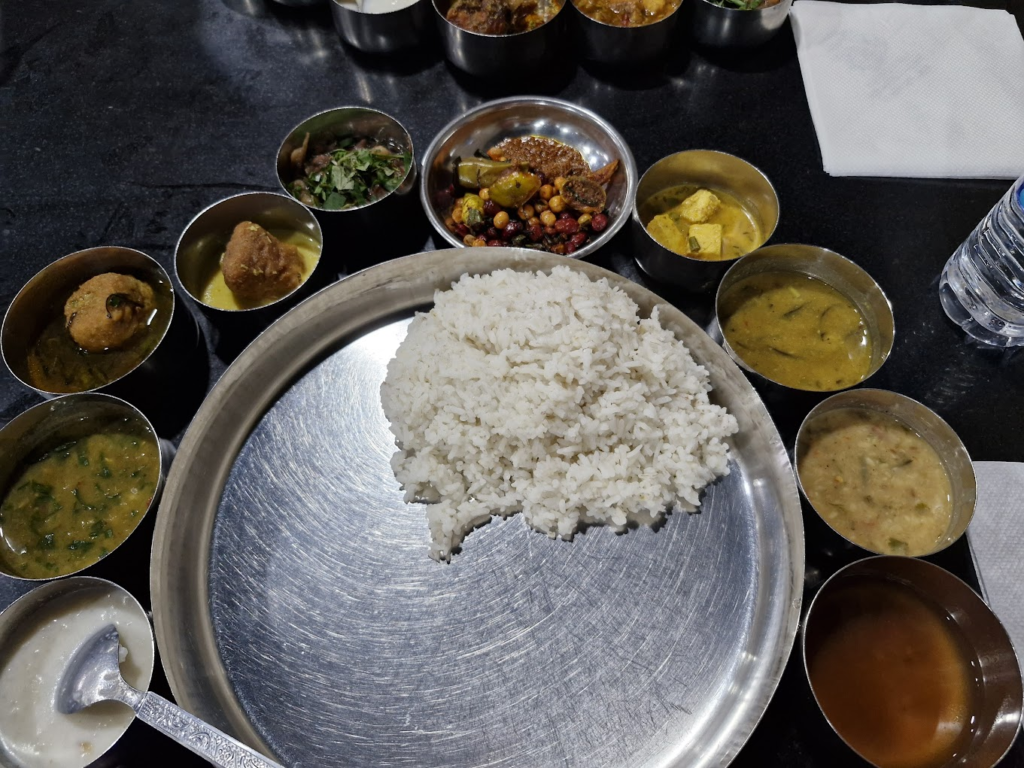
Next stop was Ima Market, the largest all–women market in Asia. It was established in the 16th century and hosts around 5,000–6,000 women vendors who sell a variety of products such as vegetables, fruits, textiles, toys, fish, spices and utensils. Men can be buyers but not sellers. In fact, in the Northeast, more than 70% of the shops had women shopkeepers. This is a truly unique feature which highlights the importance of women in the Northeast
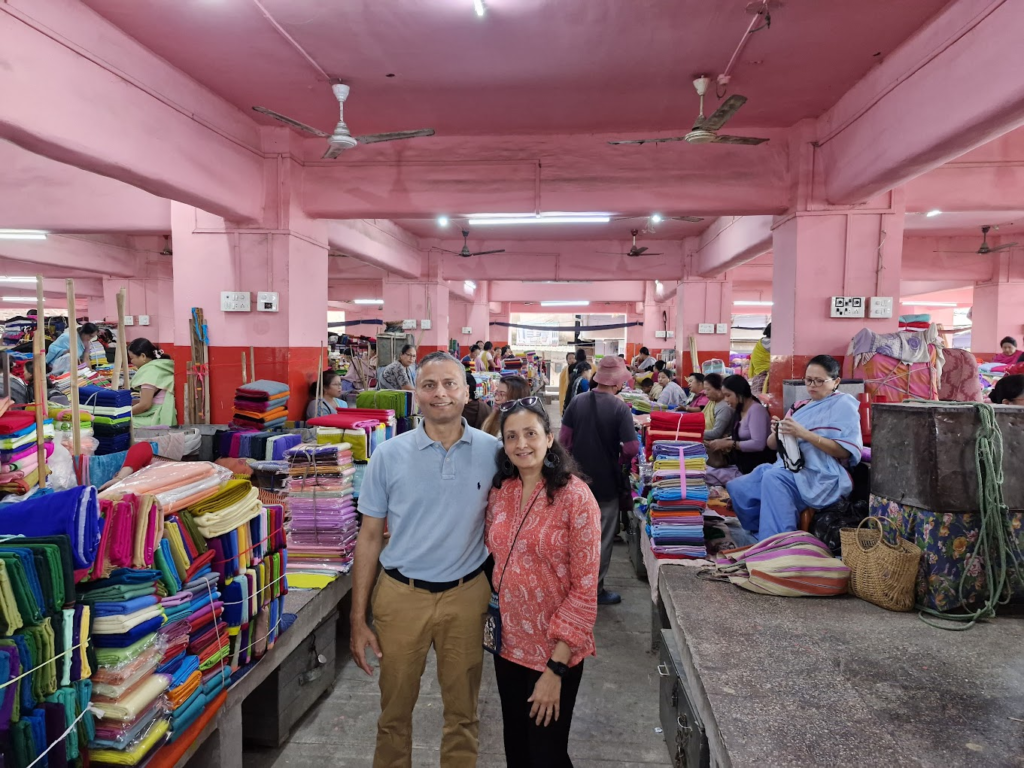
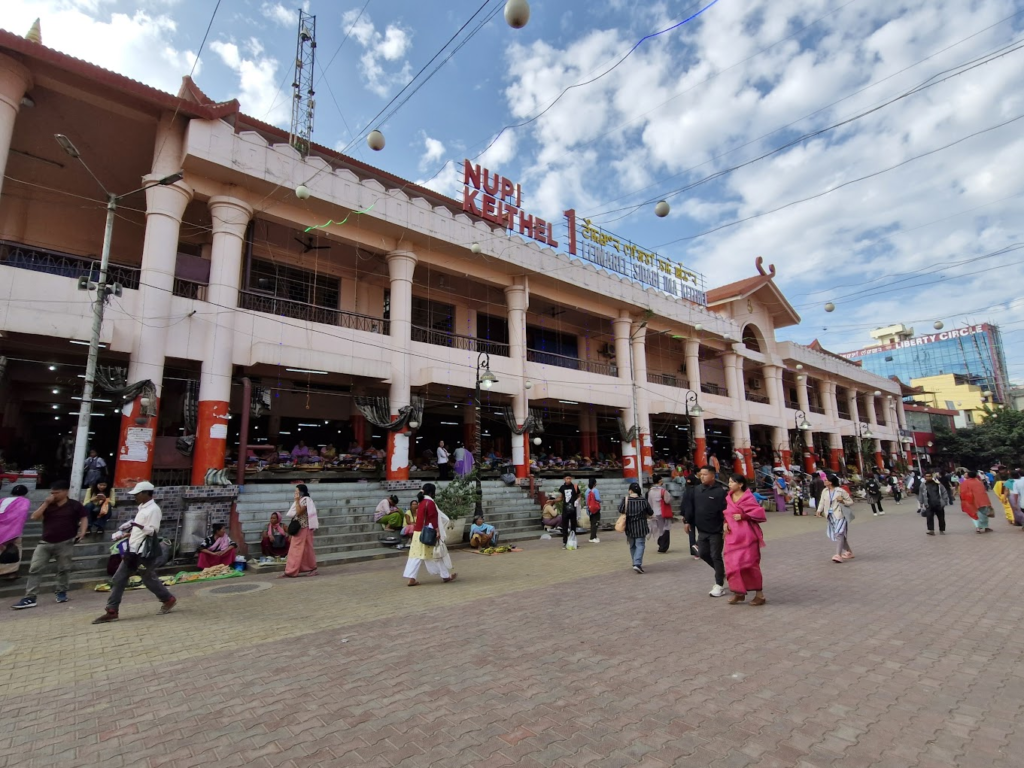

We proceeded to Kangla fort, the seat of administration of the Meitei rulers from 33 AD to 1891 AD. The grounds of the fort are spread over a very large area. A woman guide in an electric vehicle showed us around the fort.
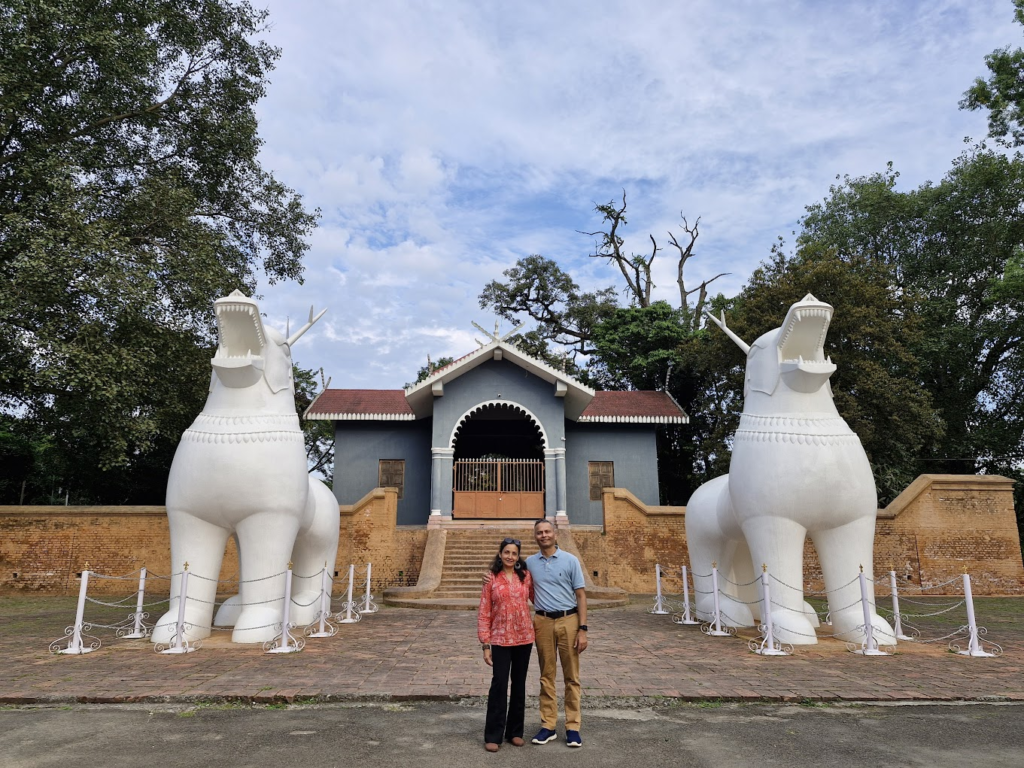


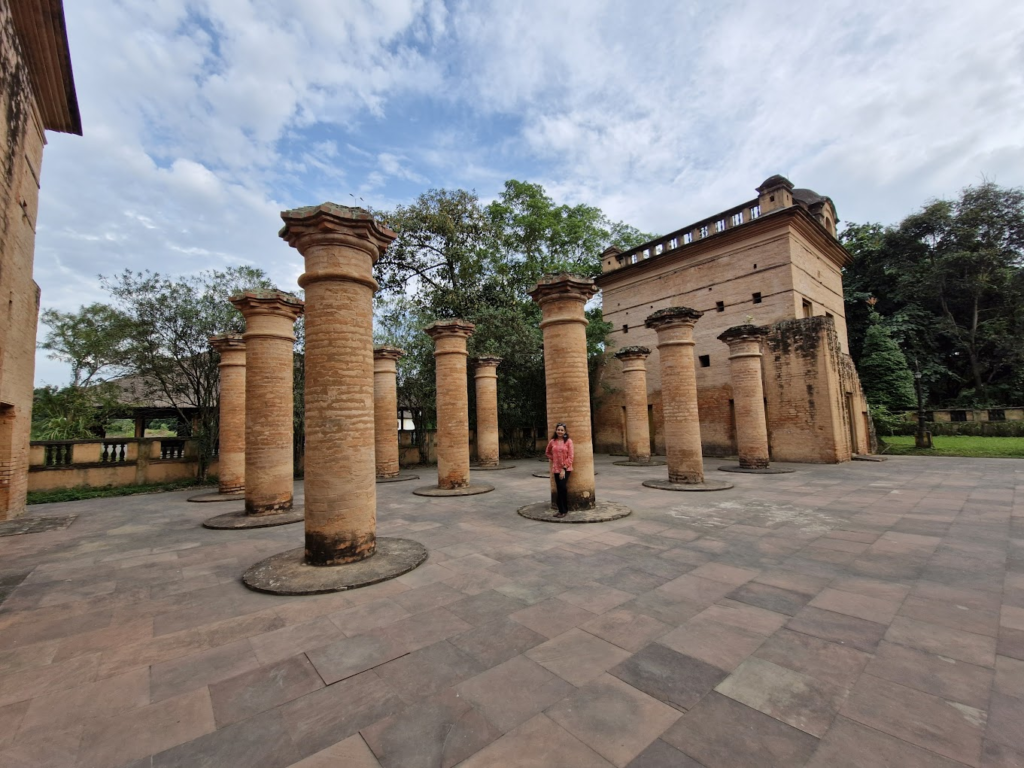
Our last stop for the day was the Marjling Polo Statue located on a hilltop near the polo complex. It is 122 ft in height and built at a cost of $5 million. It is dedicated to God Marjing, the ancient Meitei deity of polo and horses. The game of Sagol Kangjei (also Pulu or Polo) was the origin of the modern game of Polo. The Mr. Ibohal Singh, the director of Tourism of Manipur hosted us at this location.
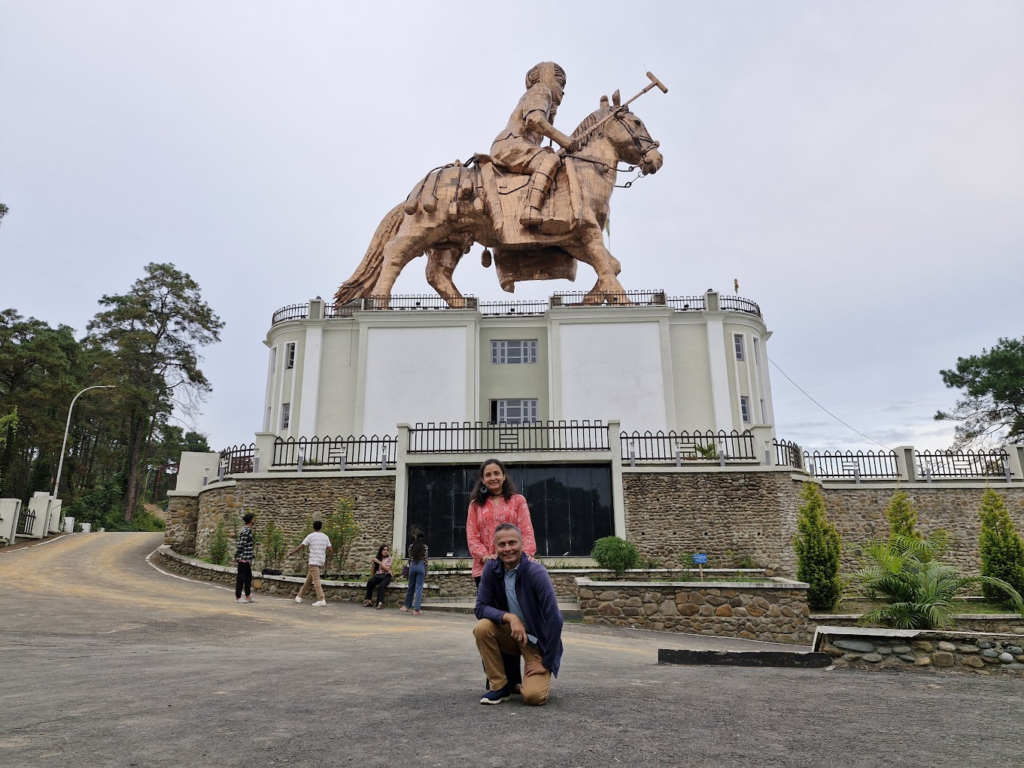

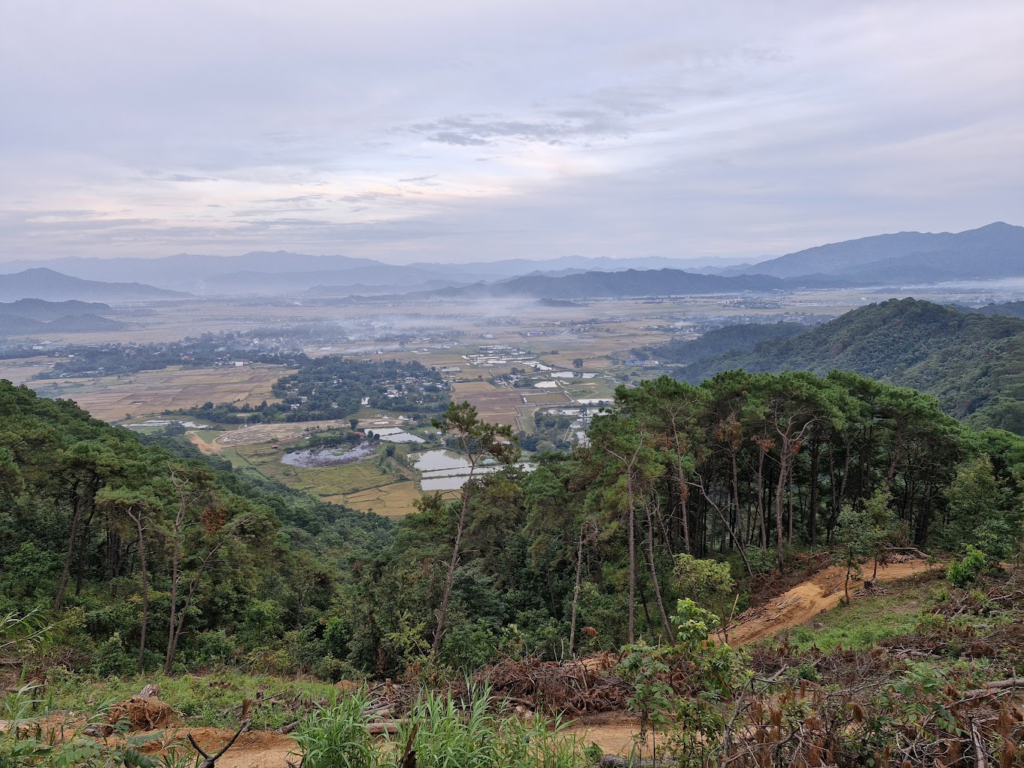
We returned from the statue visit to our hotel. We visited Vineet Joshi, my friend, for dinner at around 8.30 pm and stayed there till 11 pm.
Wed, Nov 6: Imphal -> Aizawl, Mizoram
Imphal to Aizawl is a 400 km distance and a 13 hour drive. The road conditions are bad, the terrain is mountainous and it goes through the Kuki regions of the hills where there is ongoing conflict. Therefore, flying was the only possible option.
Our flight from Imphal took off at 9.40 am and we reached Aizawl at 2 pm. The flight went through Guwahati. Imphal airport has a very interesting and ornate design.
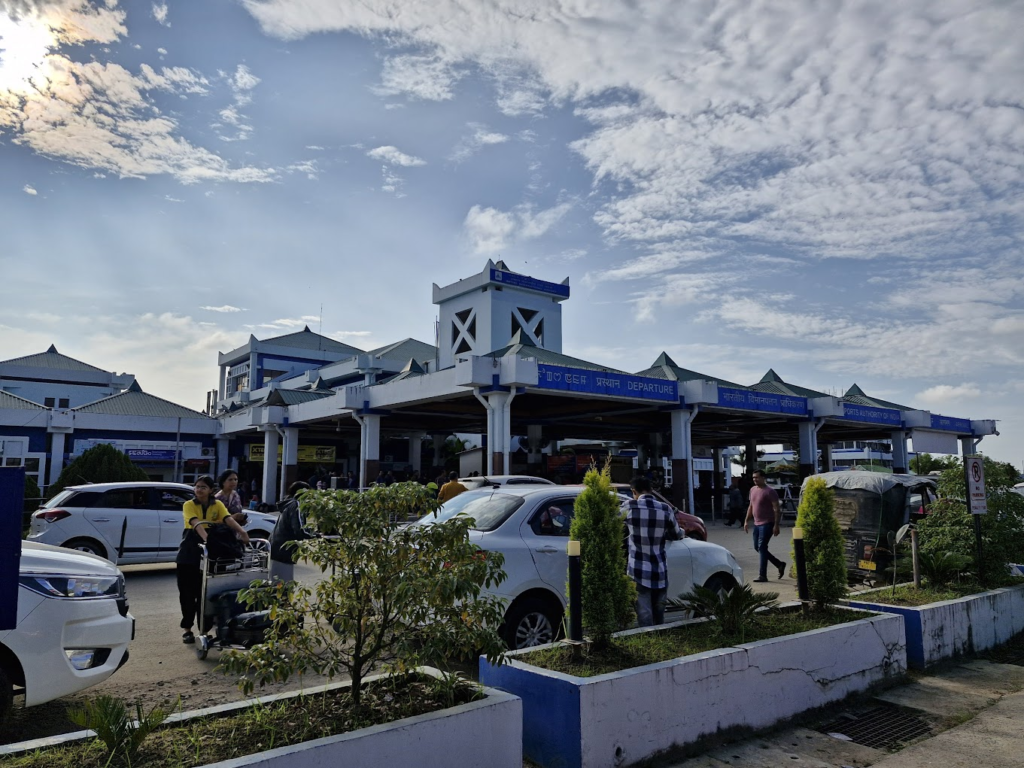
Aizawl airport is in a village called Lengpui. It took us 2.5 hours from the airport to Aizawl city.
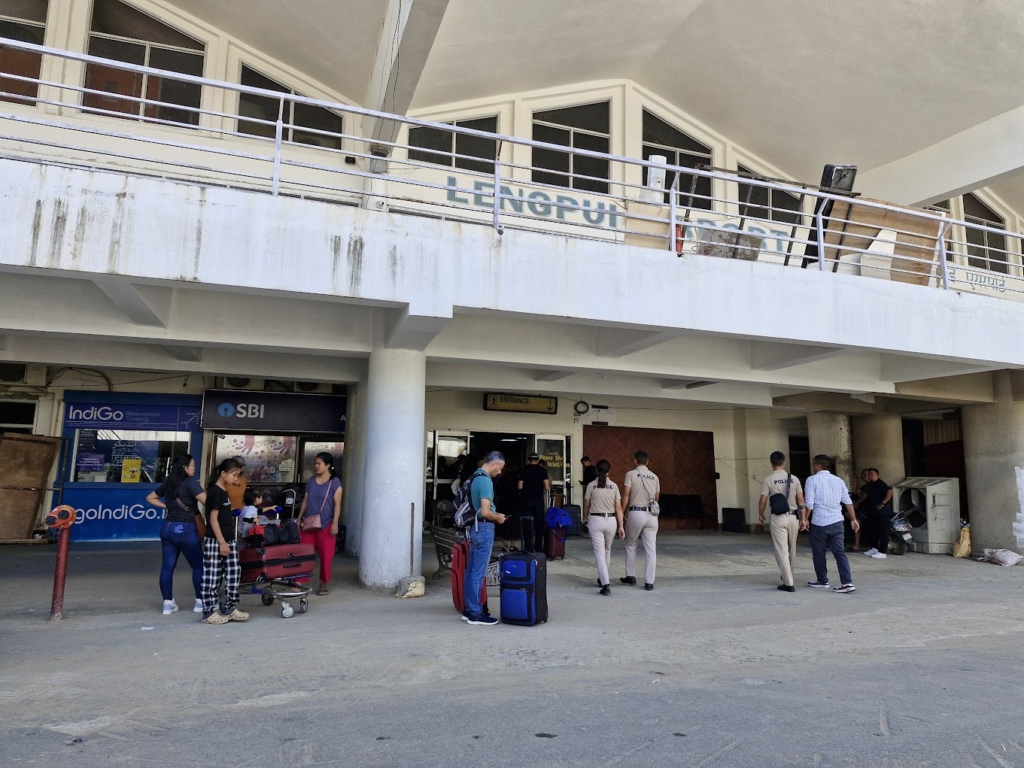
The airport is in the the mountains and Aizawl is also in the mountains, therefore, the road is winding and generally not of a great quality. However, the views were great.
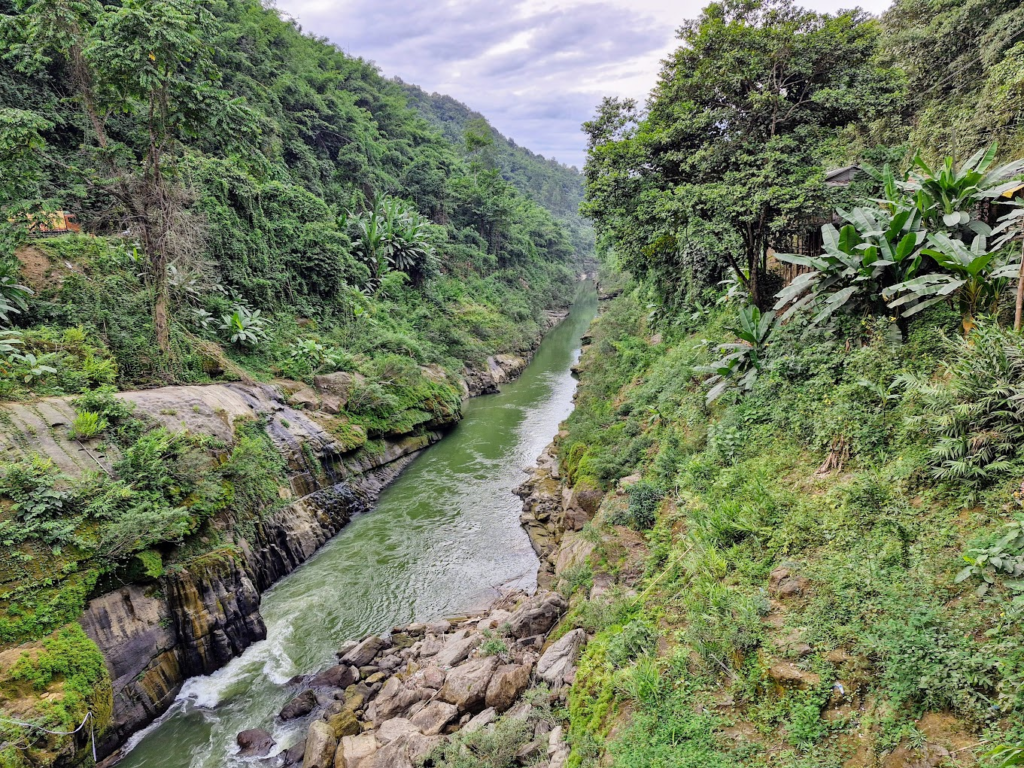
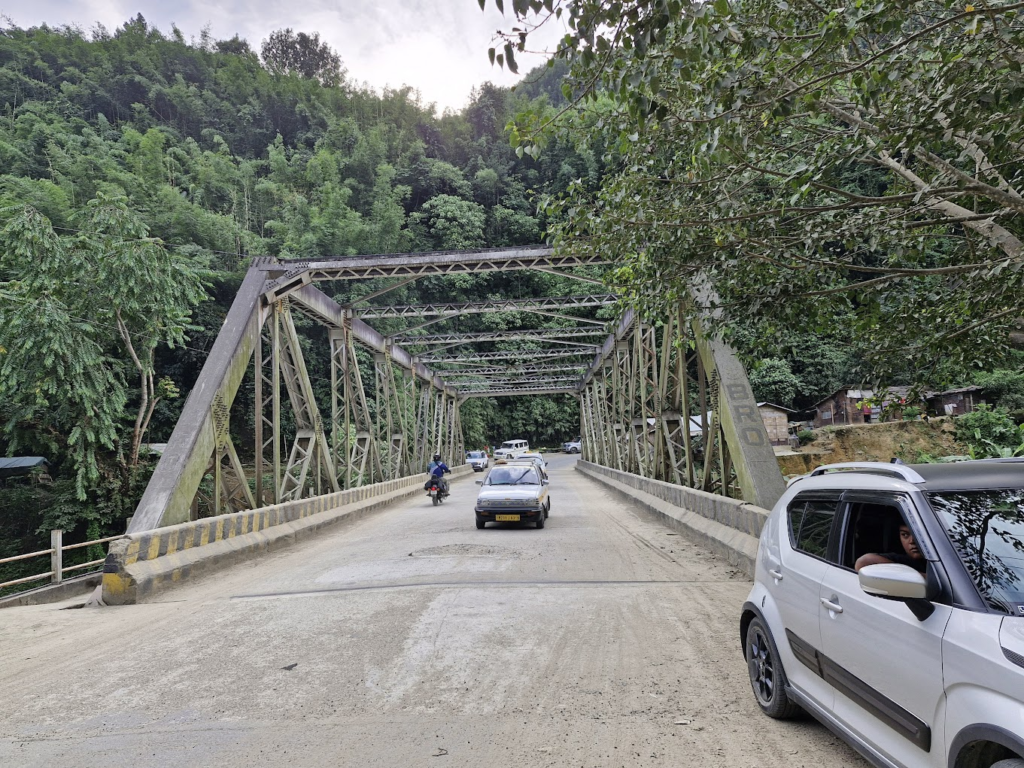
We reached Aizawl by 4.30 pm and checked into the Royal Grand Lalawi hotel. It was the best hotel we could find in Aizawl. It is a decent hotel.
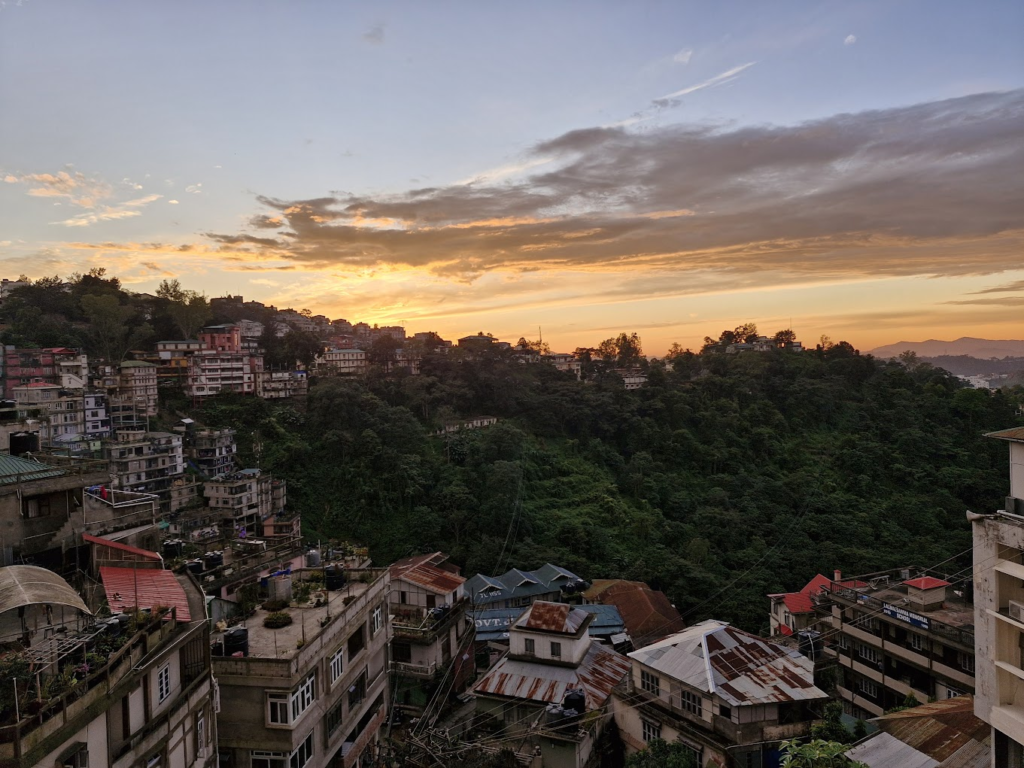
We kept our luggage in the room and decided to go out for dinner. We walked along the road for about 2.5 km, but there no cafes or restaurants open. Therefore, we came back to Lalawi and ate pizza at a nearby Pizza hut.
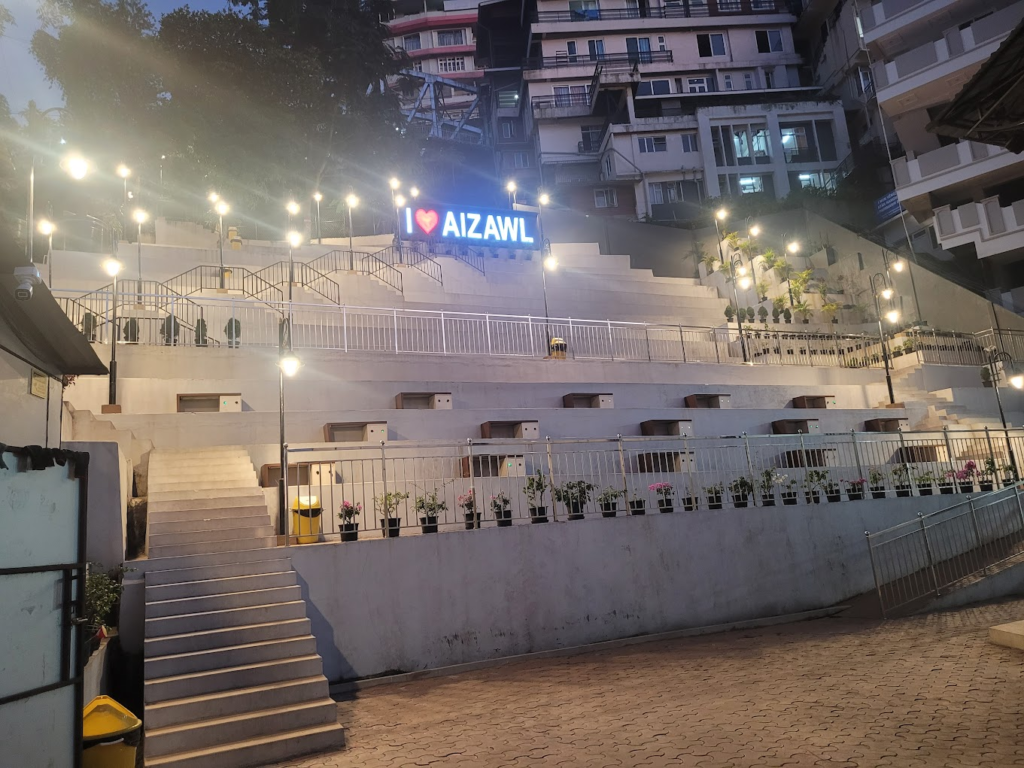
The streets in Aizawl are narrow winding roads, going either steeply up or steeply down. The building are also built on steep cliff faces.
Thu, Nov 7: Aizawl, Reiek Peak
We started the day early and left at 7.00 am from the hotel. Great view of the hills in the morning.
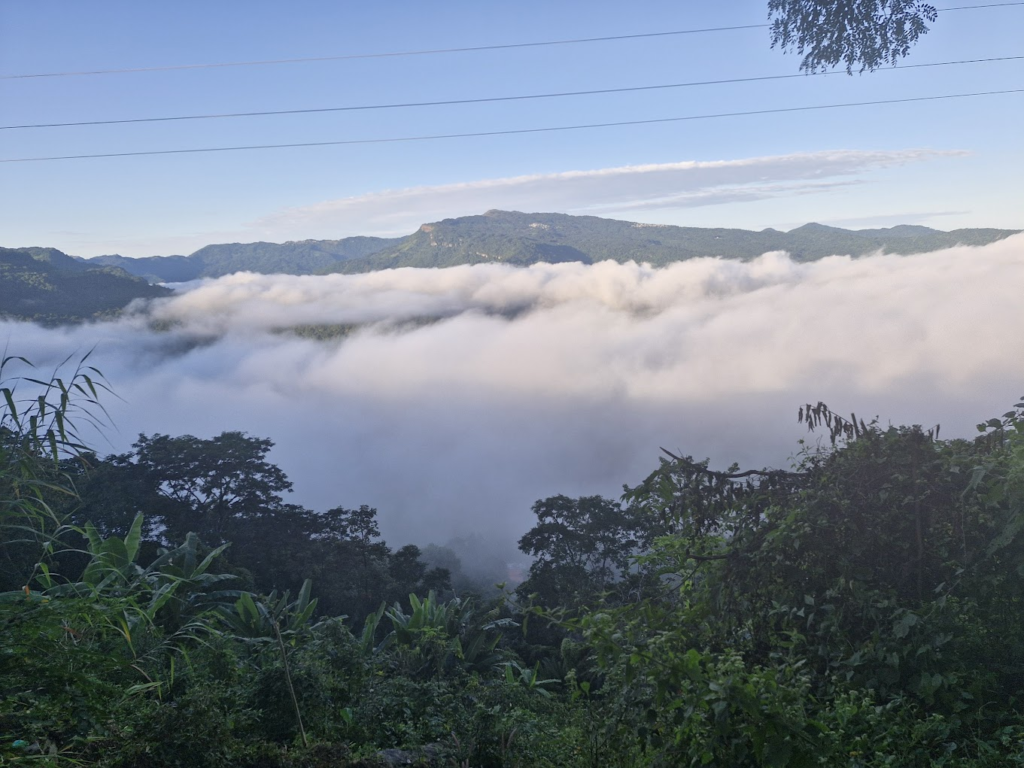
We went to Reiek Peak, a mountain and tourist spot 29 km from Aizawl. It rests at an elevation of of 5,000 ft overlooking Aizawl and offers a view of the surrounding valleys and hills. On a clear day, the plains of Bangladesh can be seen from the top of the hill. Reiek Hill is surrounded by thick lush green temperate trees and bushes.
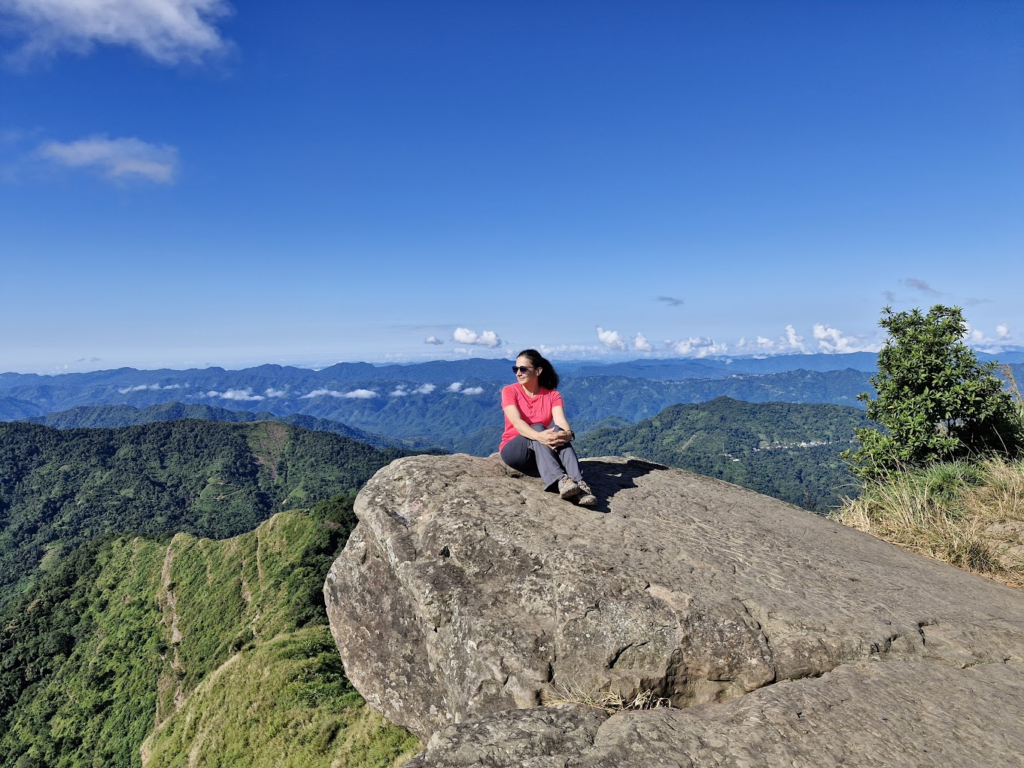
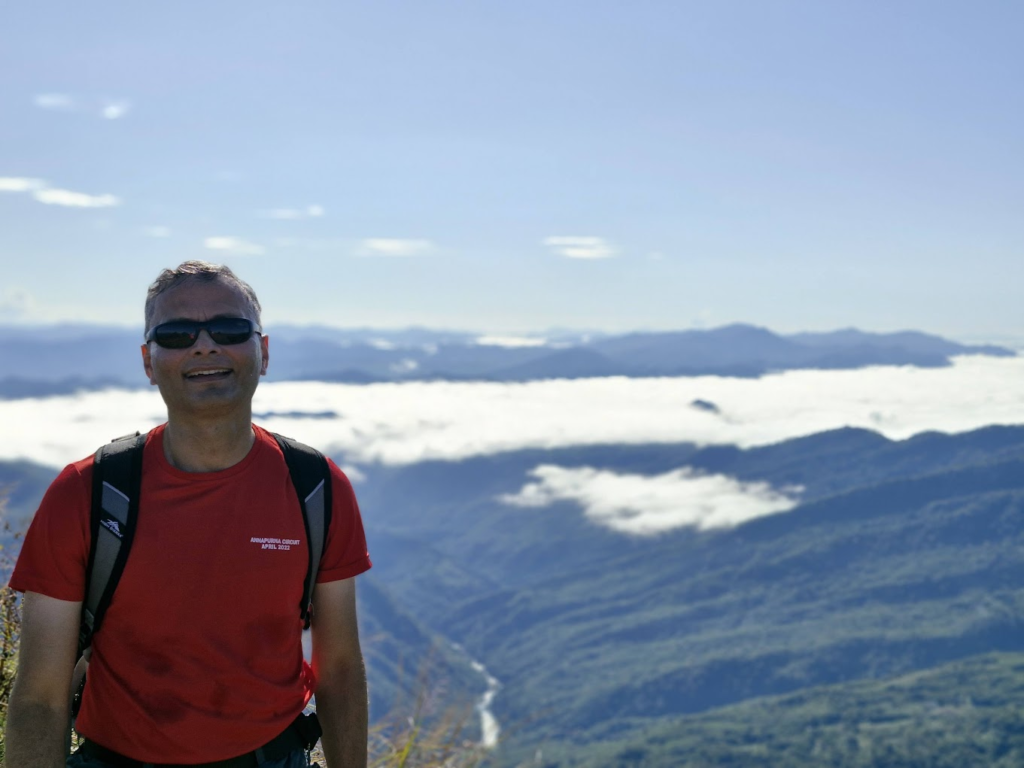
It is possible to go most of the way by car, but we trekked up all the way to the top of the peak. Since it was morning time, there was no one else at the peak at that time. It was great to see the Mizo hills in their full glory (Mizoram is 91% forested hilly land).
We then visited the Solomon Temple, a church constructed in 2017 at the cost of $3 million. The Temple area accommodates 2,000 people within the main hall and 10,000 within its courtyard.
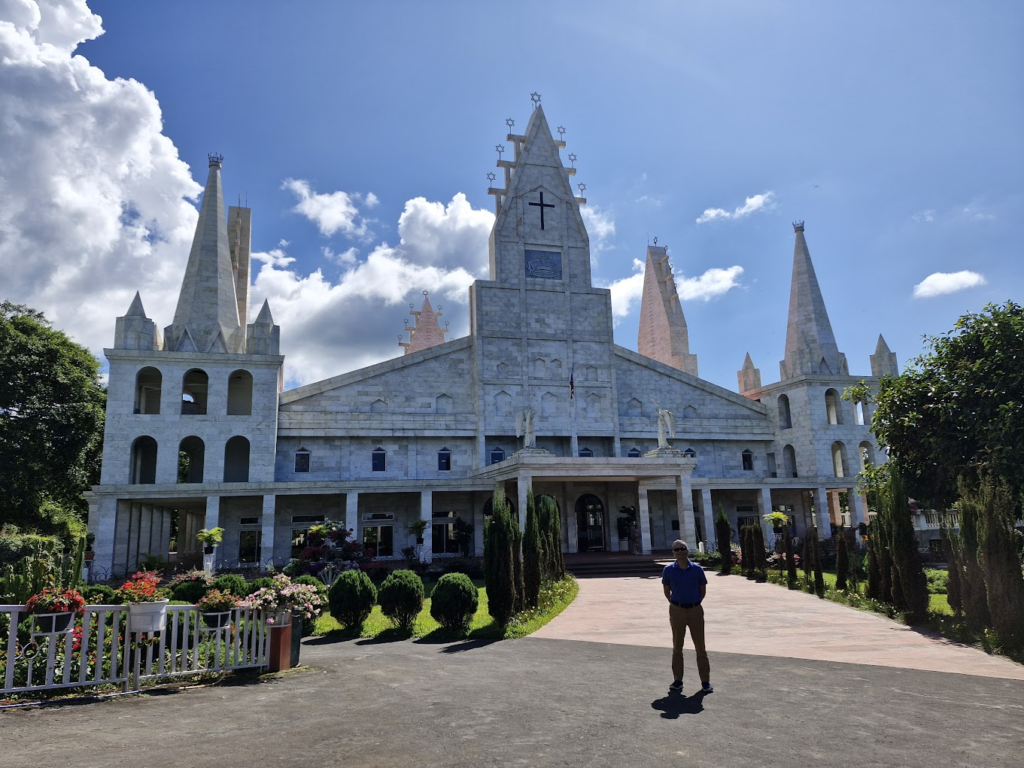
For lunch we decided to look for something non-conventional and we found a Korean restaurant called Kori’s. It turned out to be a great place and they were able to serve tasty vegetarian food.

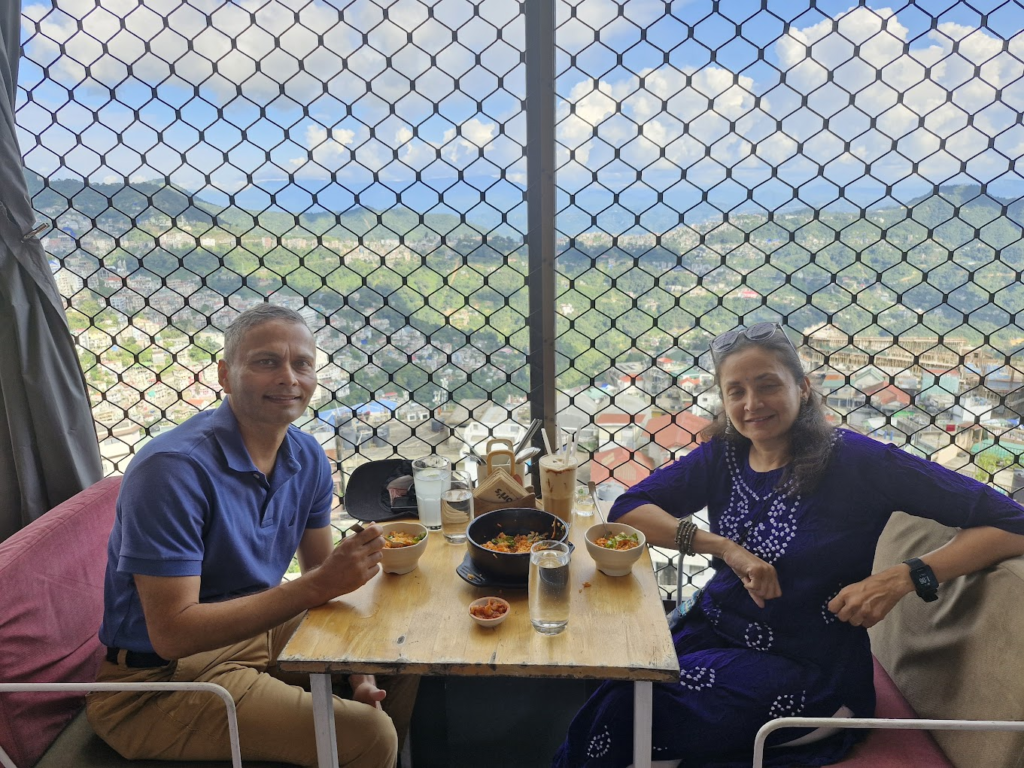

We visited the Mizoram State Museum. It is housed in a small building. But the exhibits are quite good. It is worth going.

The next stop was Durtlang Hills, an area of the town with stunning views of Aizawl. Our first visit was to KV Paradise, built by an Aizawl resident in the memory of his wife. They called it the Taj Mahal of Aizawl. The views from that place were excellent, but KV Paradise itself is just a simple building which is not kept in great shape.
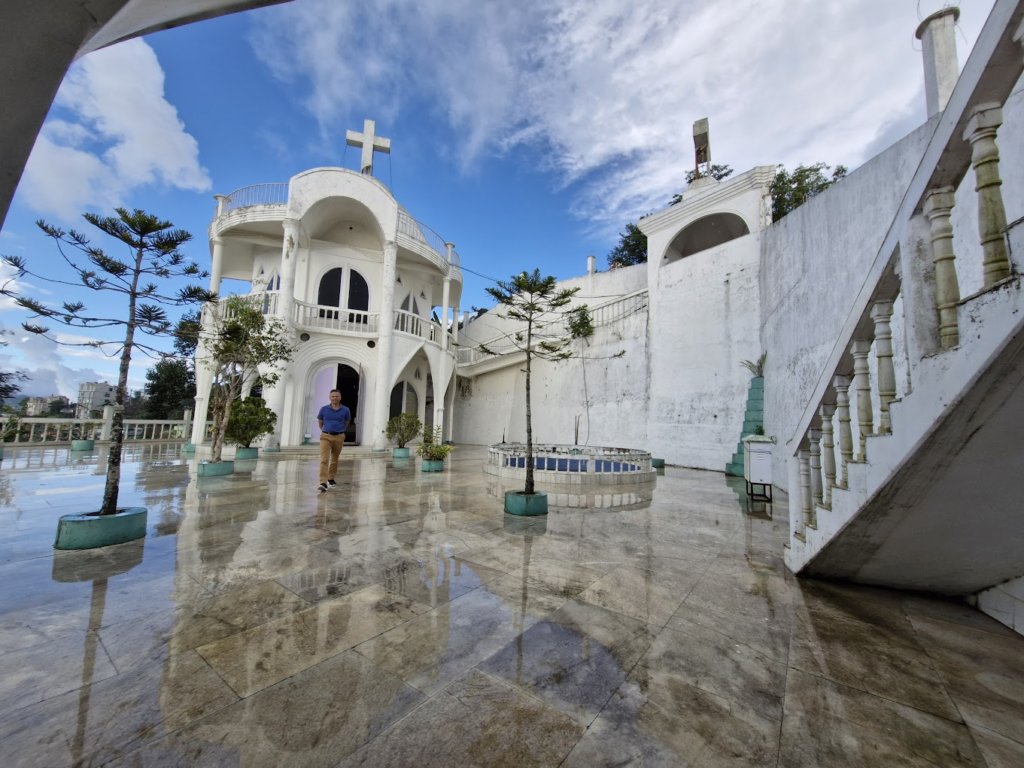
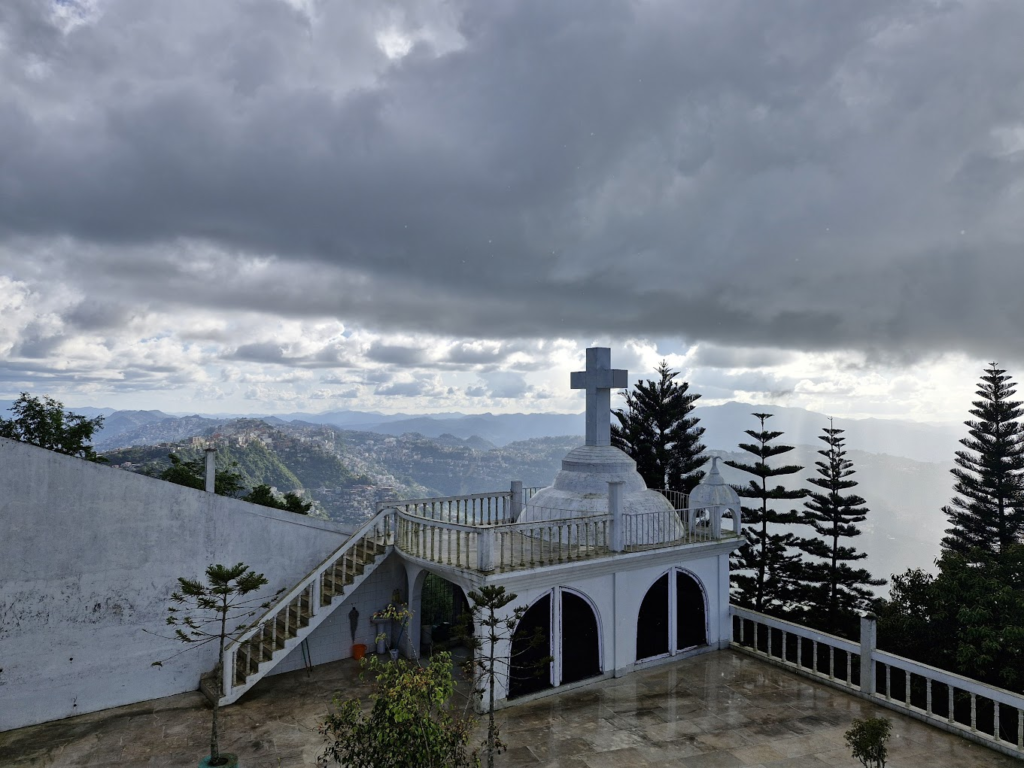
Last stop was the Aizawl Theosophical College, a college to learn the Christian religion. The views from the viewing area are simply fantastic. Highly recommended.
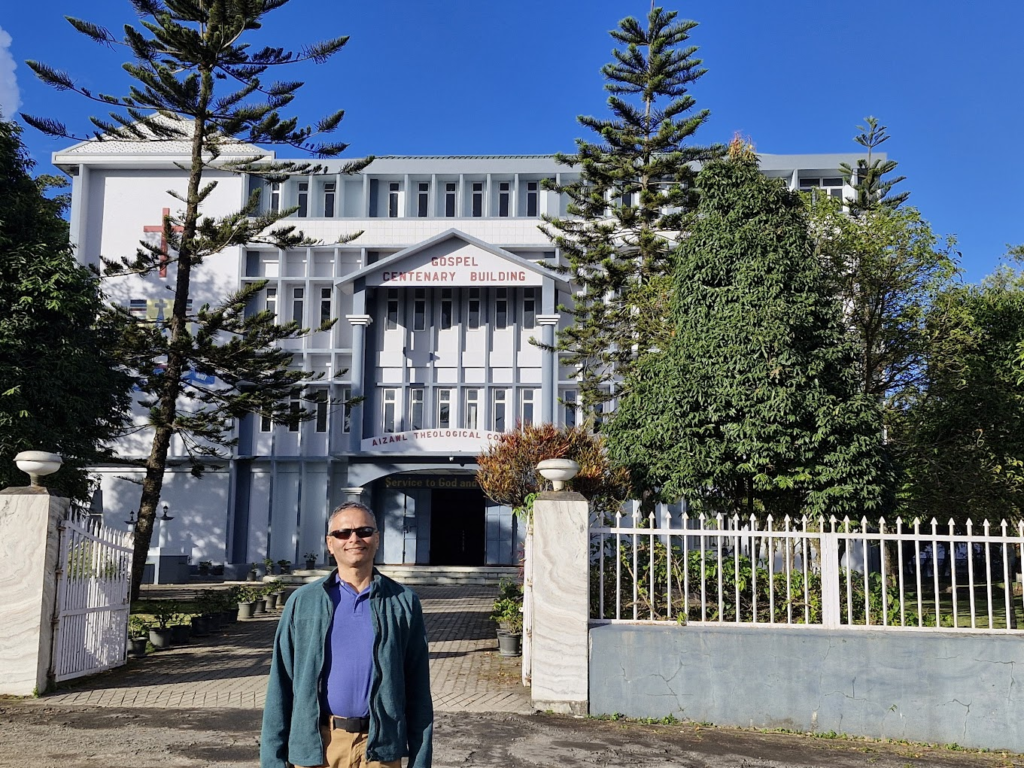
We stopped at the Bara Bazar, the main market in Aizawl. While we like the hustle and bustle, it is like a market in any other city.
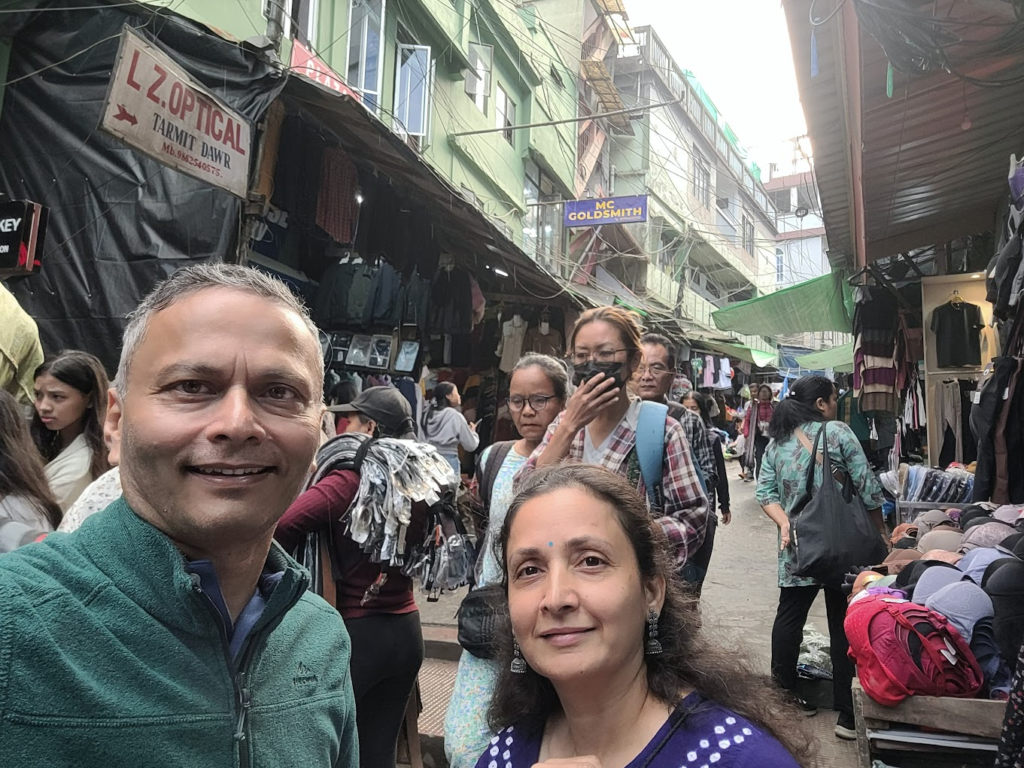
We had our dinner at Royal Lalawi. We ordered traditional Mizo Bai (a stew), salad and their chutney. The chutney was like an extremely spicy salsa. The food was excellent.
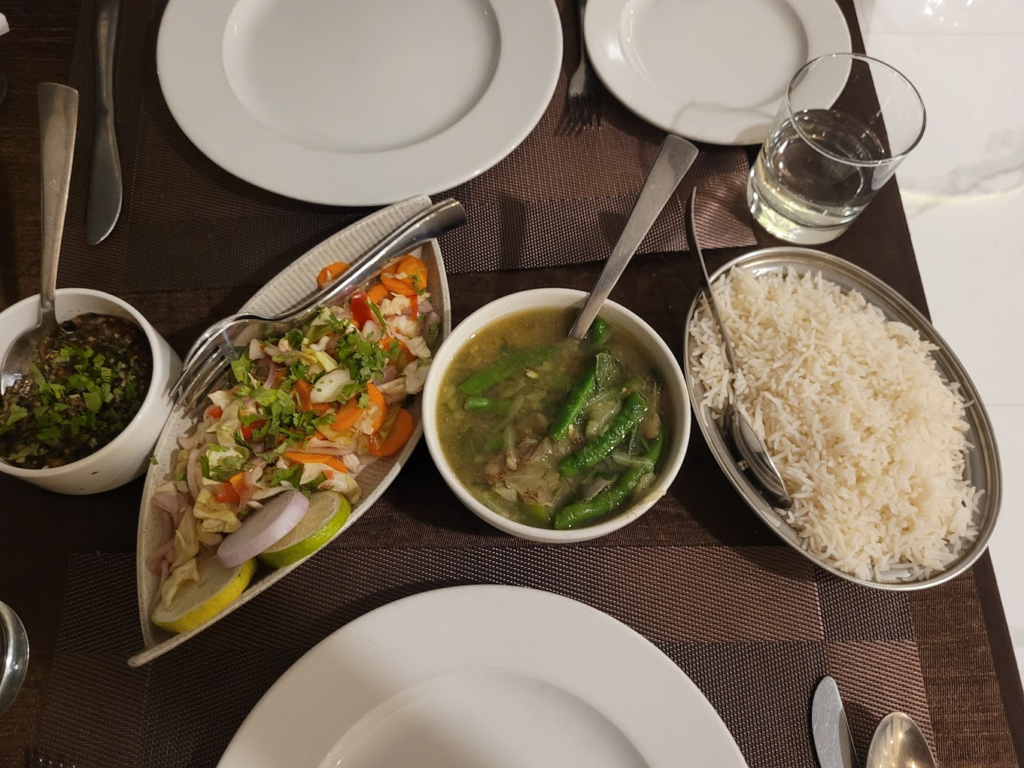
Fri, Nov 8: Aizawl -> Agartala, Tripura
Road travel in the Northeast is not possible due to the hilly terrain the bad quality of roads. Hence, once again, the 320 km distance betwen Aizawl and Agartala would have taken us 11 hours by road. So we decided to fly to Agartala through Kolkata. This roundabout itinerary increased both time and cost.
We landed in Kolkata and stayed there overnight at the Holiday Inn Express near the airport. We at the buffet dinner at the hotel.
Sat, Nov 9: Agartala, Udaipur in Tripura
We landed in Agartala at 8 am and were picked up by a taxi that we had pre-booked.
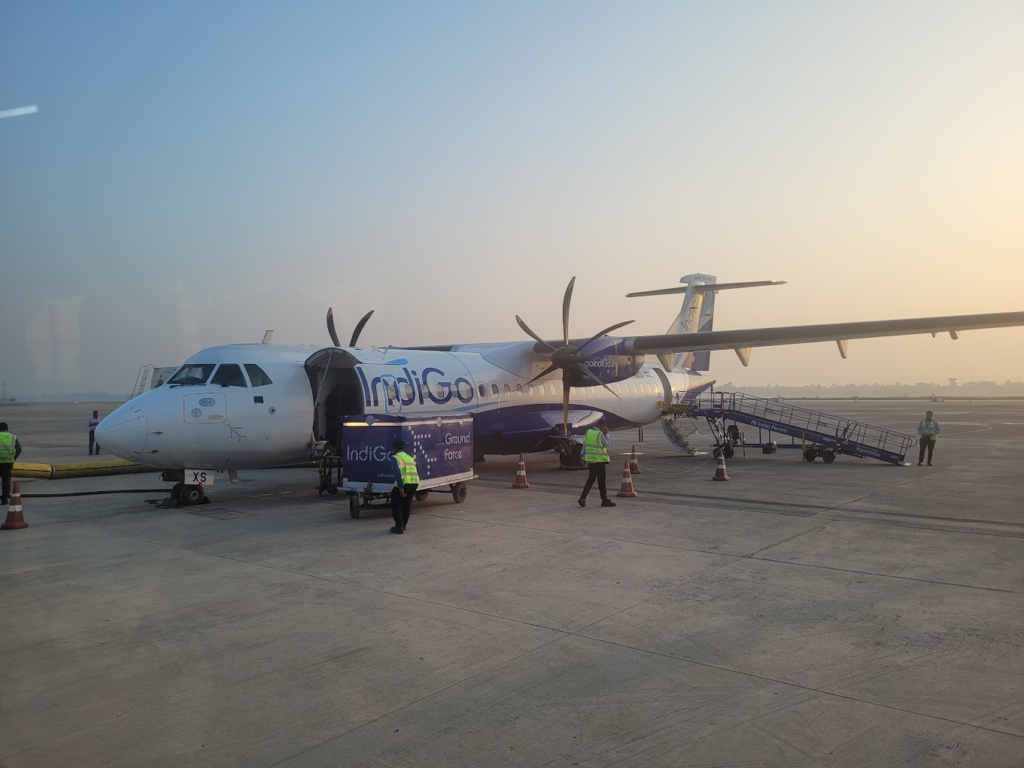

We headed straight for Udaipur where we visited the Tripura Sundari temple dedicated to the Goddess Parvati. The temple is situated at Matabari in the ancient city of Udaipur, about 55 km from Agartala and can be reached by train and road from Agartala. It is believed to be one of the holiest Hindu shrines in this part of the country and witnesses the highest number of visitors for a temple in North-East India, after Kamakhya Temple in Assam. The state of Tripura is named after this temple.
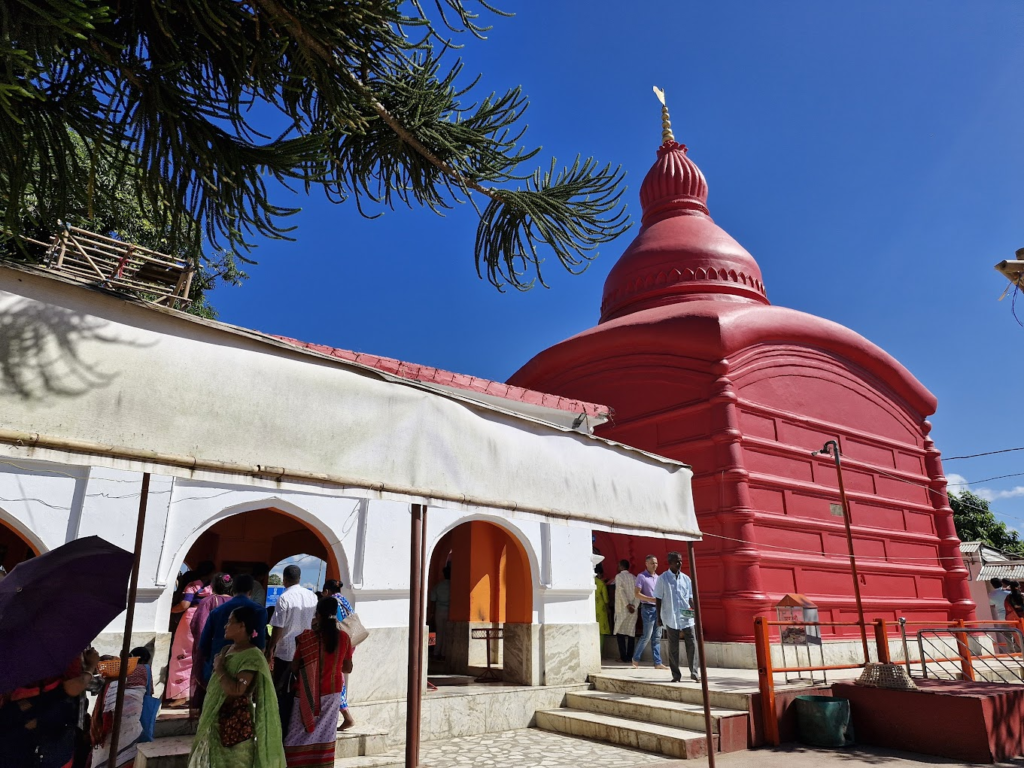
On the way, we also saw Umakanta Academy, the oldest school in Tripura established in 1890. There is also an SD Burman School of Music, named after SD Burman who was from Tripura.
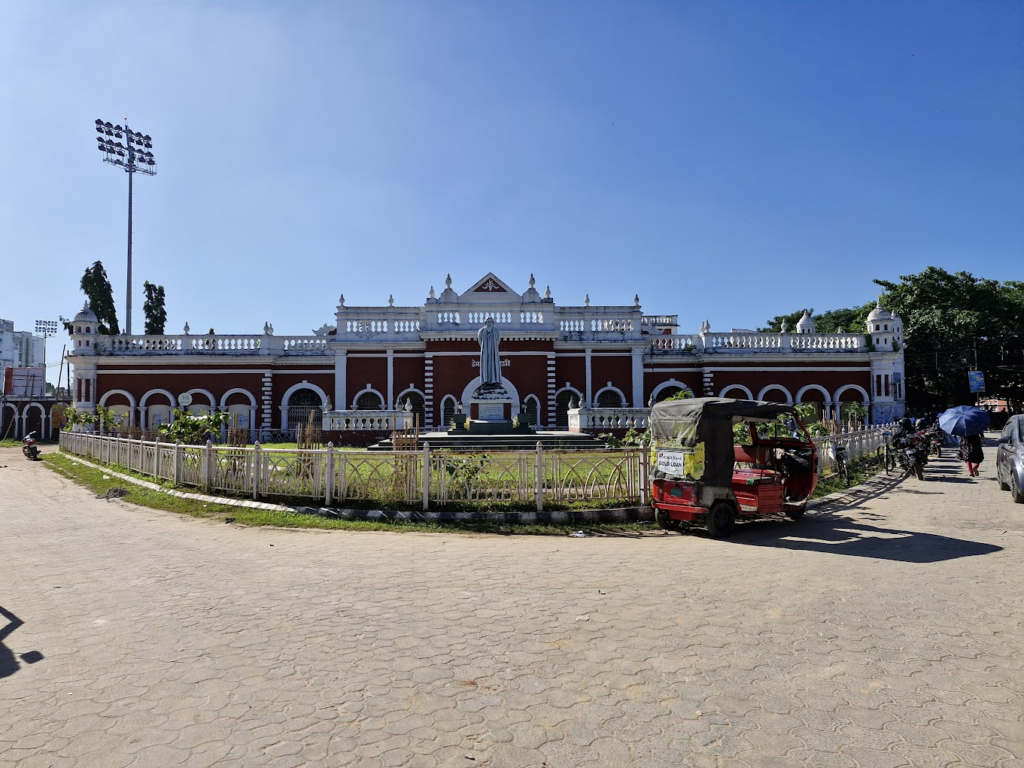
We continued on to Neermahal, a former royal palace of Tripura Kingdom, built by Maharaja Bir Bikram Kishore Manikya bahadur in 1930 with help of Martin & Burns Company of England. It is also the largest water palace in India. The palace is situated in the middle of Rudrasagar Lake in Melaghar 53 kilometers south of Agartala. We took a boat to Neermahal. This palace is modeled after the Lake Palace in Udaipur, Rajasthan. Neermahal was a good experience.
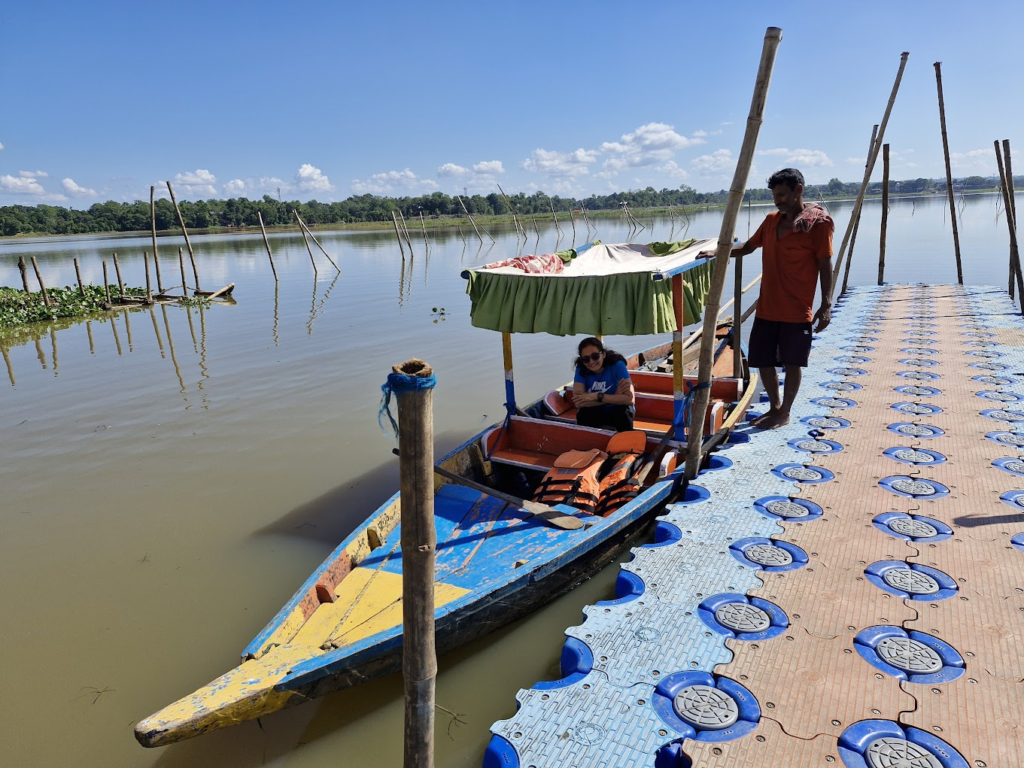
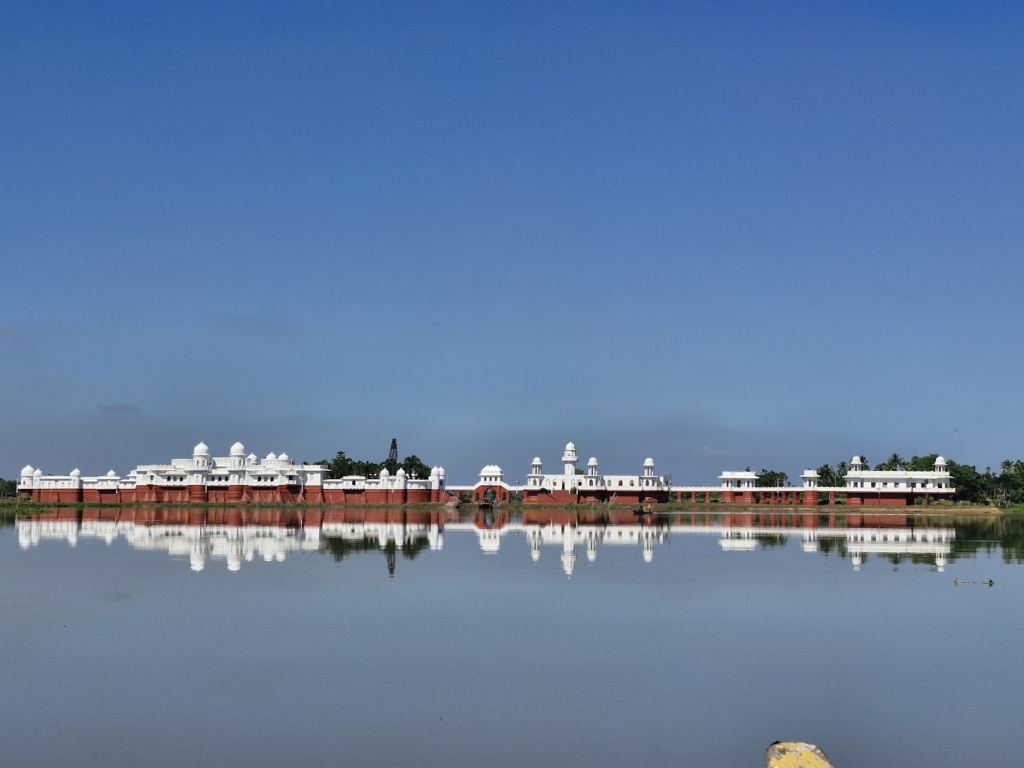
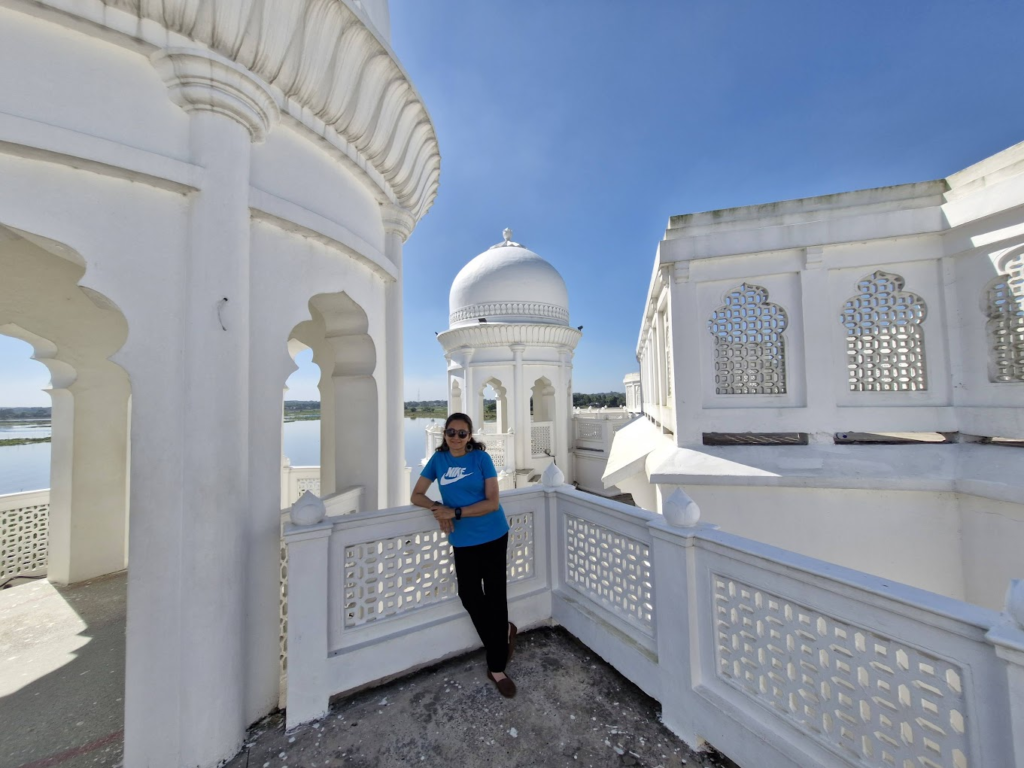
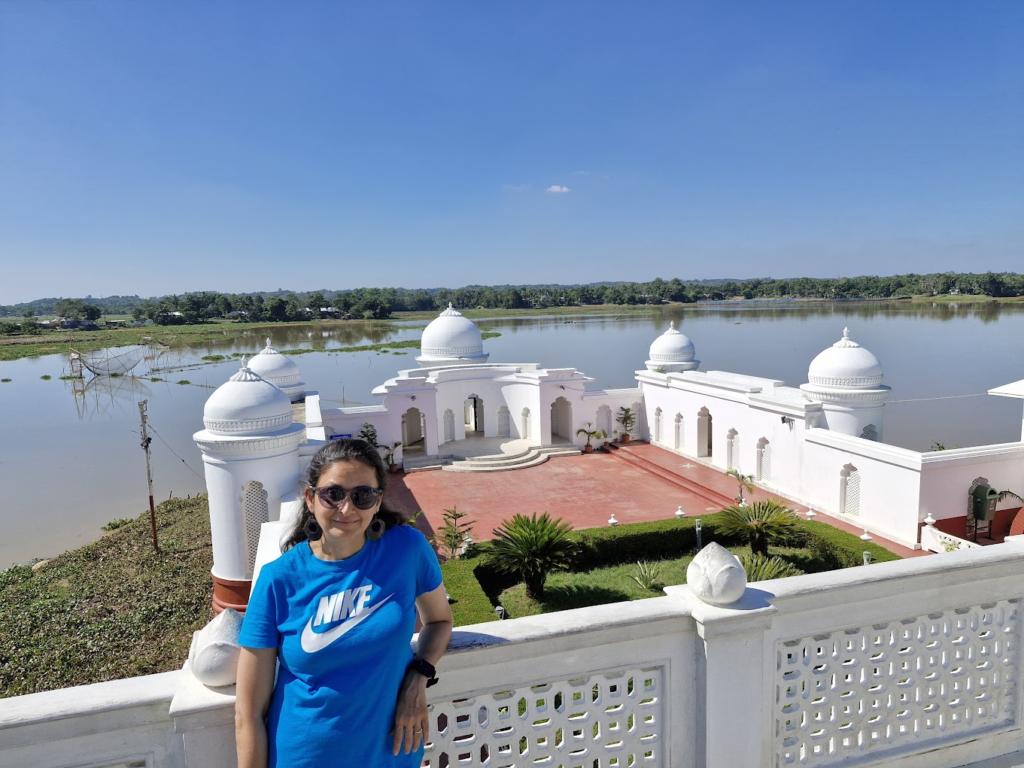
We also passed the ornately built train station of Udaipur.
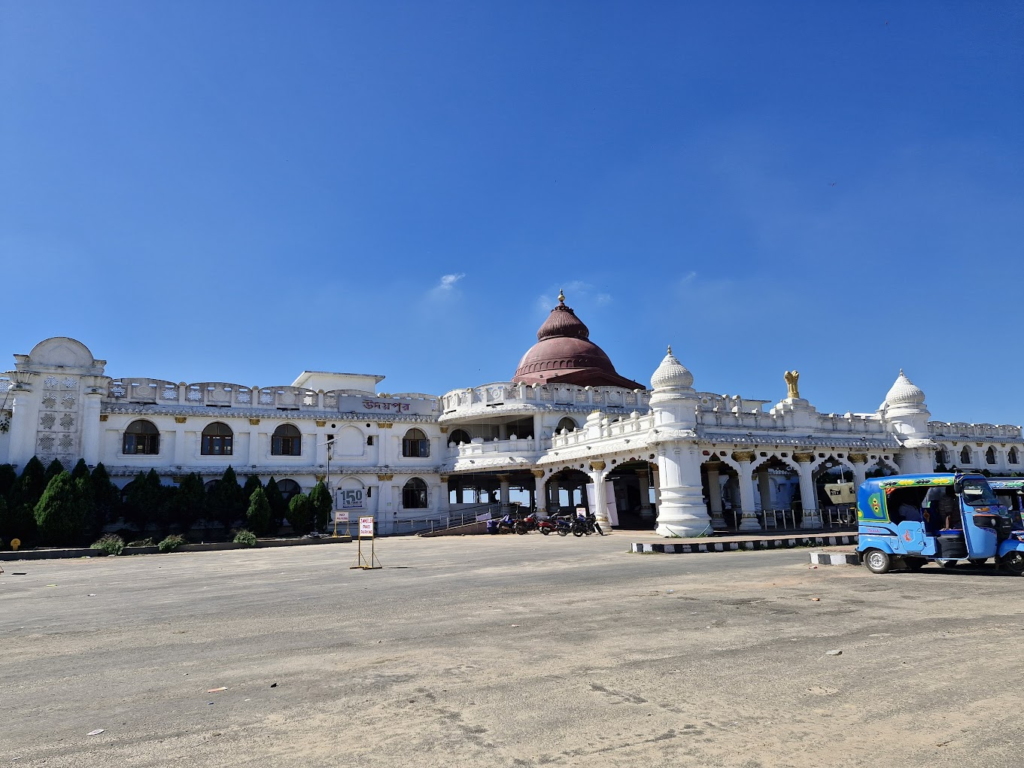
Next stop was the Chaturdash Mandir (Fourteen Gods and Goddesses Temple). The head busts of 14 Indian deities are placed at this temple. The dome is surmounted by a stupa-like structure which reveals traces of Buddhist influence. This temple was built in honour of fourteen deities, together called the Chaturdasha Devata. Devotees visit the temple for the kharchi festival.
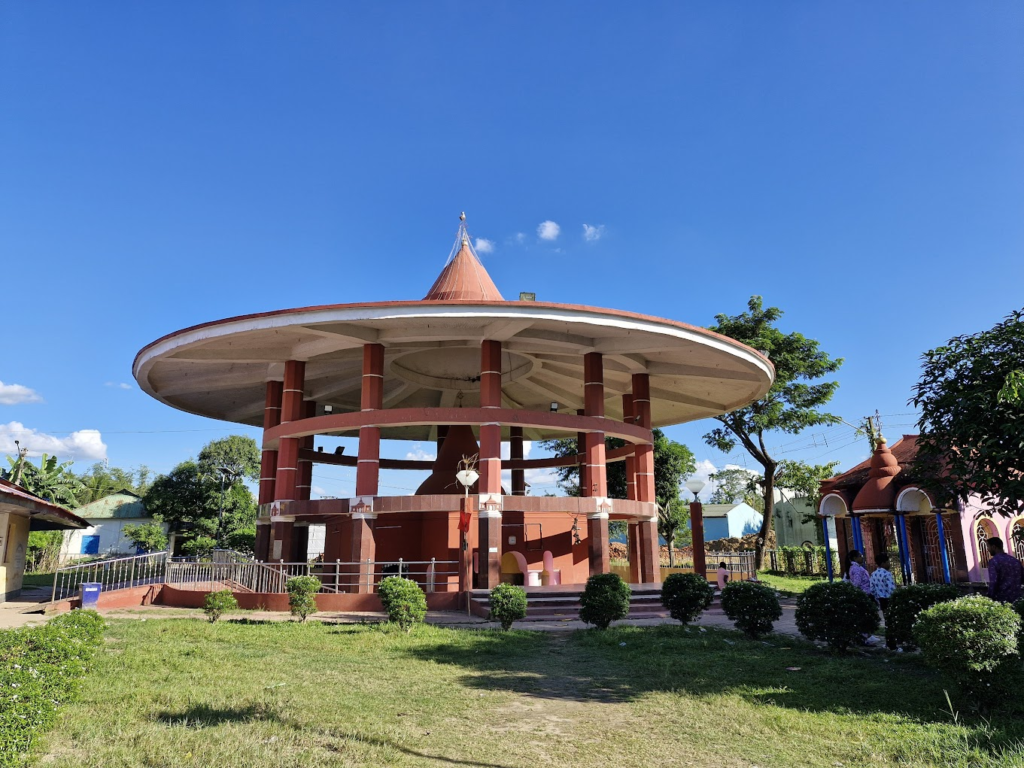
We returned to Agartala and visited the Ujjayanta Palace, the seat of the Tripura kings. It is the state museum of Tripura and former royal palace of the princely state of Tripura. It was built by Maharaja Radha Kishore Manikya in 1901. It housed the State Legislative Assembly between 1973 and 2011. The palace primarily showcases the lifestyle, arts, culture, tradition and crafts of communities residing in northeast India, along with many stone sculptures of the Manikya dynasty. The palace, the grounds and the museum are worth a visit. It provides deep insight into the culture and history of Tripura.
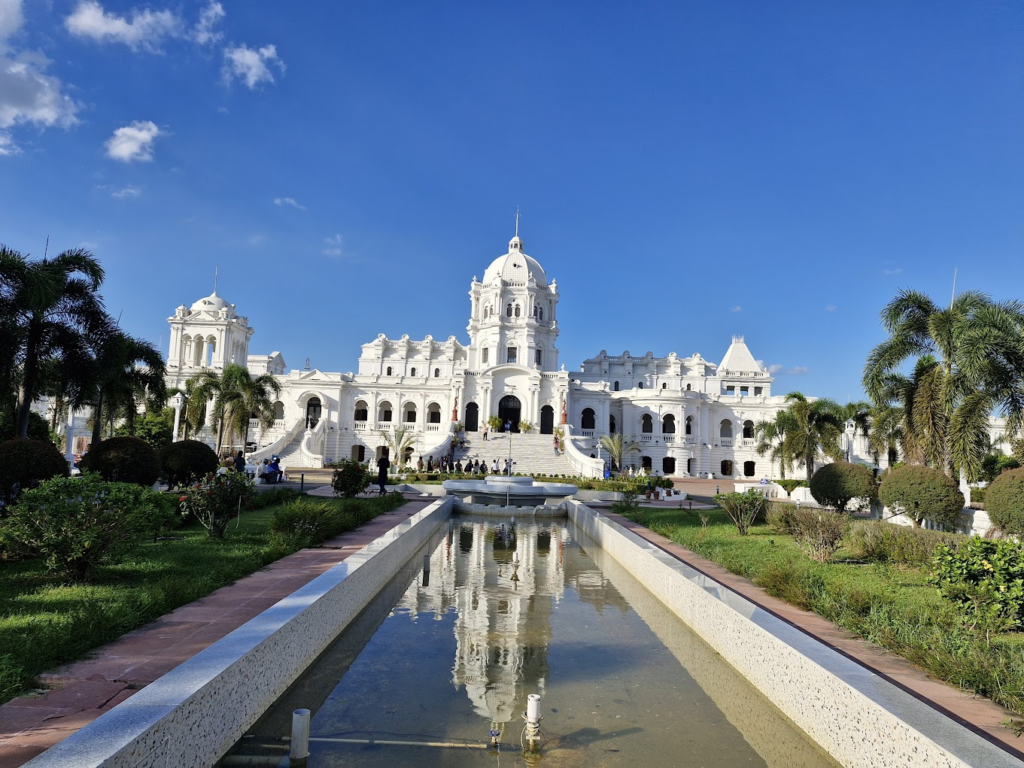
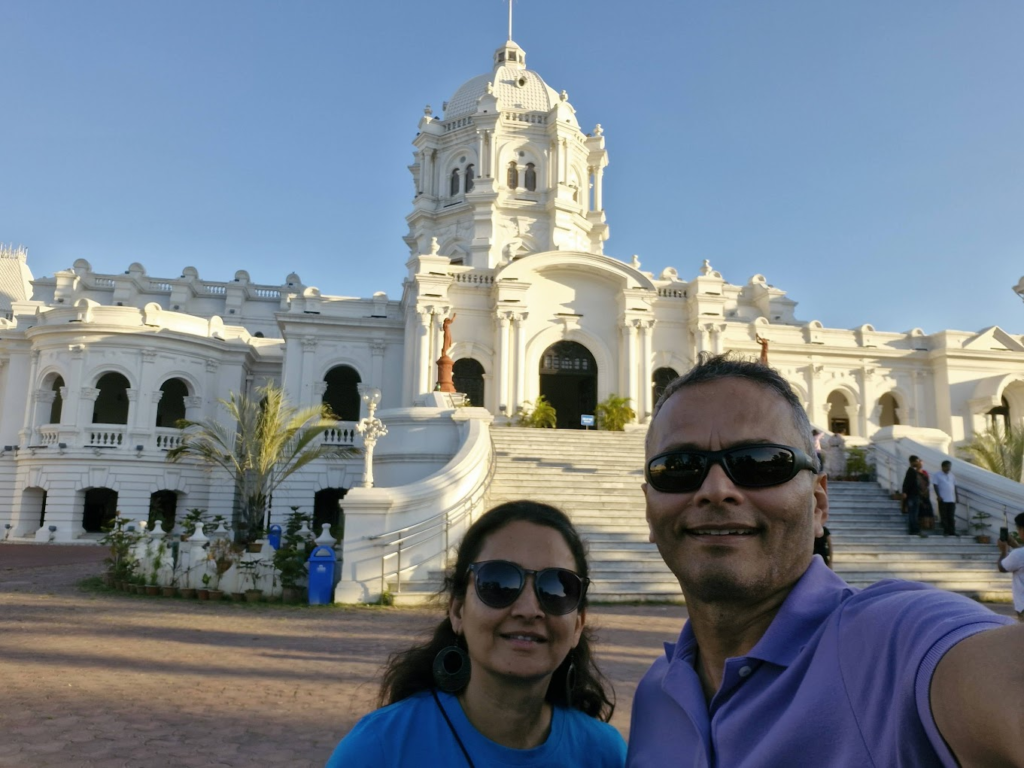
Gedu Mia Mosque was built by a humble ‘Mahut’ (elephant driver) who then became a motor garage worker and a driver. Gedu Mia’s stars smiled on him late in life when he bagged a lucrative contract of Rs 7 lakhs from Tripura’s last princely ruler Maharaja Bir Bikram Kishore Manikya (1923-1947) for construction of an airport in Narsingarh area, northeast of Agartala town in the year 1942. He accomplished his task and made a huge profit, a part of which went into building this mosque at Shibnagar. Built of imported white marble stones, this exquisitely beautiful mosque is endowed with a large number of minarets, towers and art works on doors, fronted by a sprawling green space for religious congregations including weekly ‘Jumma Namaz’. The mosque is not terribly impressive.
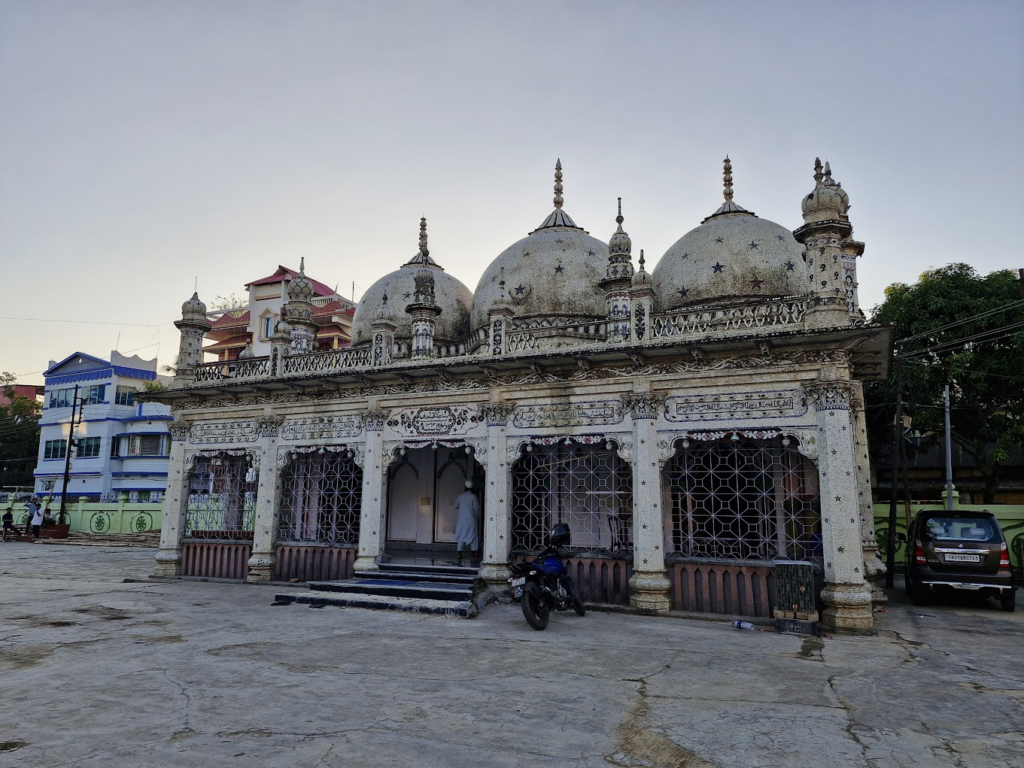
Jagannath Temple is adacent to the Ujjayanta Palace. Built by the Maharaja of Tripura in the 19th century, the temple is dedicated to the Hindu Gods Jagannath, Balabhadra and Subhadra.
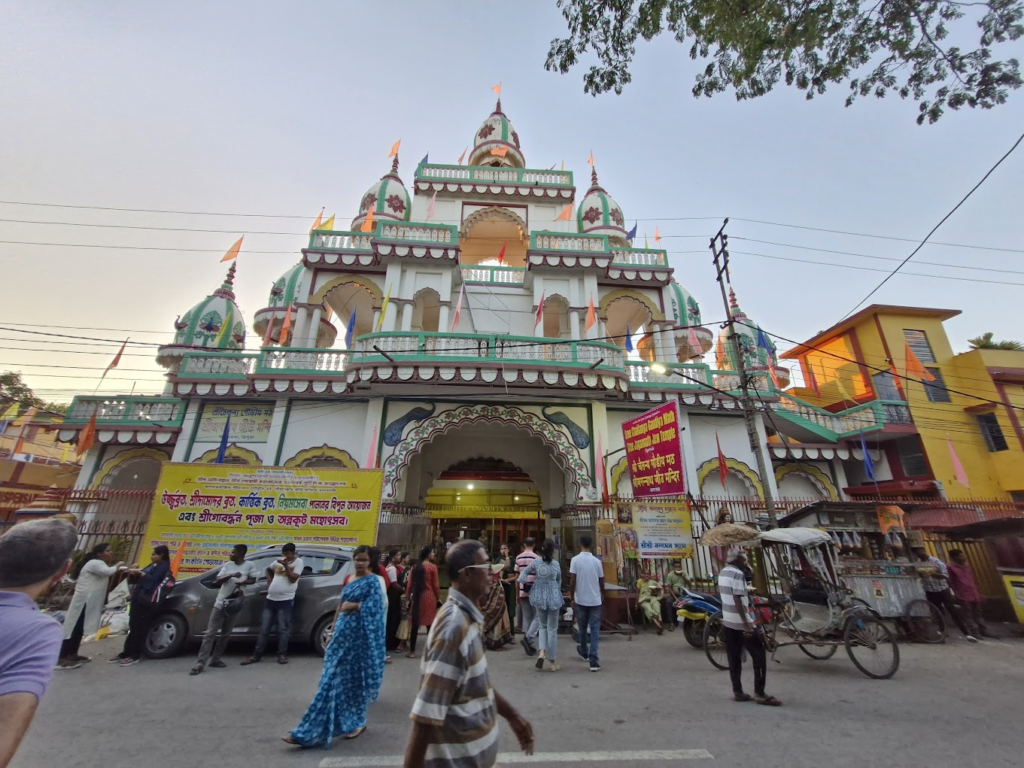
We also visited Malancha Niwas, near the palace grounds. This is the home where Rabindranath Tagore lived when he visited Tripura. He was very close to the Tripura kings and visited Tripura 7 times. Tripura is heavily influenced by Bengali culture and mostly speaks Bengali.
As the sun set on Agartala, we headed back to the hotel Polo Towers. We had dinner at the hotel.
Sun, Nov 10: Agartala -> Pune
Our flight to Pune was at 2.40 pm. We left the hotel at about 11 am and went to Heritage Park. Here, they have created a mini Tripura with its landscapes, its sights and its railway station. It takes about 20-30 mins, but it is worth visiting this little park.
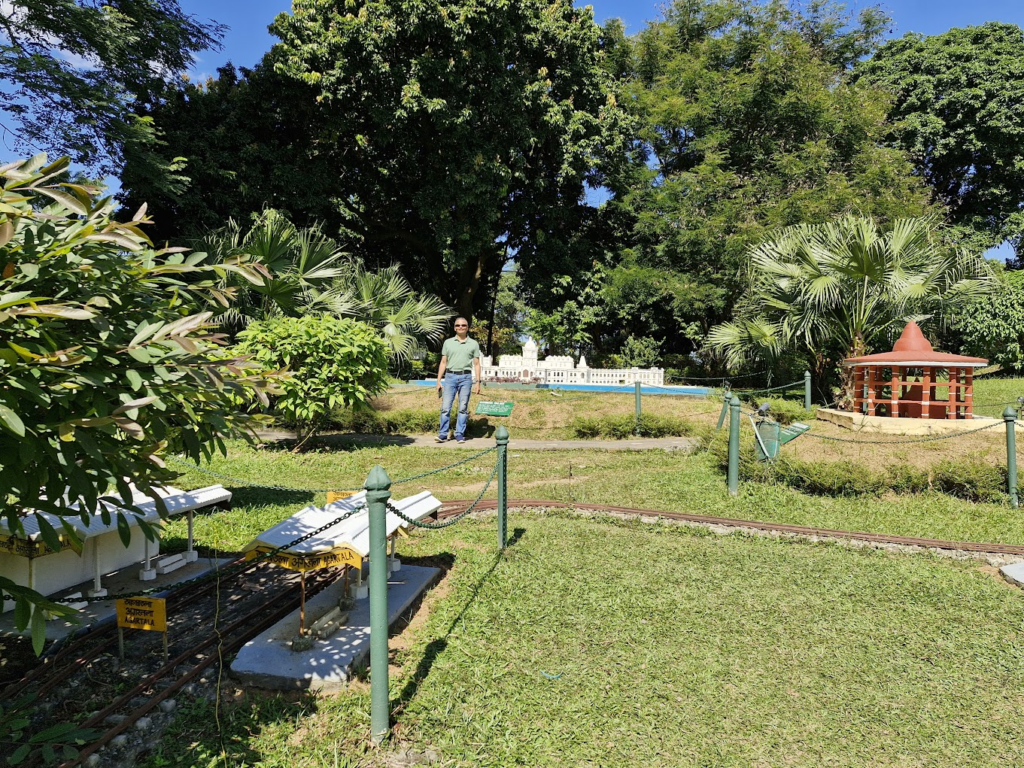
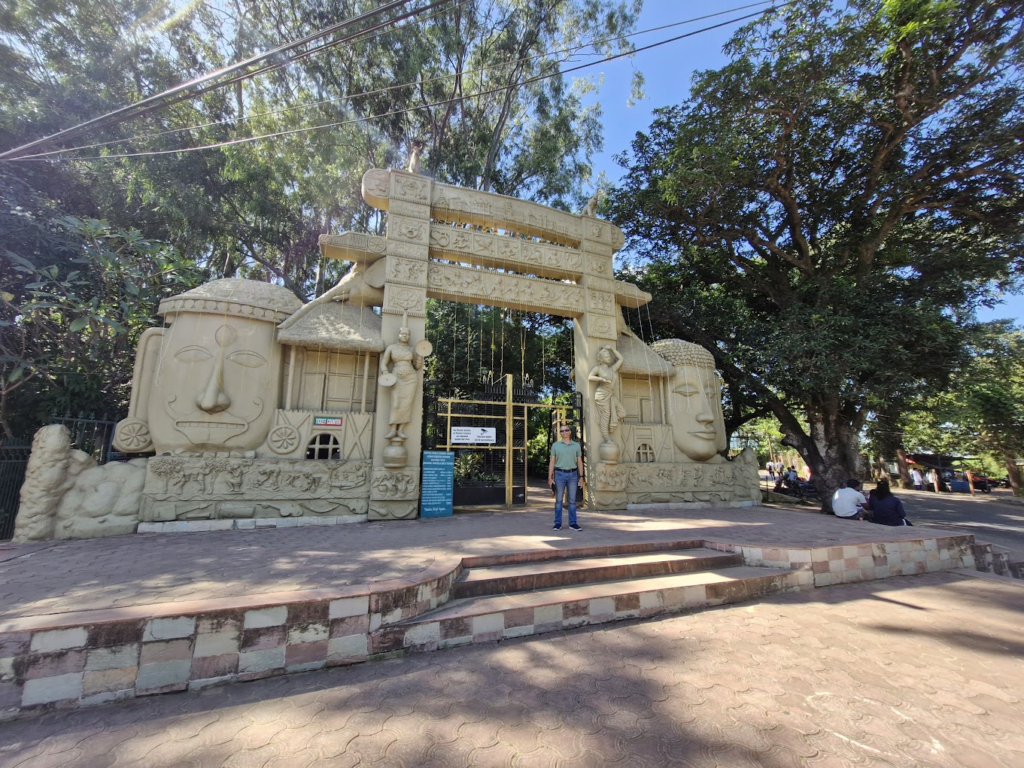
We also stopped at the Nehru Memorial Park. It is just a nicely landscaped park.

Final stop before the airport was at the 1971 War Memorial which was a tribute to the 57th Mountain Division of the Indian Army that showed valor in the Bangladesh Liberation war of 1971. It is a nice 15 min visit.
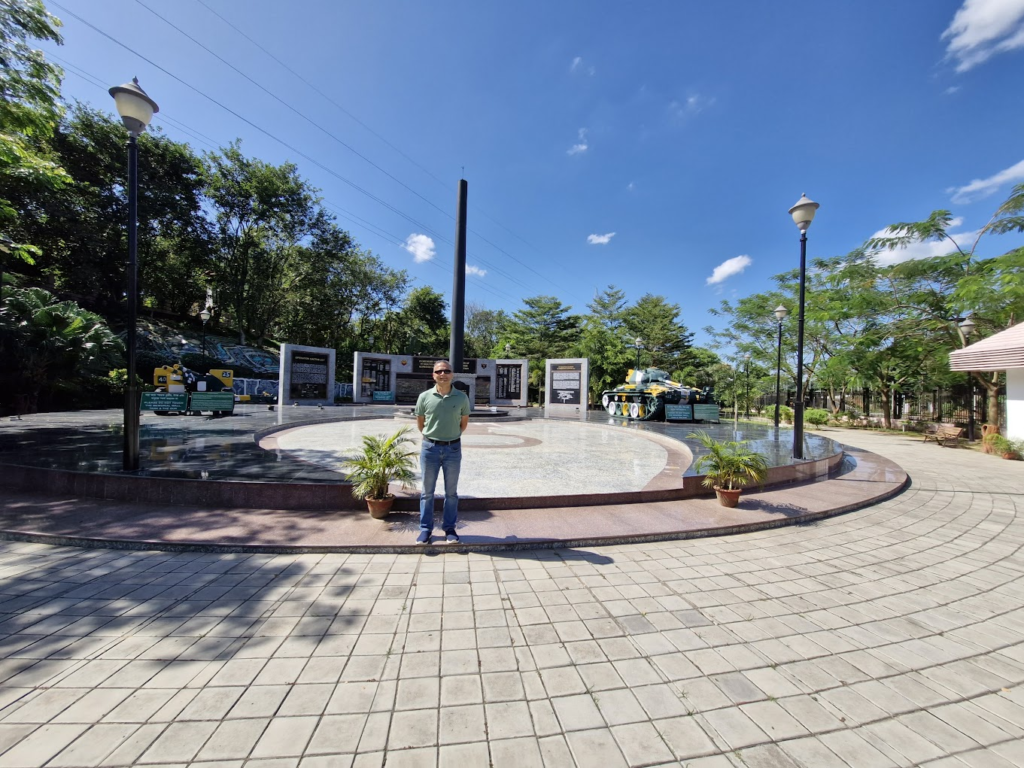
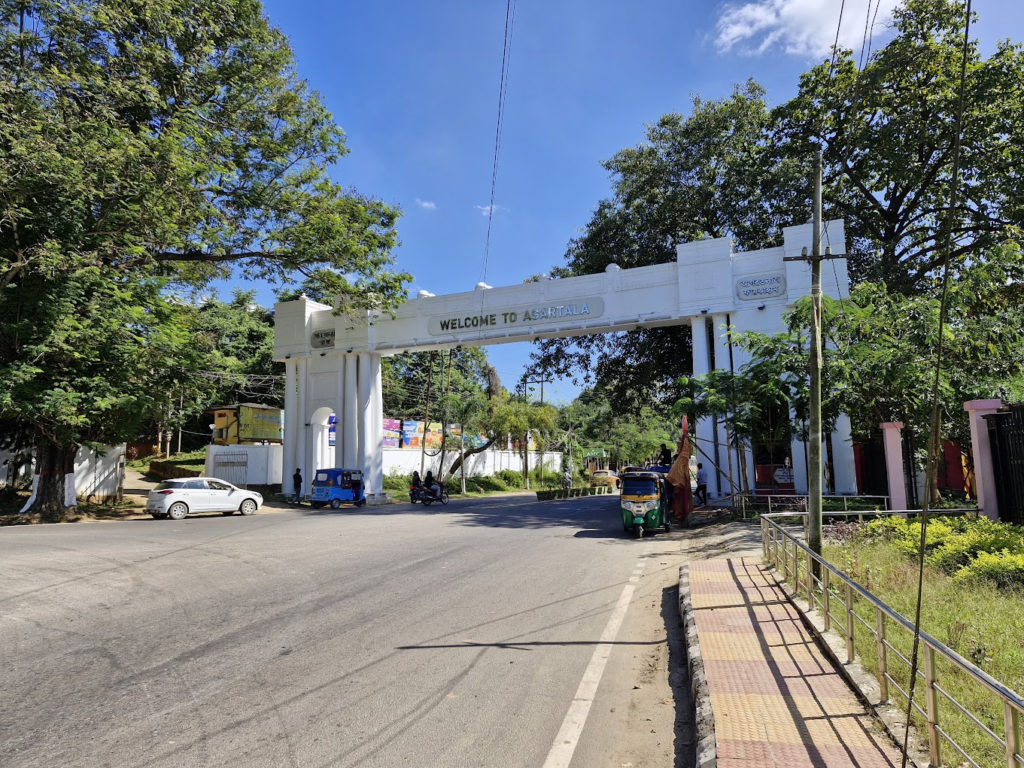
We arrived at Agartala airport by 12.15 pm and took the flight to Pune via Guwahati. In Guwahati, we went to a PVR in Guwahati city and saw the movie “Singham Again”, had dinner and returned to Guwahati airport.
Our flight from Guwahati was at 11 pm, reaching Pune at 2 am. It was the end of a wonderful trip.







